

Throughout the MCT, which section is the hardest to reach?
It is, no doubt, Mt. Kinkasan Island 金華山, the last one of the three “islands” sections.
It is not only the hardest to reach but also the most expensive place to get to — at least for us- and the most thorough preplanning is required.
Too many challenges for MCT hikers to overcome
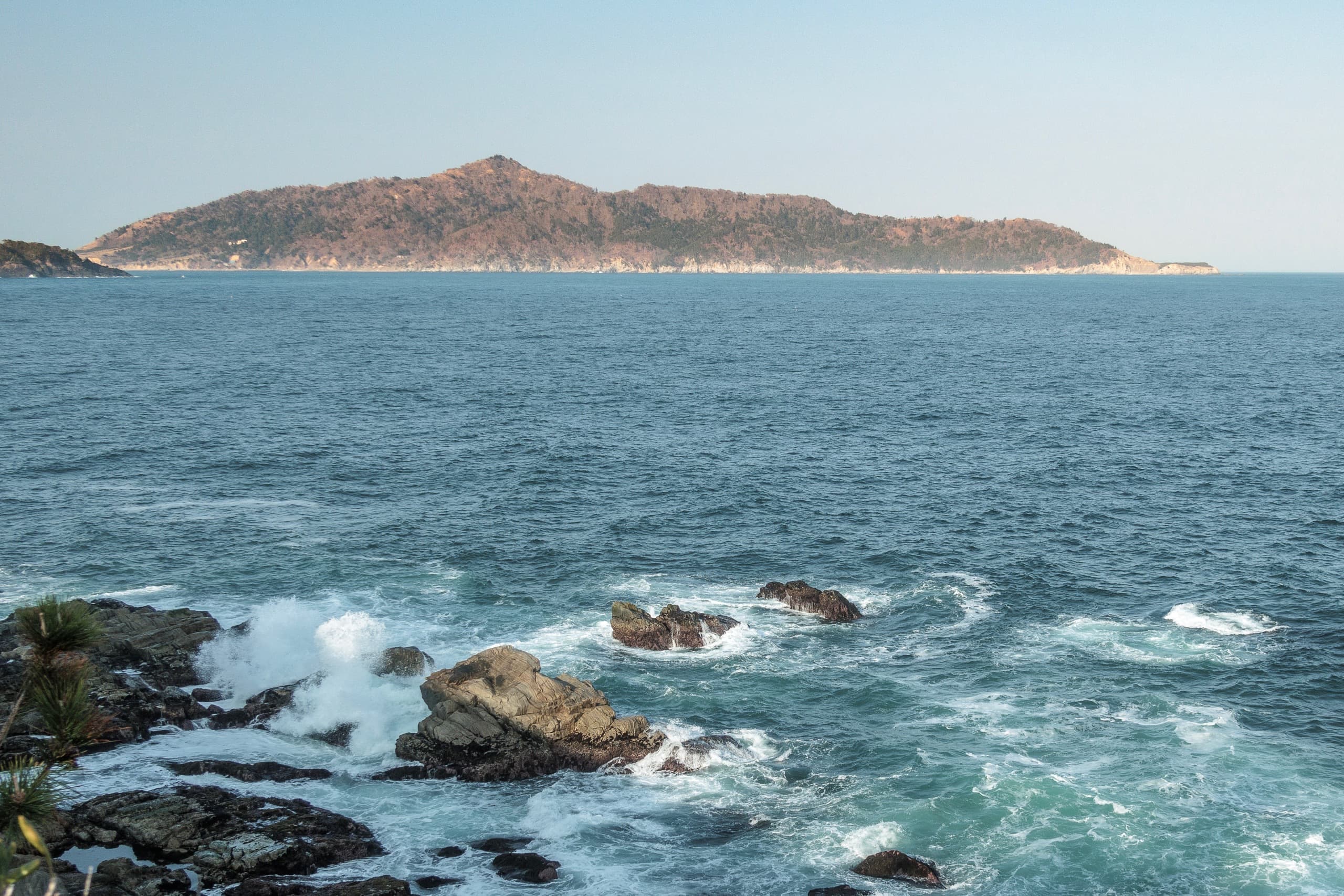
As it is named Kinkasan Mountain, the island is a freestanding mountain sticking sharply out of the ocean.
Mt. Kinkasan is listed as one of the three most sacred mountains in the Tohoku region, and there is nothing else on the island, but an old shrine with over 1270 years of history, Koganeyama Jinja 黄金山神社.
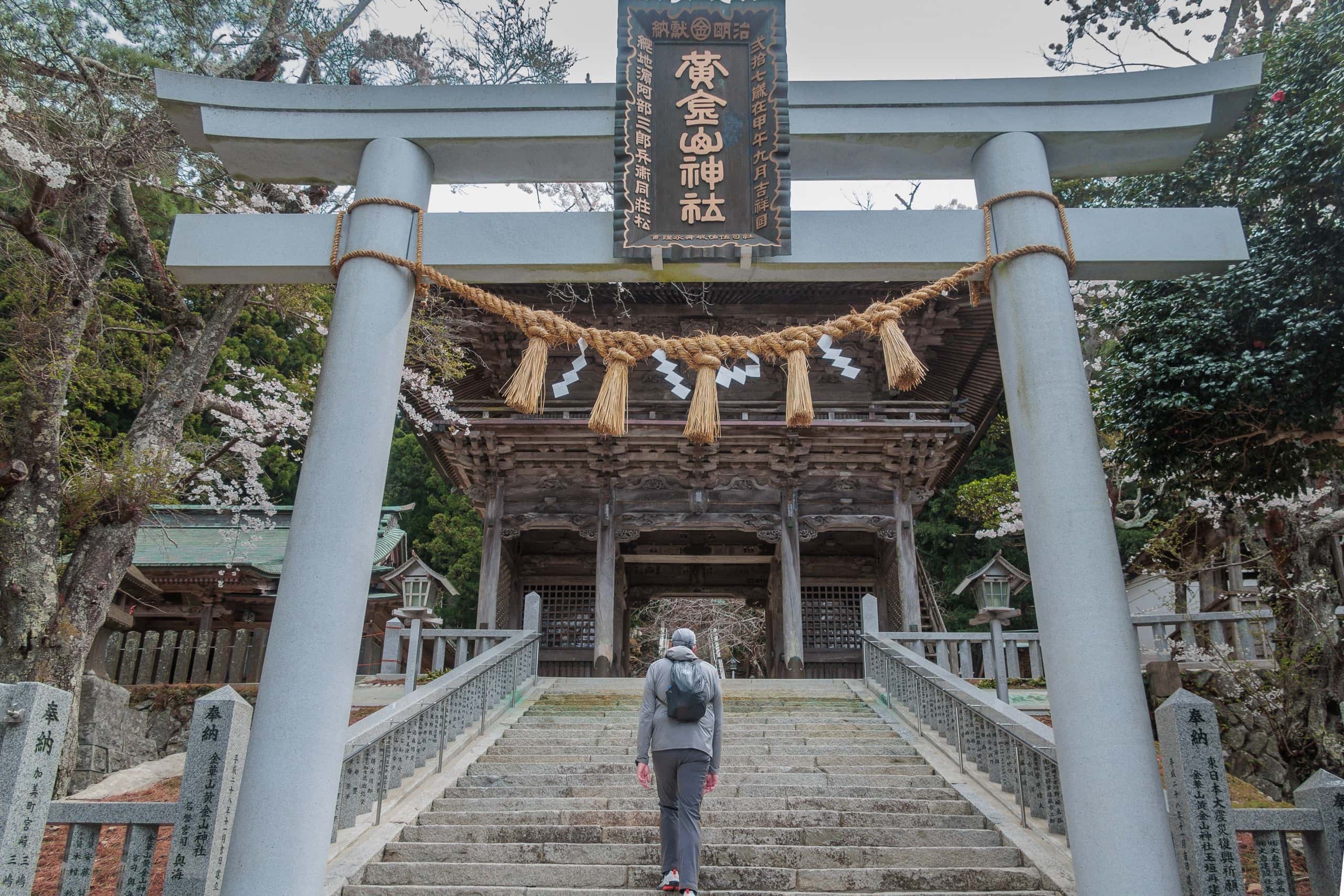
Kinkasan means the mountain of golden flowers, and Koganeyama Jinja is the Golden mountain shrine.
People believed making a yearly visit to the shrine for three continuous years ensures you no financial struggle through the rest of your life.
So, it is already quite a popular tourist destination in Tohoku for a long time without the MCT route.
However.
Today, the regular ferry to the island runs ONLY ONCE A WEEK, only on Sunday.
— ouch.
Just to rub salt in the wound, the ferry makes only one round trip a day.
When I first found this shocking fact, I immediately responded, “WTF were they thinking!?” Here, “they” means the people, whoever they were, who thought it was a good idea to draw a long-distance trail line through this island when the only travel option to there was available only once a week, especially when the long-distance trail was meant for thru-hiking, not the collection of many day-hike courses.
We actually got lucky, and our planned day to hike Mt. Kinkasan happened to fall on a Sunday without carefully calculating and adjusting the day-by-day distances of the previous section.
Otherwise… do we have to wait till next Sunday? Seriously?
Fortunately, another fishery port town, Onagawa 女川, has a regular ferry to Mt. Kinkasan Island.
Although it is still only one round trip and only on Sunday, it usually takes two or three days of hiking between Ayukawa and Onagawa.
On the MCT official map vol. 8, Kinkasan may look like the only way to get there is from Ayukawa. But if you are taking the northbound and have to walk the Ayukawa area during the first half of the week, keep going forward, and you can take the Kinkasan ferry from Onagawa.
So, Yes, we don’t have to be stuck in Ayukawa for a week just to wait for the next Sunday ferry.
However.
The Ayukawa Ferry stays at the island only for 1 hour and 40 minutes.
The Onagawa Ferry is not much different, staying 10 minutes longer, for 1 hour and 50 minutes.
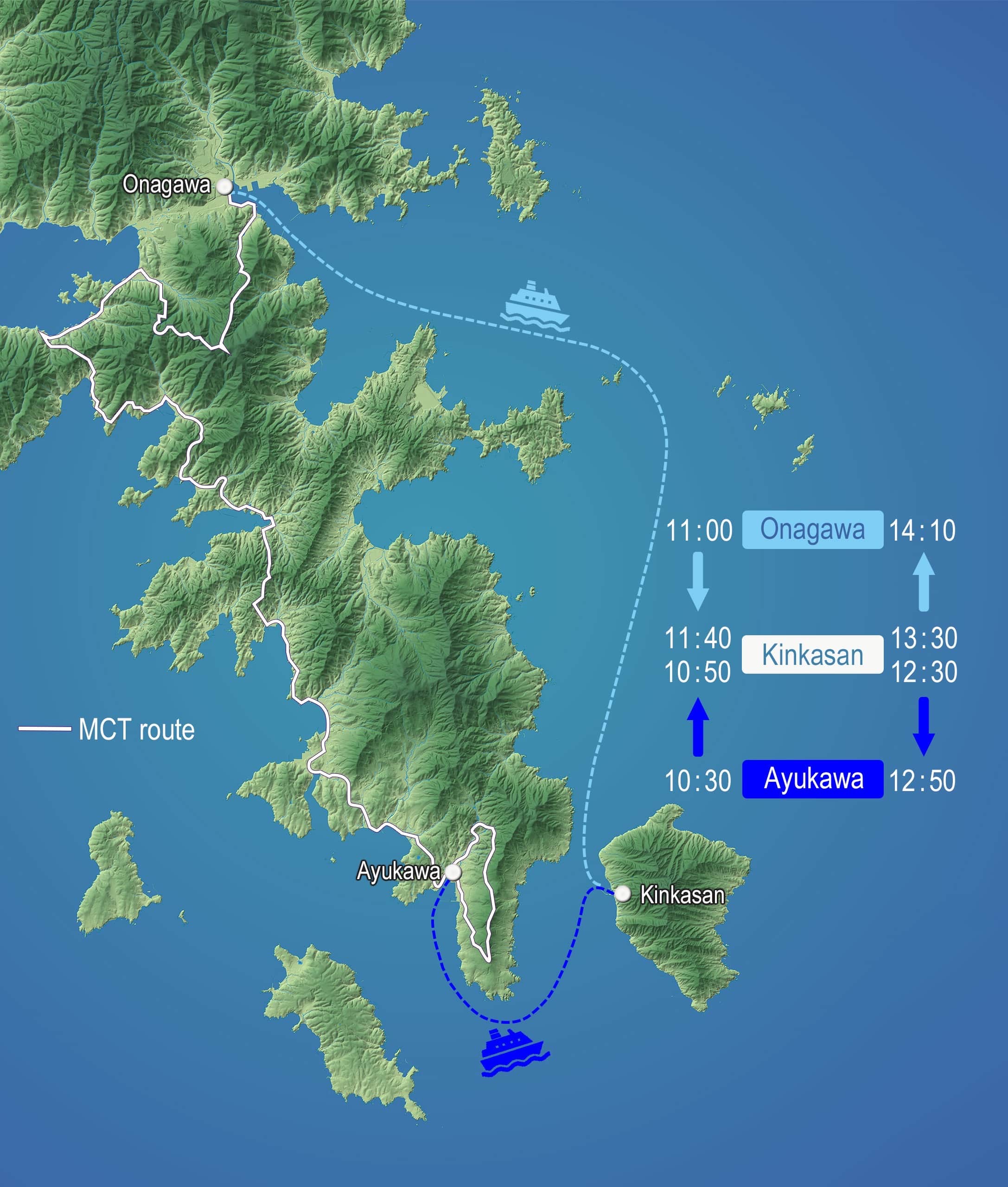

As these regular ferries are meant for the shrine visitors, 100 minutes is more than enough time to walk up to the shrine, look around, play with the sacred deer walking freely in the shrine area, and get back to the ferry landing area.
But the MCT route on Mt. Kinkasan island is almost 6km, including steep climbing up on one ridge of Mt.Kinkasan to its peak, an altitude of 444m, and walking down on another.
A fast trail runner might manage to run all around this and make it back to the ferry within 100 minutes, but we are absolutely not. Probably, most MCT hikers would not, either.
Besides, we don’t want to spend time on this island just dashing up and down without checking out the shrine, admiring views from the mountain, and especially hanging out with deer.
But if we lose this 100 minutes game and the time is up, we would be left alone on the island with the deer and some monkeys for the next seven days.
That sounds scary, doesn’t it?
Well…the shrine has accommodation, 10000 yen per person for a night , including two meals and participation in the morning fire prayer ceremony, so we don’t have to survive in the wild. But the question is, would we want to pay 20000 yen multiplied by 7 nights?
Later, we found that some past hikers, particularly those who walked section by section during weekends or vacations, made the time they could stay on the island longer by the combination of Ayukara and Onagawa ferries.
Taking the Ayukawa ferry to the island and coming back by the Onagawa one allows us one hour longer to be on the island.
But the 2 hours and 40 minutes for the Kinkasan trail’s distance and height chart still don’t seem enough for me to feel fully confident.
More importantly, in this way, we have to come back all the way to Ayukawa so as not to skip the section between the two port towns. As of July 2023, according to Sunday’s train/bus schedule,
| 1. | Onagawa port | 14:10 | by Walk | Onagawa station | 14:20 |
| 2. | Onagawa station | 14:55 or 16:33 | by Train | Watanoha Station | 15:09 or 16:47 (¥210) |
| 3. | Watanoha station | 17:50 | by Bus | Ayukawa port | 18:40 (¥1210) |
Just so you know, the MCT route in this section is pretty much the same way you just came on the bus.
So, only if you don’t mind walking it back again next day, going back to Ayukawa port from Onagawa on the same day is possible and recommendable…
Is the Sunday ferry truly the only way to travel to/back from Mt. Kinkasan Island?
The answer is, actually, NO.
For the rest six days of the week, and for those who need more time than the Sunday regular ferries allow, so-called sea taxies are available with booking. Sea taxies, the much smaller-sized boats that can accommodate up to 13 guests take you to Kinkasan, whichever day and time you want, all year round.
At a glance on the price chart, it looks 3000 yen for a round trip, while the Sunday ferry’s is 2500 yen.
With only a tiny bit of an extra 500 yen, you can have all daytime to hike on the sacred mountain island. Problem solved! Right?
However.
Beware the fine print at a corner of the price chart, as we always do when we find excellent bargains.
This fantastic 3000 yen fee is applicable only when a sea taxi has more than 5 guests.
So, what do solo or a couple/pair MCT hikers like us have to do?
- Try our luck to see if other solos or couples happen to want to visit the island, so all of us can share a ride.
- Charter a water taxi only for ourselves with 15000 yen
If it was regular time and busy season, we could have high hope for option #1. But in early April 2021, still in the middle of COVID time, there was no way we could rely on miracle-level luck.
After searching around on the internet so hard, we had to come to the conclusion; we had no choice but to charter a water taxi to fully enjoy the hike on Kinkasan Island without overly rushing.
We were trying to convince ourselves that 15000 yen in total for the two of us and, in return, we could be on the island all day long. It was not that terrible price…
HOWEVER.
I was literally stunned when I heard the following explanation over the phone.
The 15000-yen sea taxi charter fee was for the guests whose primary purpose of visiting the island was the shrine. Therefore, their stay on the island should be pretty much as long as the regular ferry passengers and the water taxi would stay and wait at the Kinkasan ferry landing area.
In the meantime, for the guests like us who need to stay there for longer hours, the sea taxi would not just sit there bobbing after dropping us off but return to Ayukawa Port and then come back to Kinkasan to pick us up again.
Meaning: the boat has to make two travels for us. Therefore, the fee is going to be DOUBLE.
— Y.E.S. We paid 30000 yen to charter a sea taxi.
Thirty thousand yen to get to Mt. Kinkasan Island for walking on the MCT.
I don’t know if this double price was a regular procedure all the sea taxi companies around Kinkasan Island always take regardless of the circumstances, or it might be because, as anyone in the tourism industry during the COVID disaster, they had been struggling. We wanted to believe this was the former case. Also, I must emphasize they sounded very apologetic.
So, we decided to bite the bullet to support the local economies that were going through this exceptionally tough time.
No wonder quite a few of the MCT thru-hikers we have met told us that they walked the entire MCT route but skipped only this part in reality.
Visiting Kinkasan Koganeyama Shrine
Ferry/Sea Taxi from AYUKAWA Port
Ferry/Sea Taxi from ONAGAWA
In 2023, the ferry companies resumed the seasonal increase of ferry operations from July to September.
They run ferries on most Saturdays, and on the days the Kinkasan Shrine holds special events—pre-booking is required.
For the details and increased ferry calendar, check their websites.
Throughout this planning process and to this day, I believe it was a ridiculous idea to include Mt. Kinkasan Island in the MCT route when it is so hard to reach and forces so much time and financial challenge on the hikers.
I seriously hope the Ministry of the Environment omits the Mt. Kinkasan Island section if they ever revise the MCT route after all the rebuilding constructions are done, and quite a few parts of the MCT routes are already blocked or changed by new walls and roads.
We booked the sea taxi shortly after we started our walk from the MCT south trailhead in Soma, Fukushima. Still, of course, final confirmation had to wait until the night before our actual travel day to see if the weather condition allowed us to go on board. I thought the beautiful weather all day, while we were walking on Tashirojima and Ajishima islands, should also assure us of a calm ocean the following day.
But oddly enough, the weather forecast consistently said it would rain and windy from the late afternoon.
Our original plan was to stay on Mt. Kinkasan Island until 4 pm to walk around the island even after finishing the MCT route part and get the most out of the precious 30000 yen.
The sea taxi company called me for the final confirmation, and we were relieved that we didn’t have to reschedule. As the boat company man also suggested we should leave the island as early as possible before the hazardous high waves started, we agreed and changed our plan.
Mt. Kinkasan looked very rocky, with its upper part wholly exposed. It is not the place we want to be when it is raining hard and windy.
cross the sea to the last Island
As our hotel was far from Ayukawa’s port and central area, I booked our twin room with two meals package. After the lovely breakfast, western-style dishes for Erik, and Japanese-style for me, the hotel’s free ride service took us to the port for our 9 o’clock sea taxi.
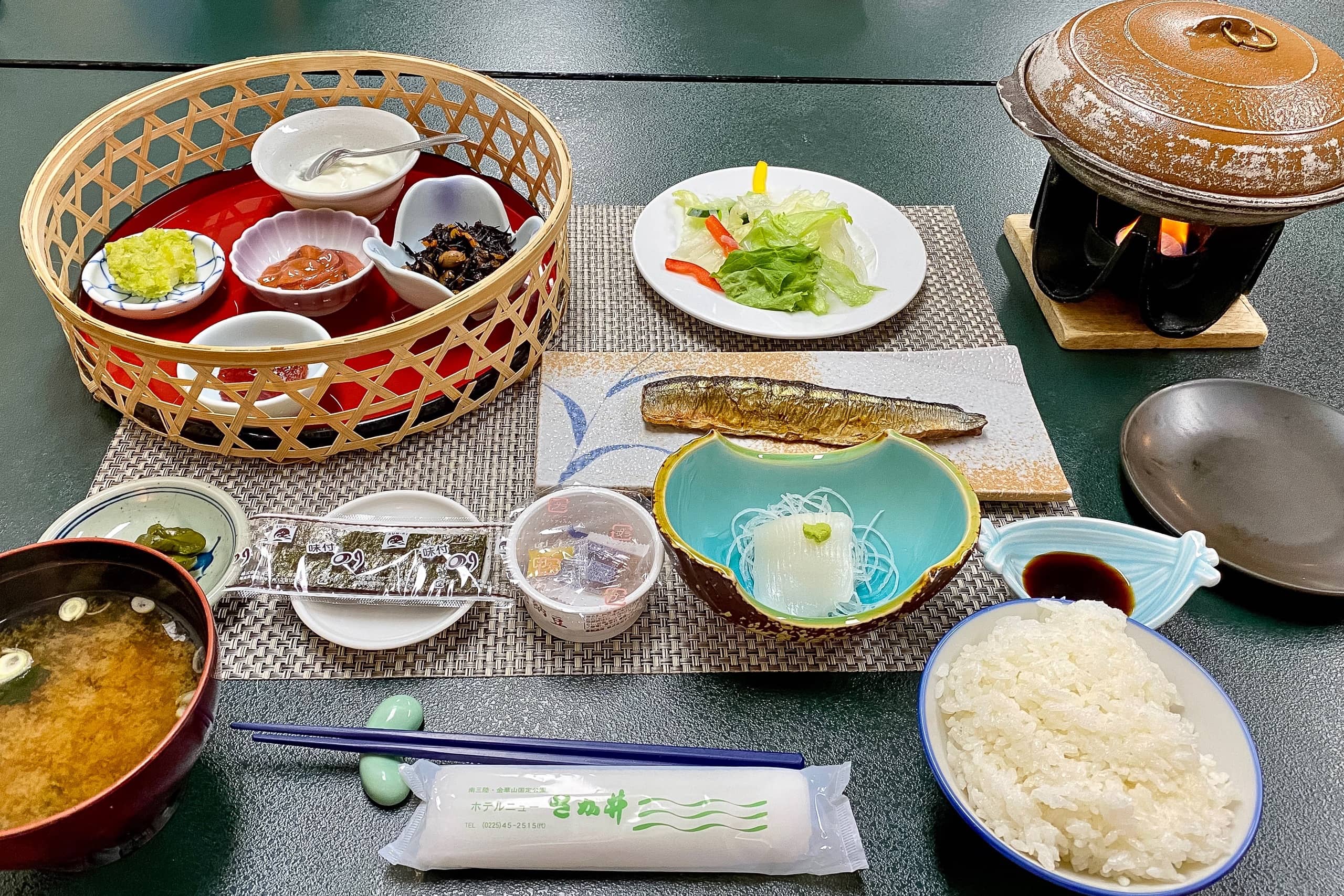
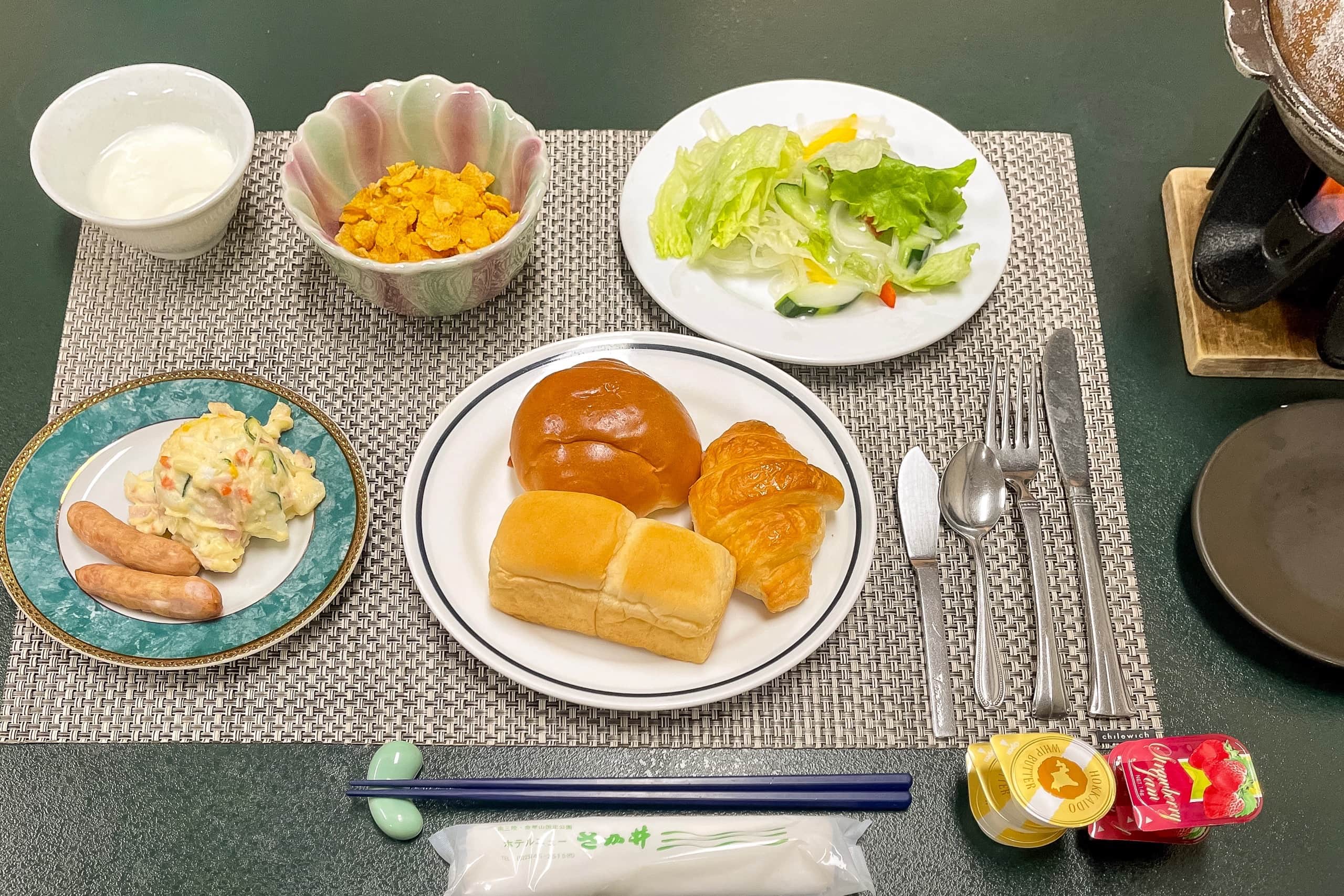
First, we headed to their ticketing office inside the white, sleek, and wide one-story building in the center of the port, Whale Town Oshika ホエールタウンおしか, to pay the fee.
Then, we were quickly escorted to a small passenger boat, and it immediately left for Mt. Kinkasan Island.
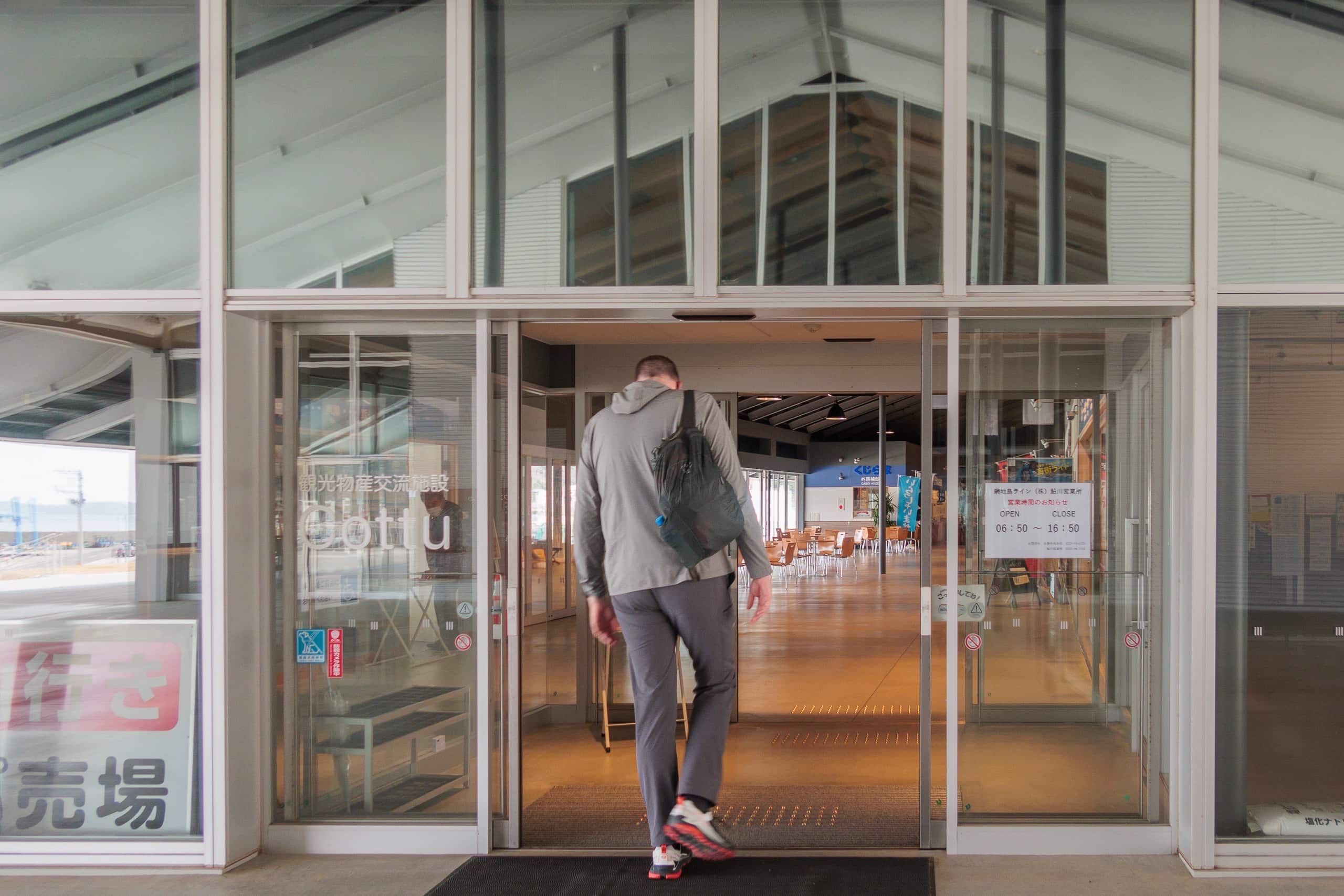
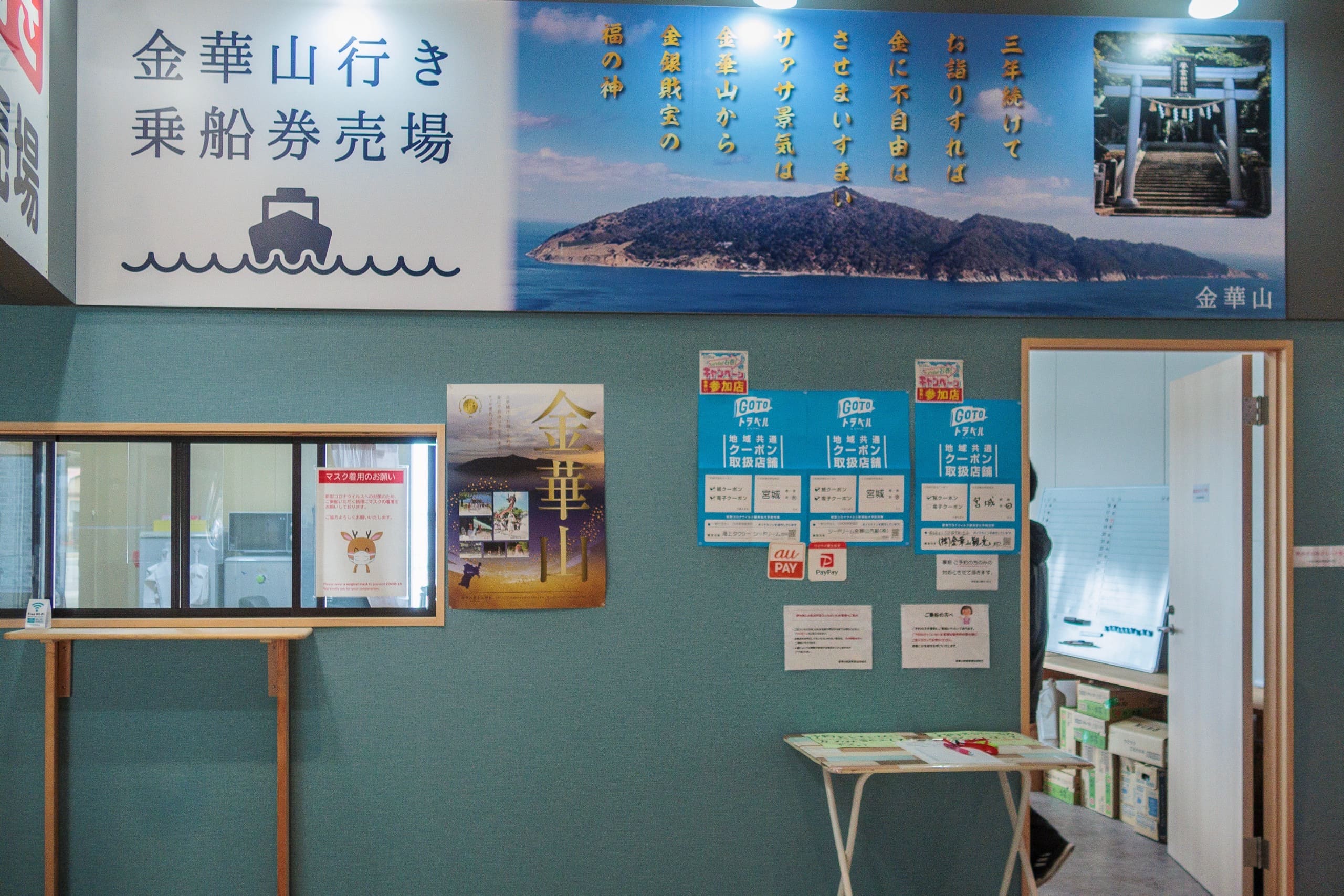
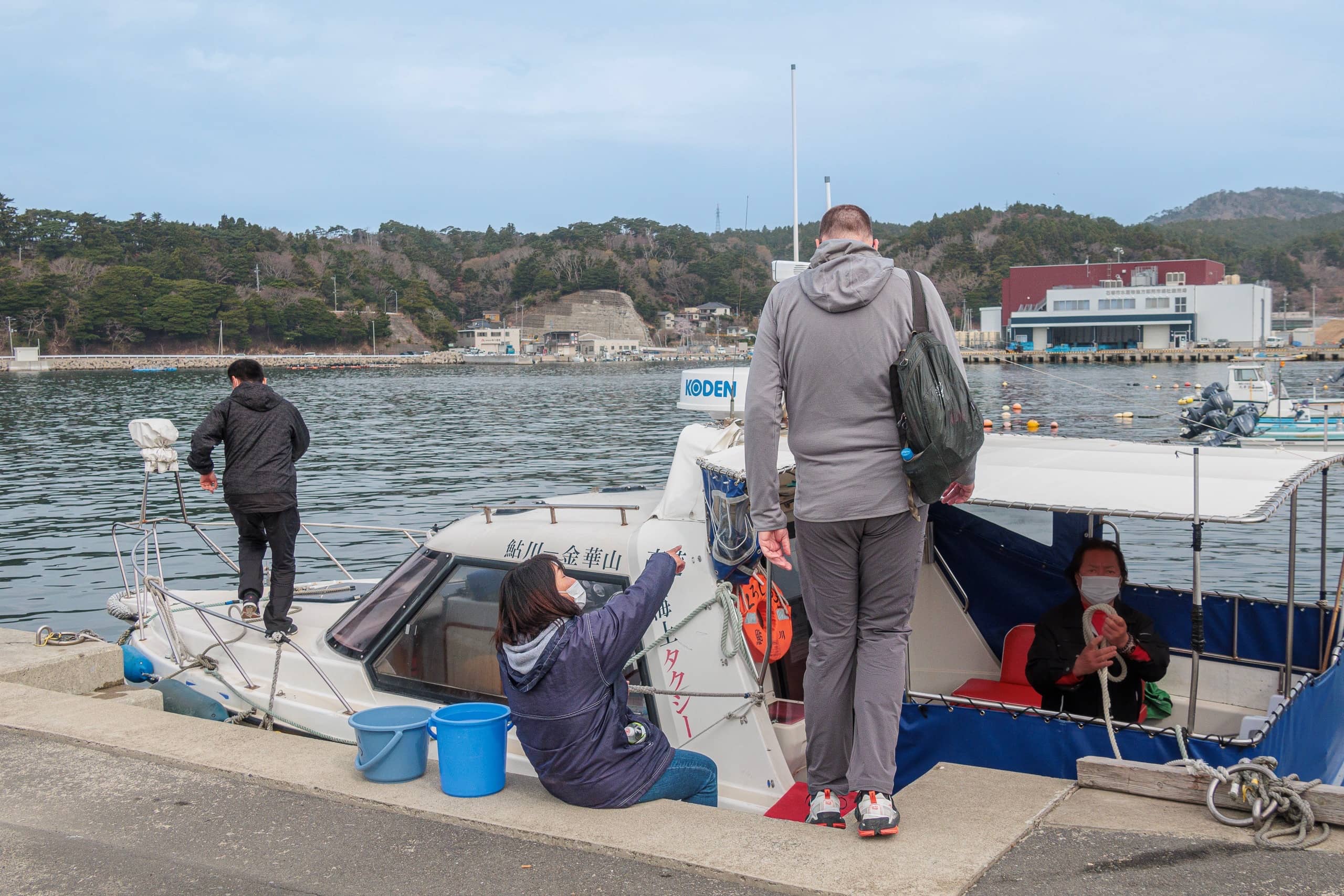
It was a bit cloudy compared to yesterday’s perfect blue sky, but it didn’t look like bad weather was approaching. The boat crew at the port said the sea waves already started getting harder and harder, even if the water surface near the port looked pretty calm.
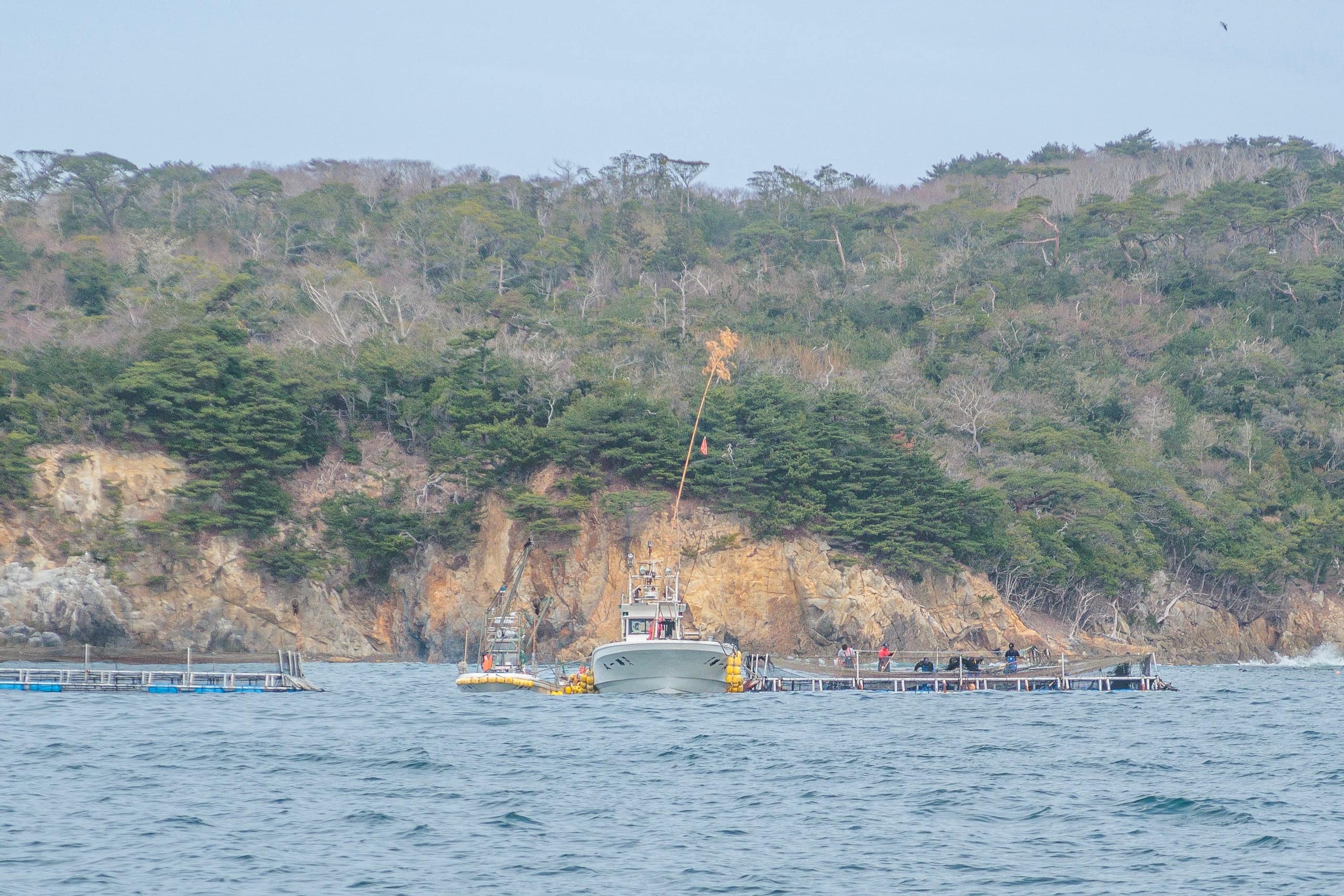
As soon as the boat started running into the open sea, we felt like we were on a roller coaster, and I had to hold a handrail on the boat so tight not to get thrown off my chair. It continued throughout the 20 minutes travel to the island, but thankfully, we didn’t get sick.
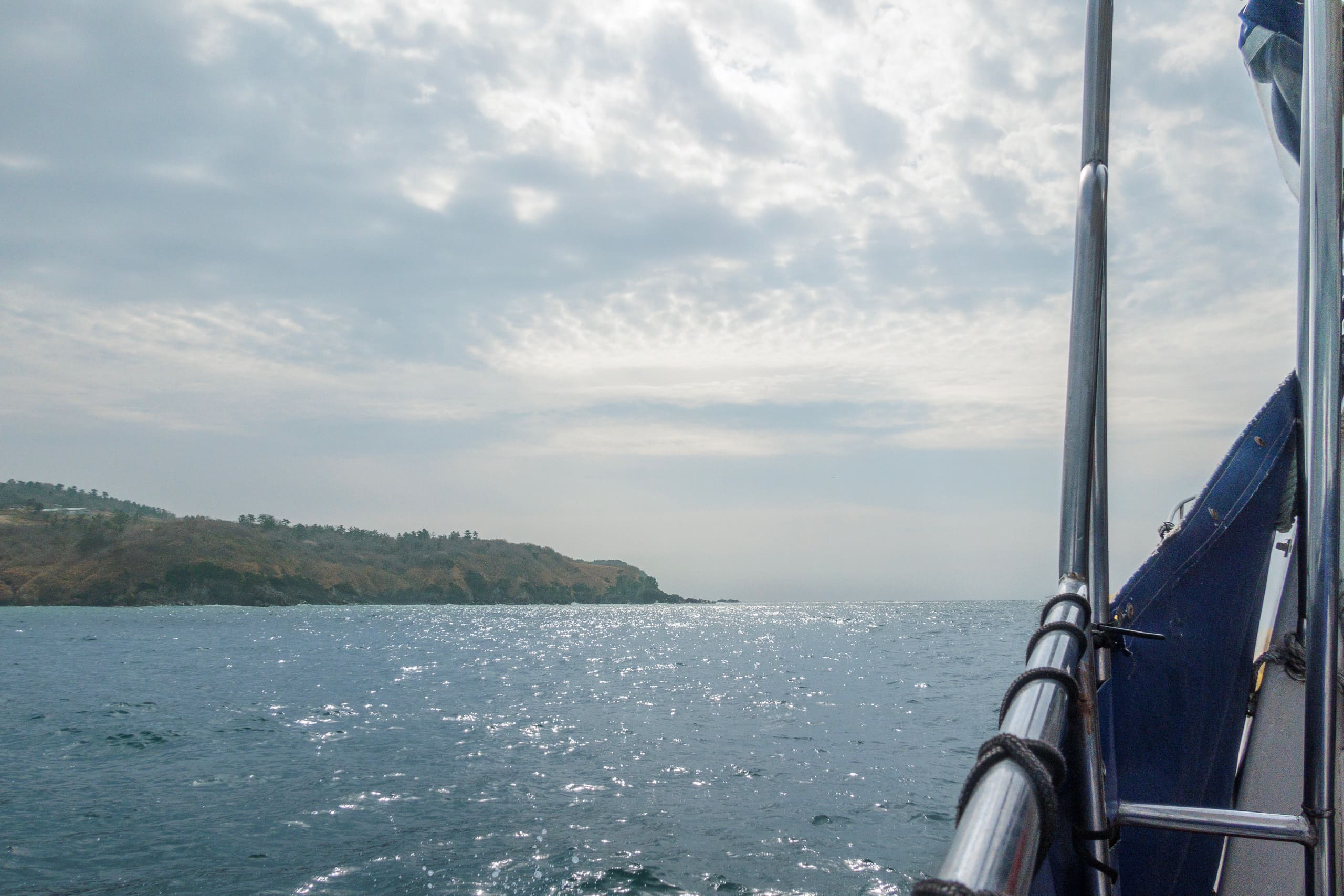
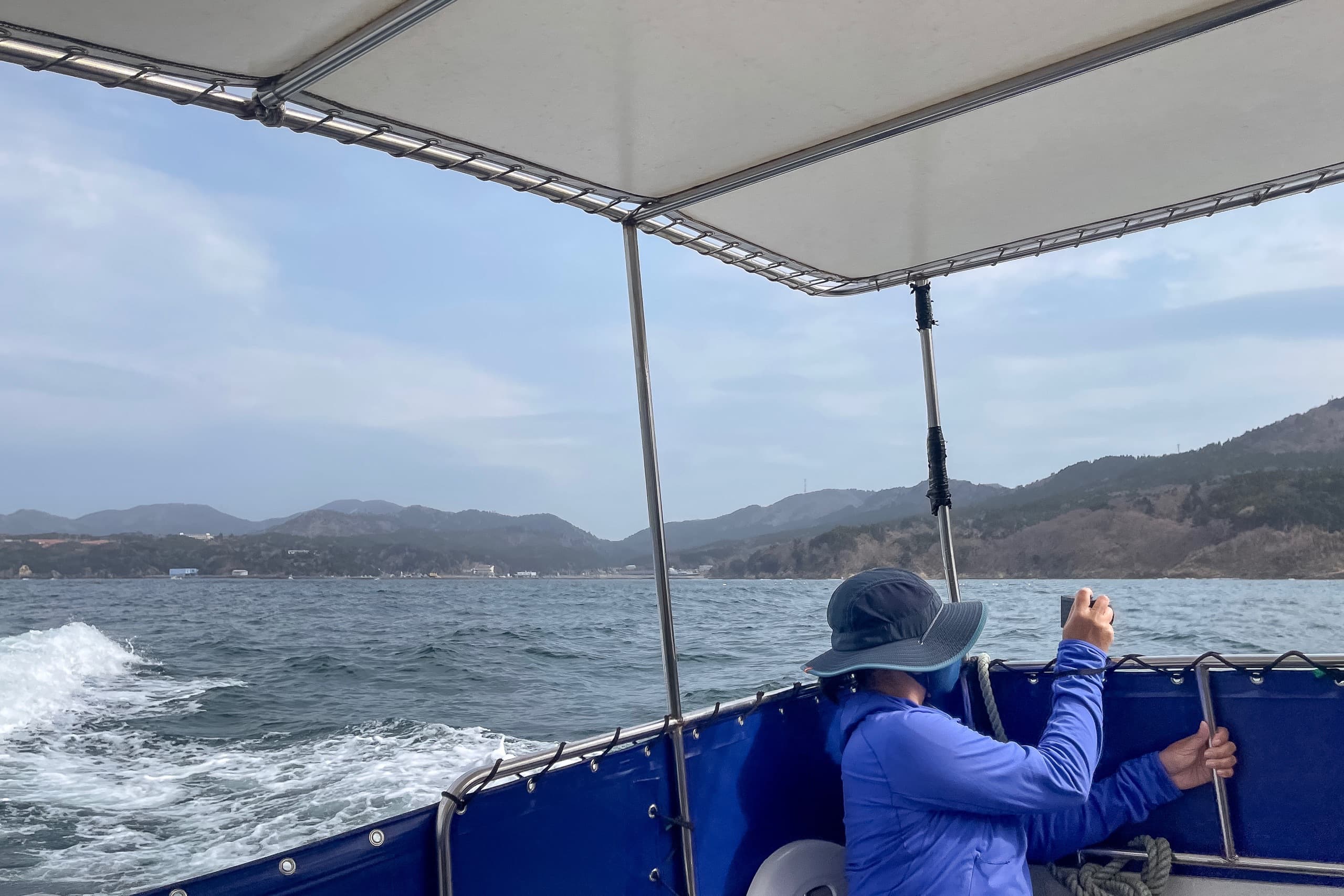
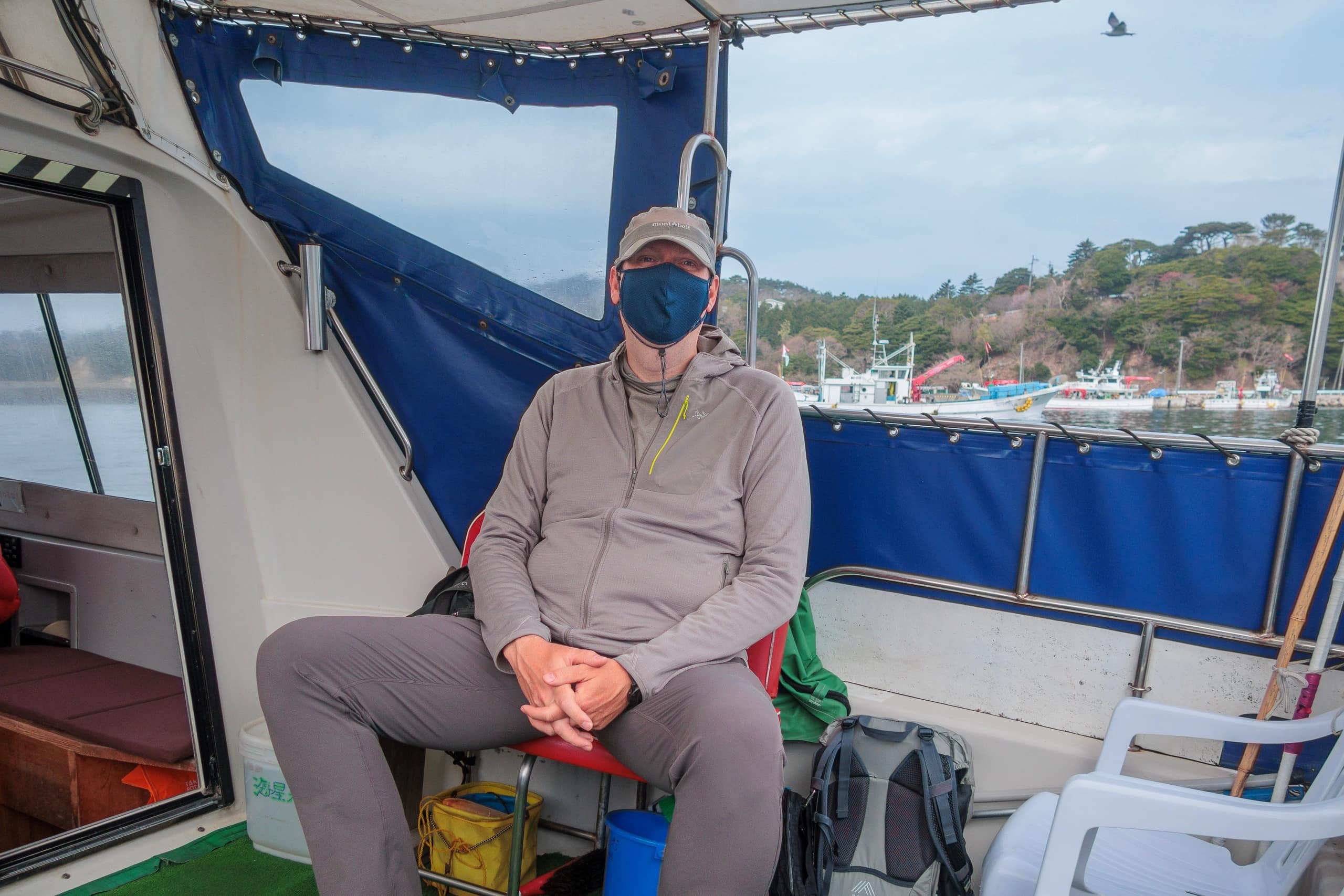
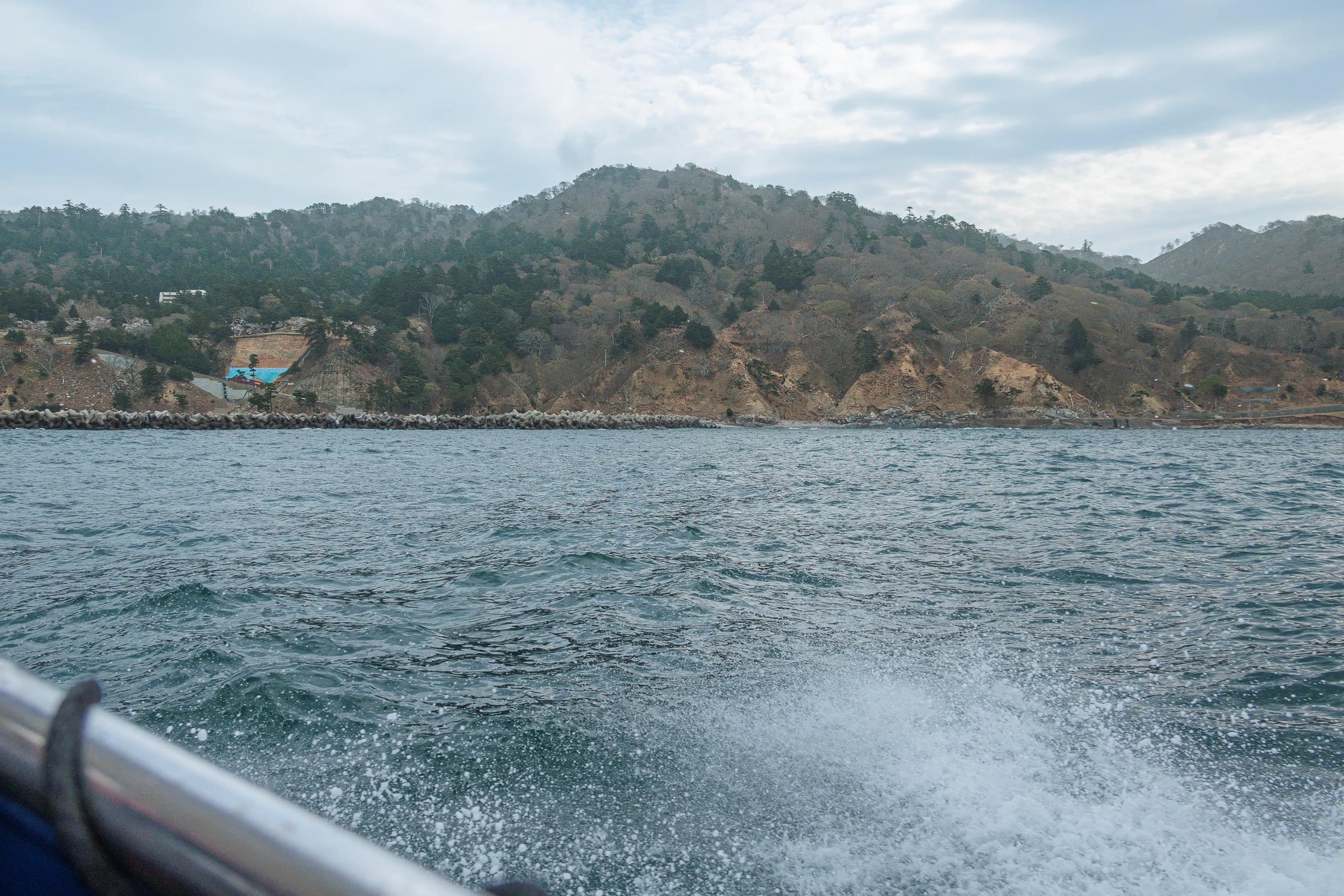
No one else but us was around the ferry landing area on Kinkasan, as it was before the regular ferries’ arrival time.
We waved to the crews, peeked through the windows of the pretty newly-built-looking waiting room, then started walking up to the big blown steel Trii gate.
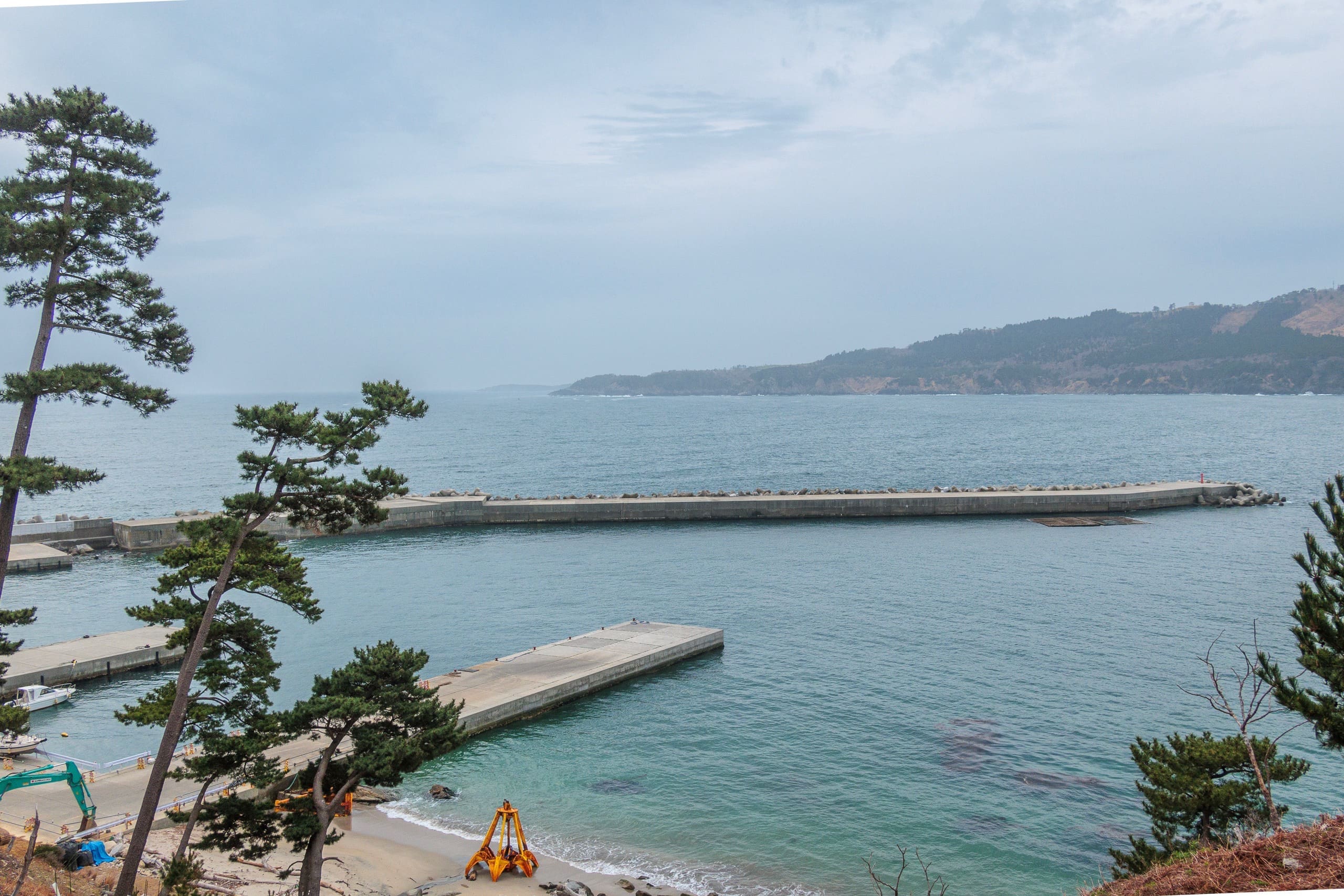
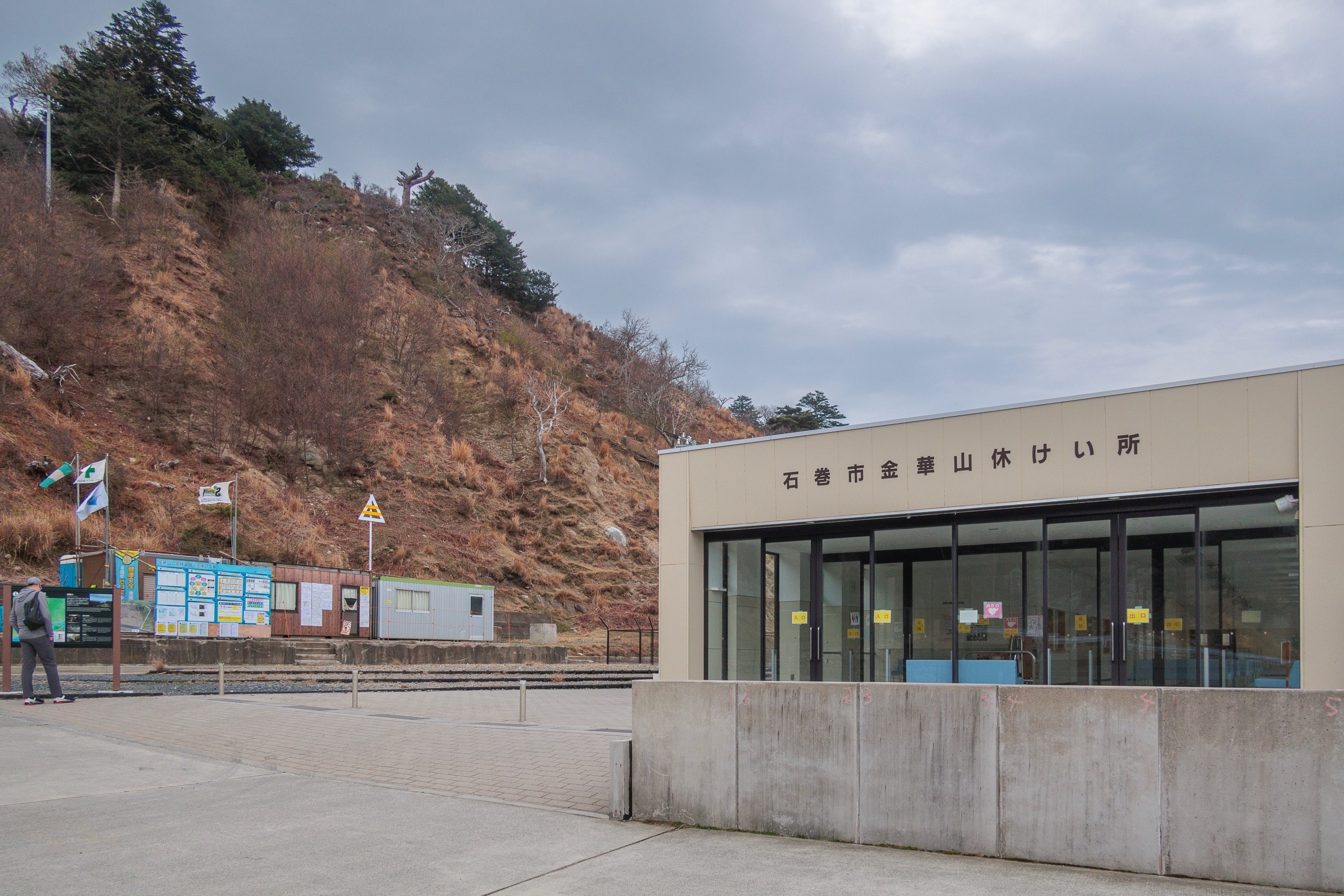
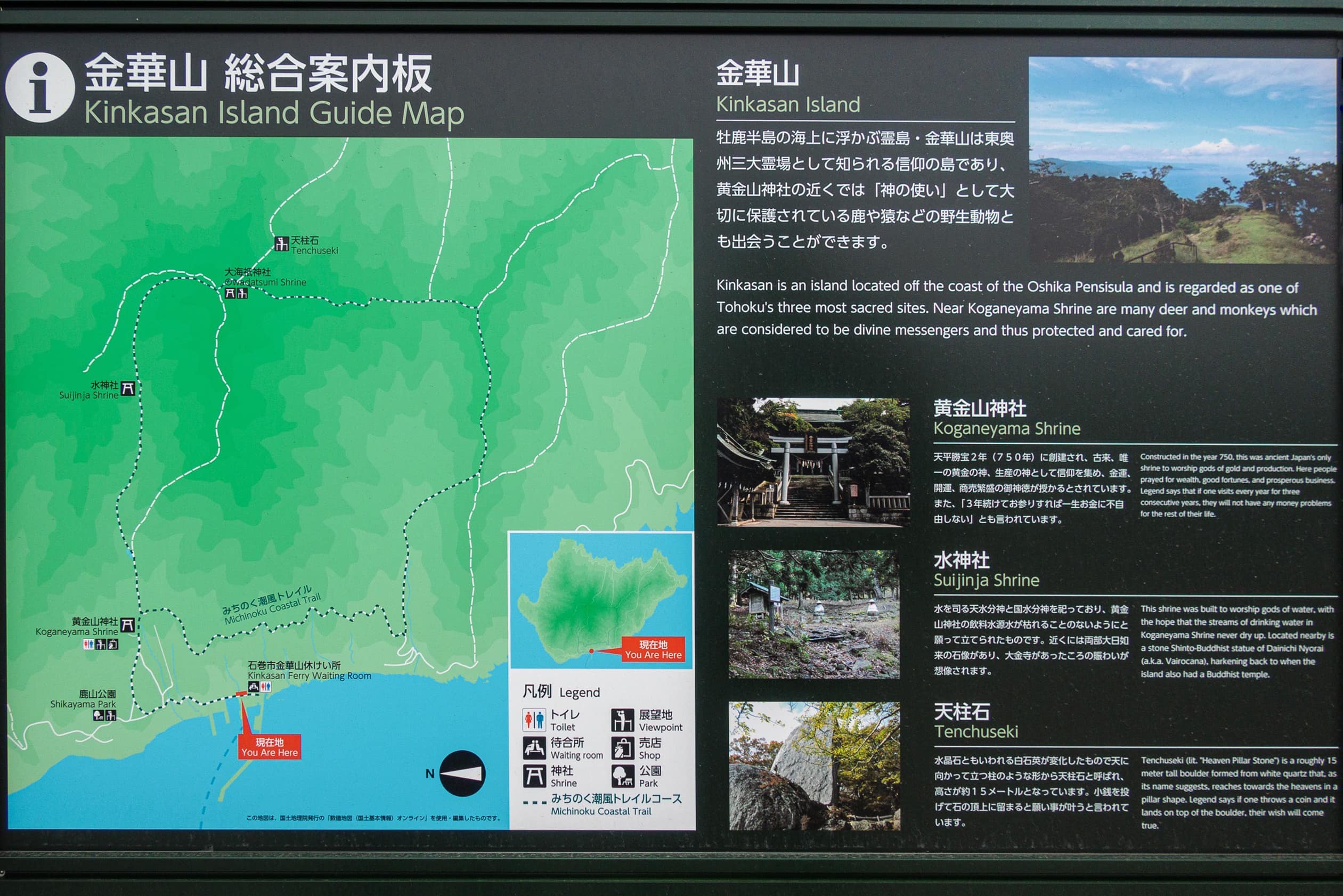
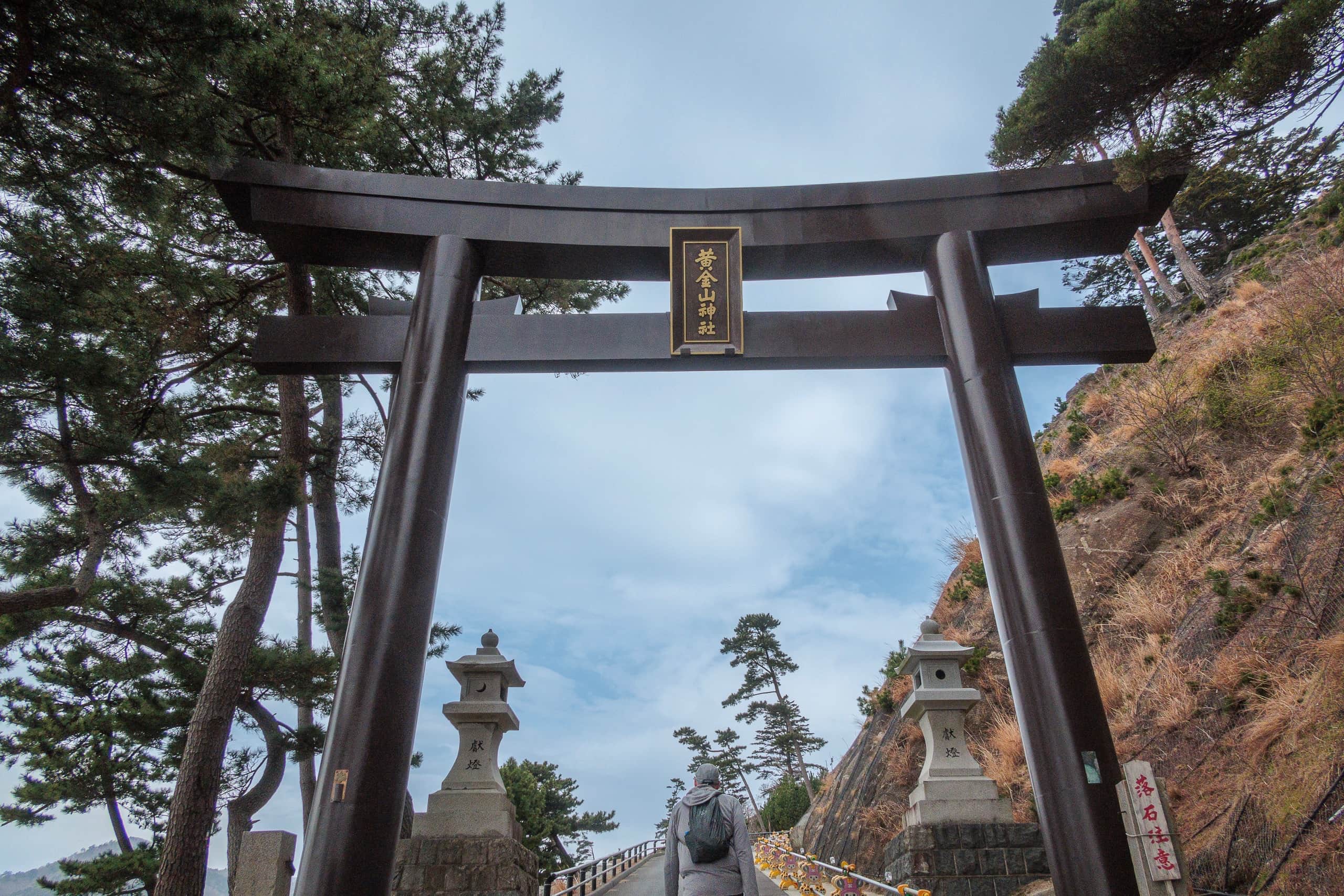
The bottom part of the island was mostly bare earth with sparse pine trees. I was unsure if this was the regular state or the result of the earthquake and tsunami.
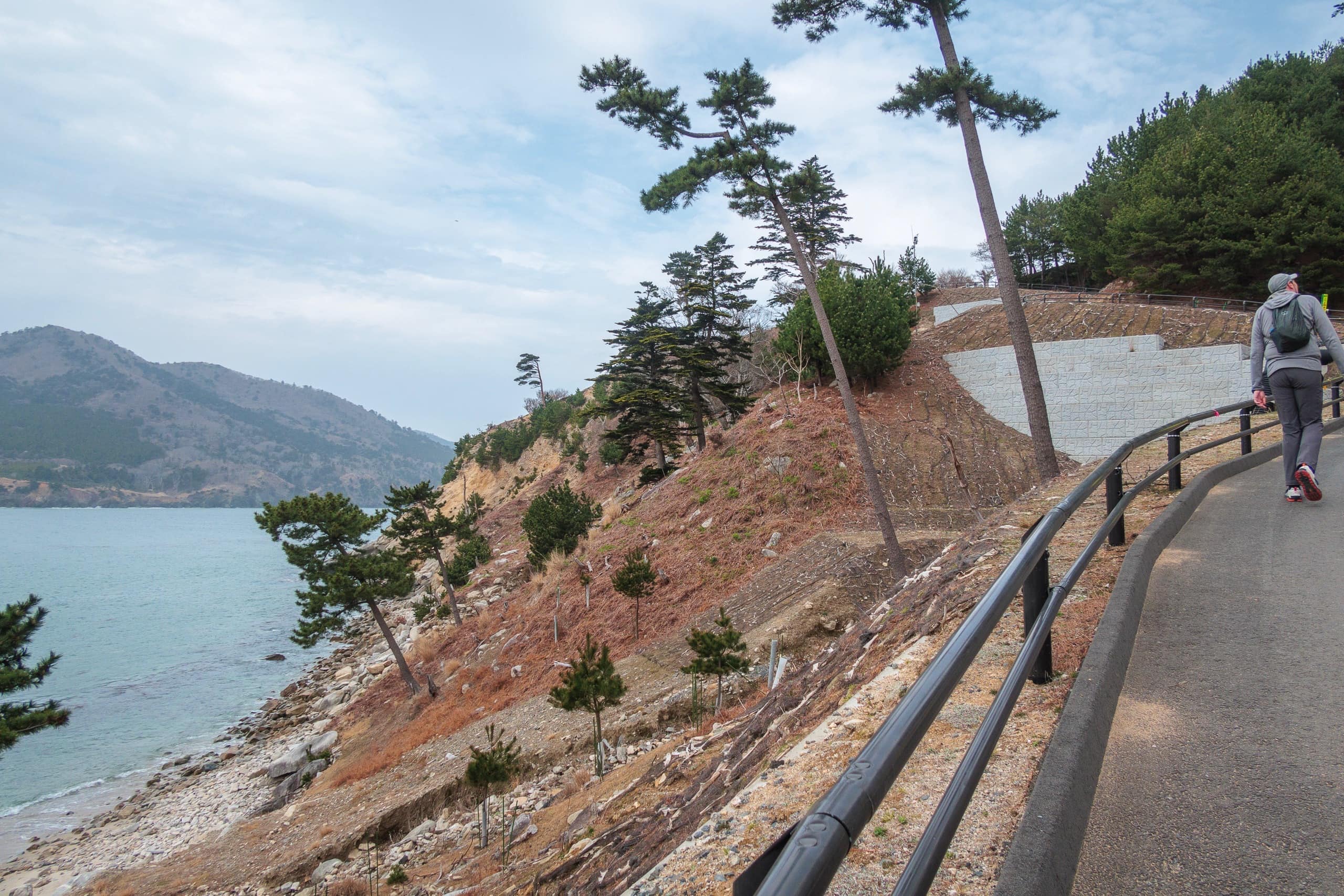
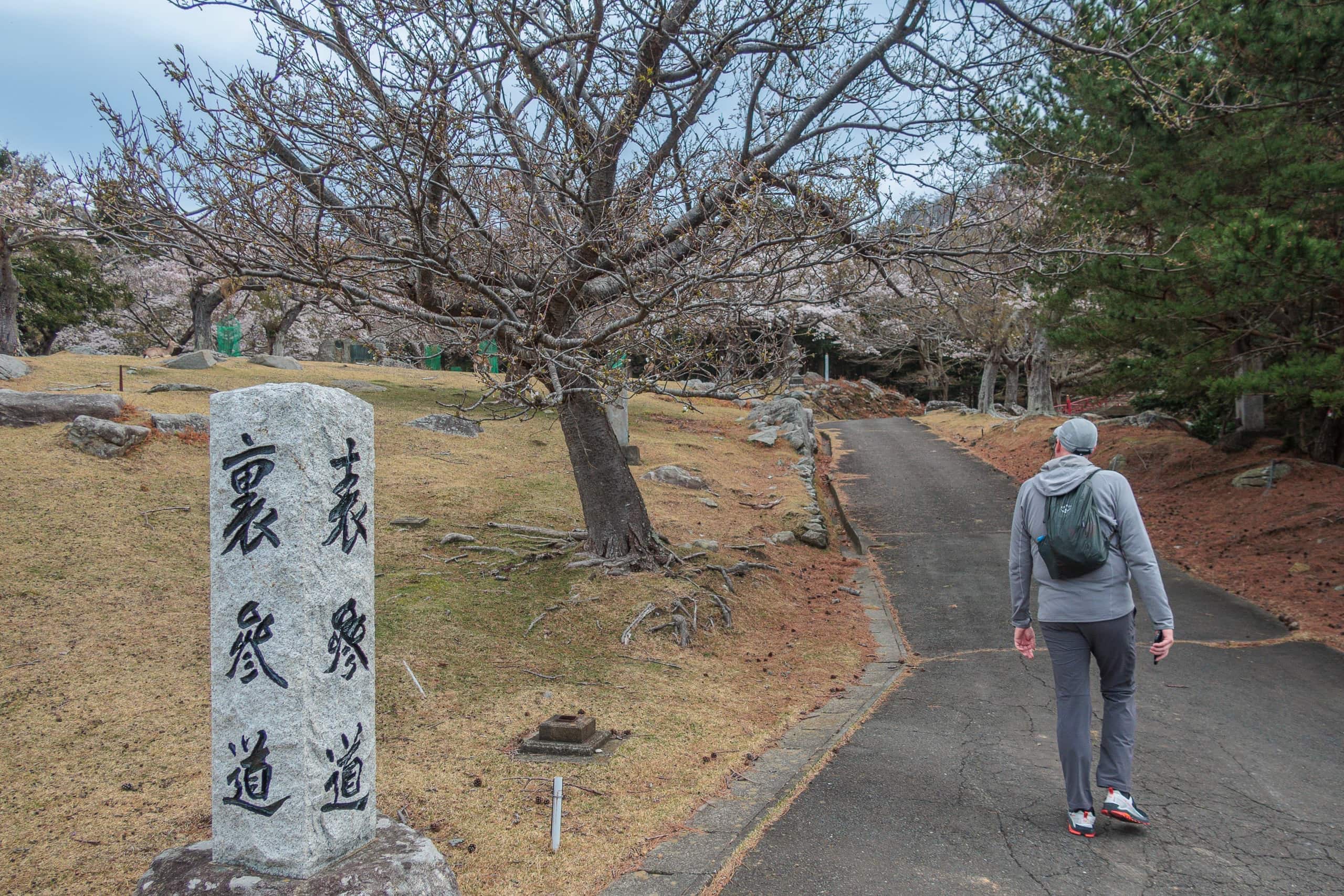
Walking up a little bit, the next area was cover with lawn, and old cherry trees were in perfect full bloom. A small herd of deer was eating grasses, looking completely relaxed and occasionally gazing at us curiously.
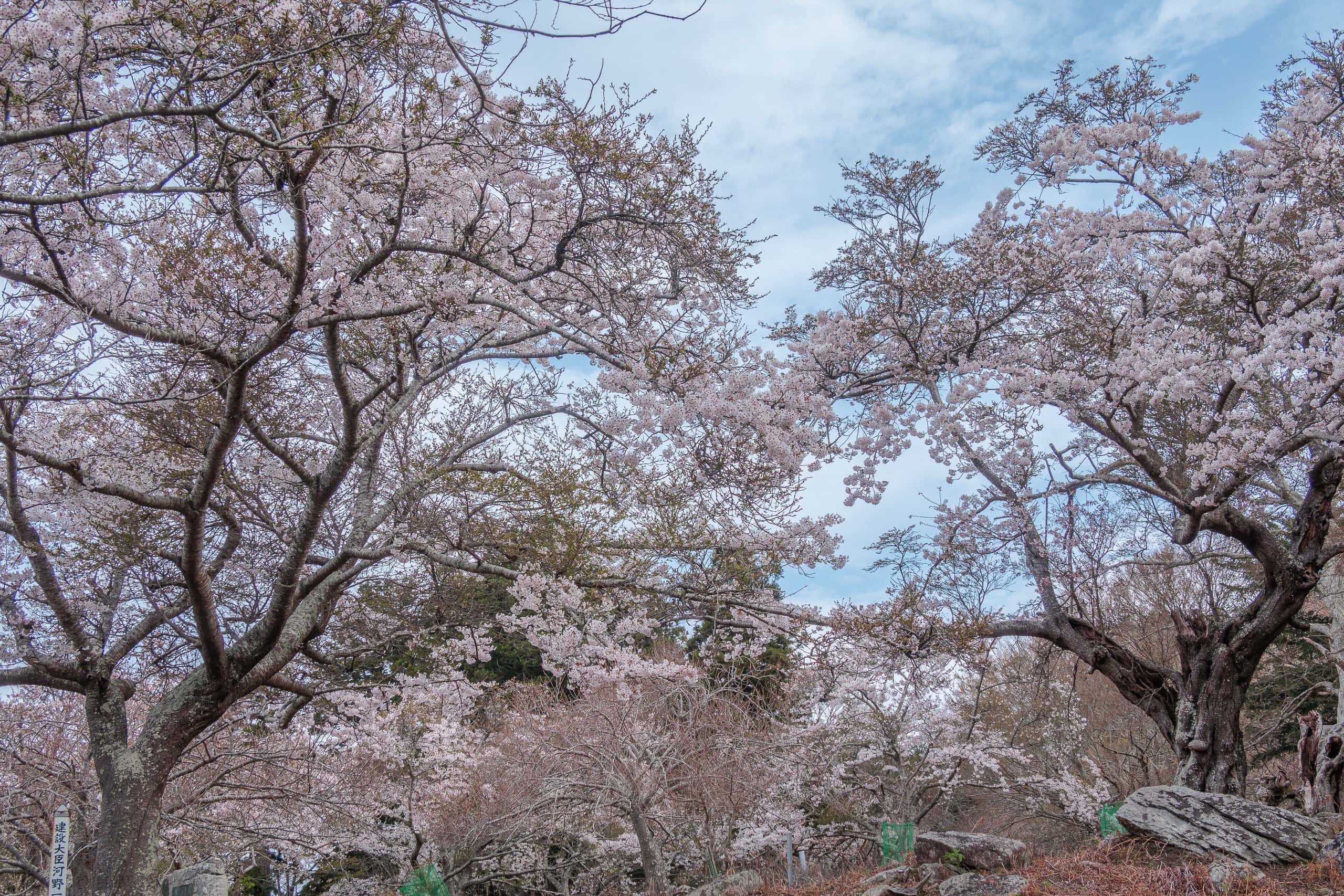
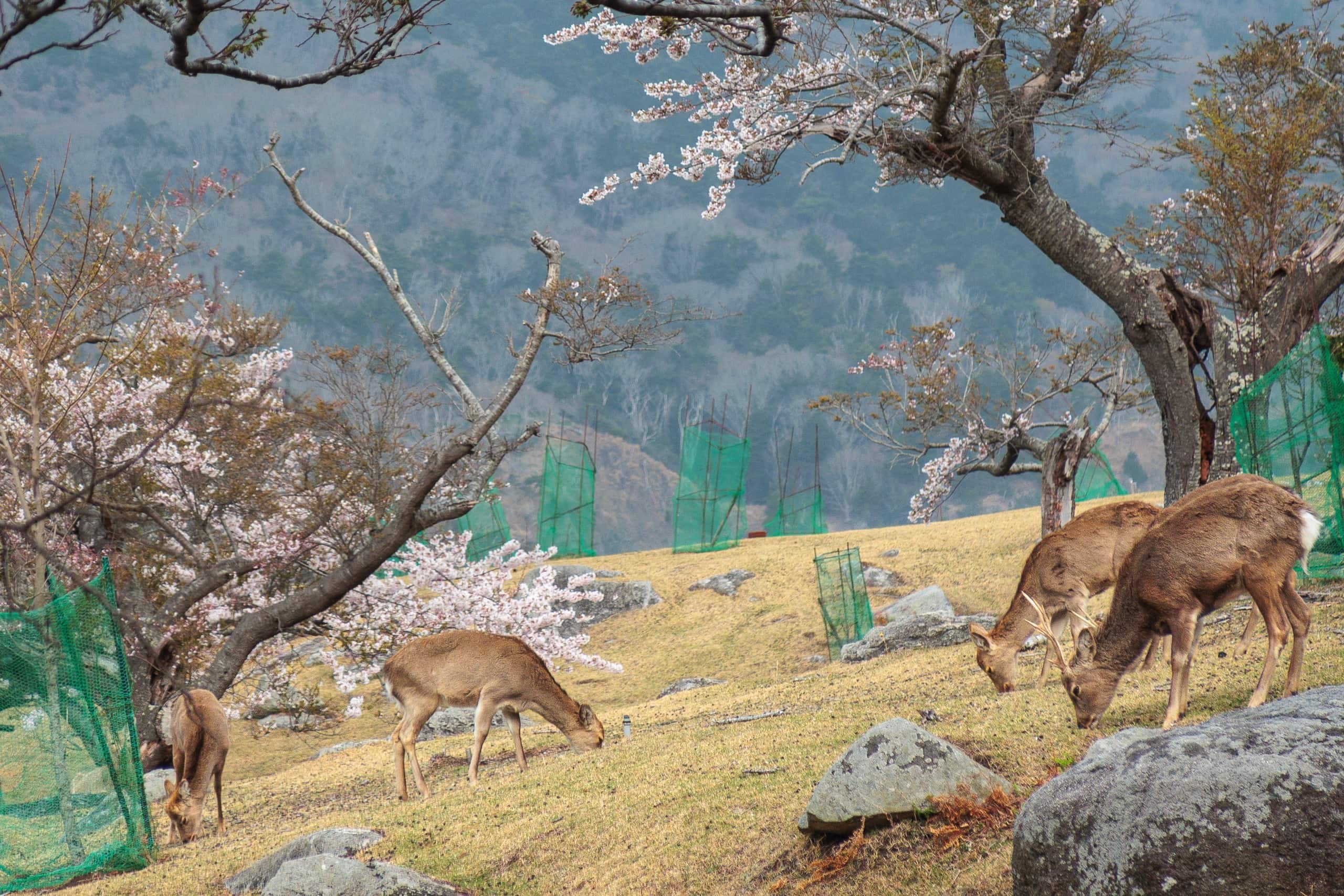
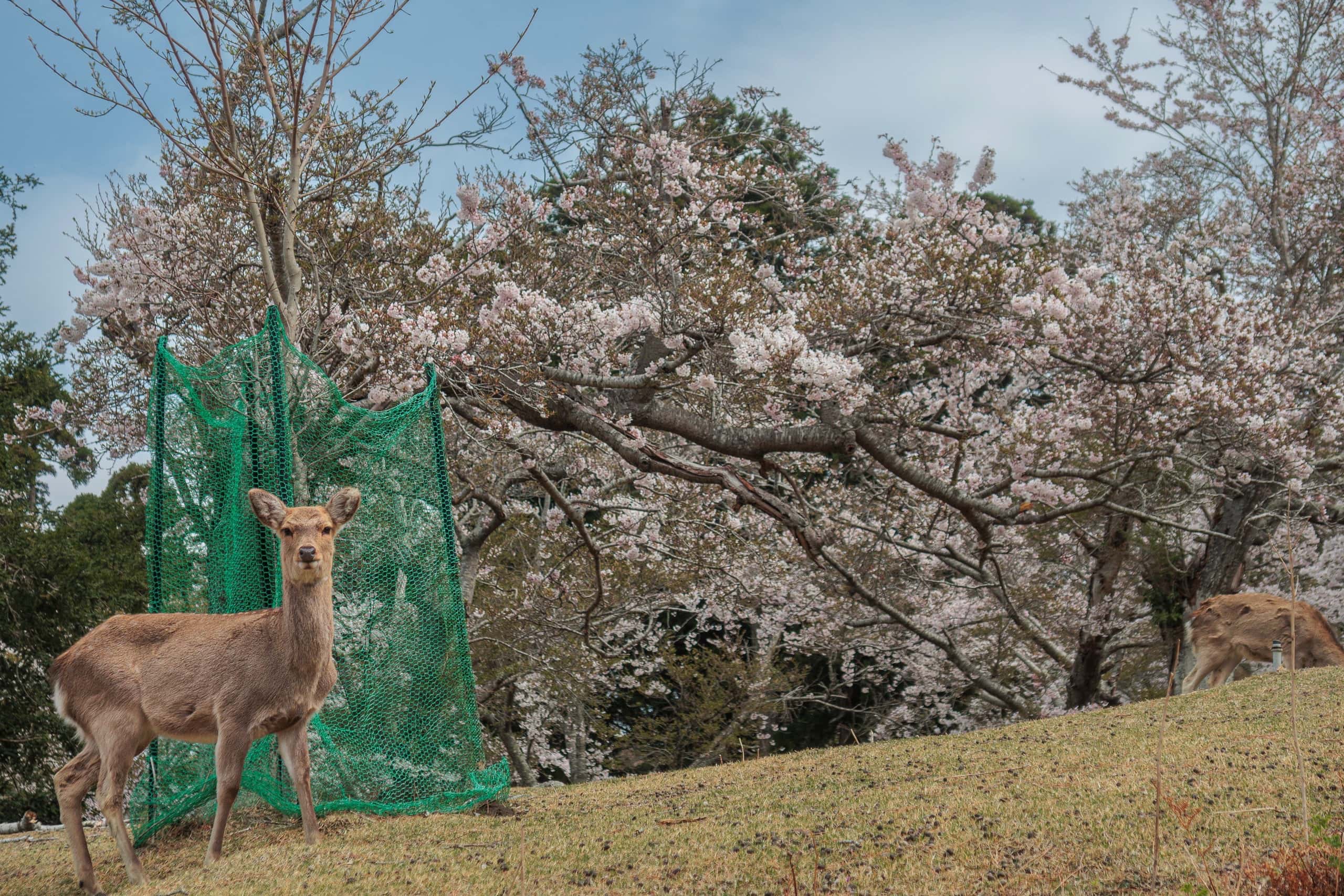
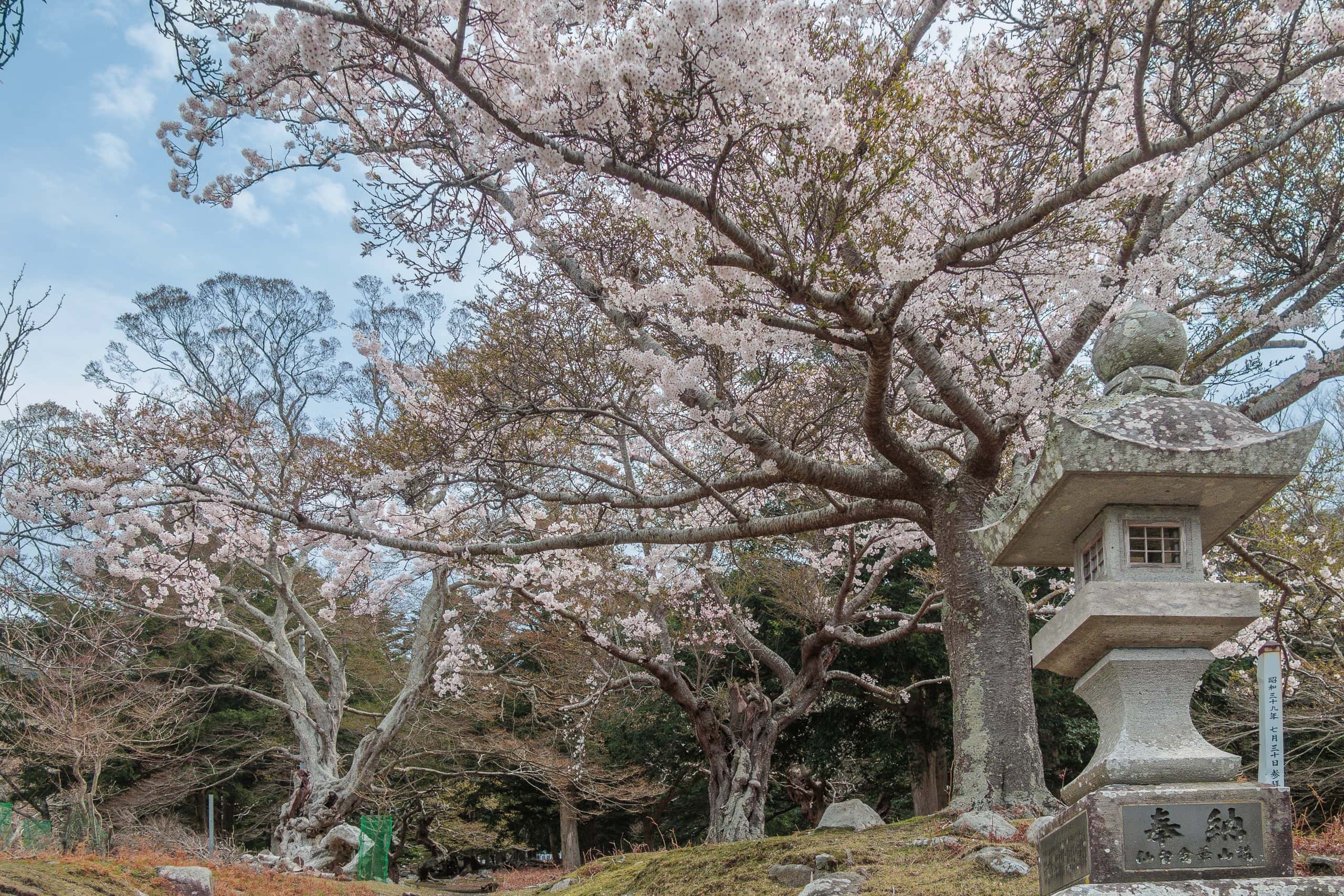
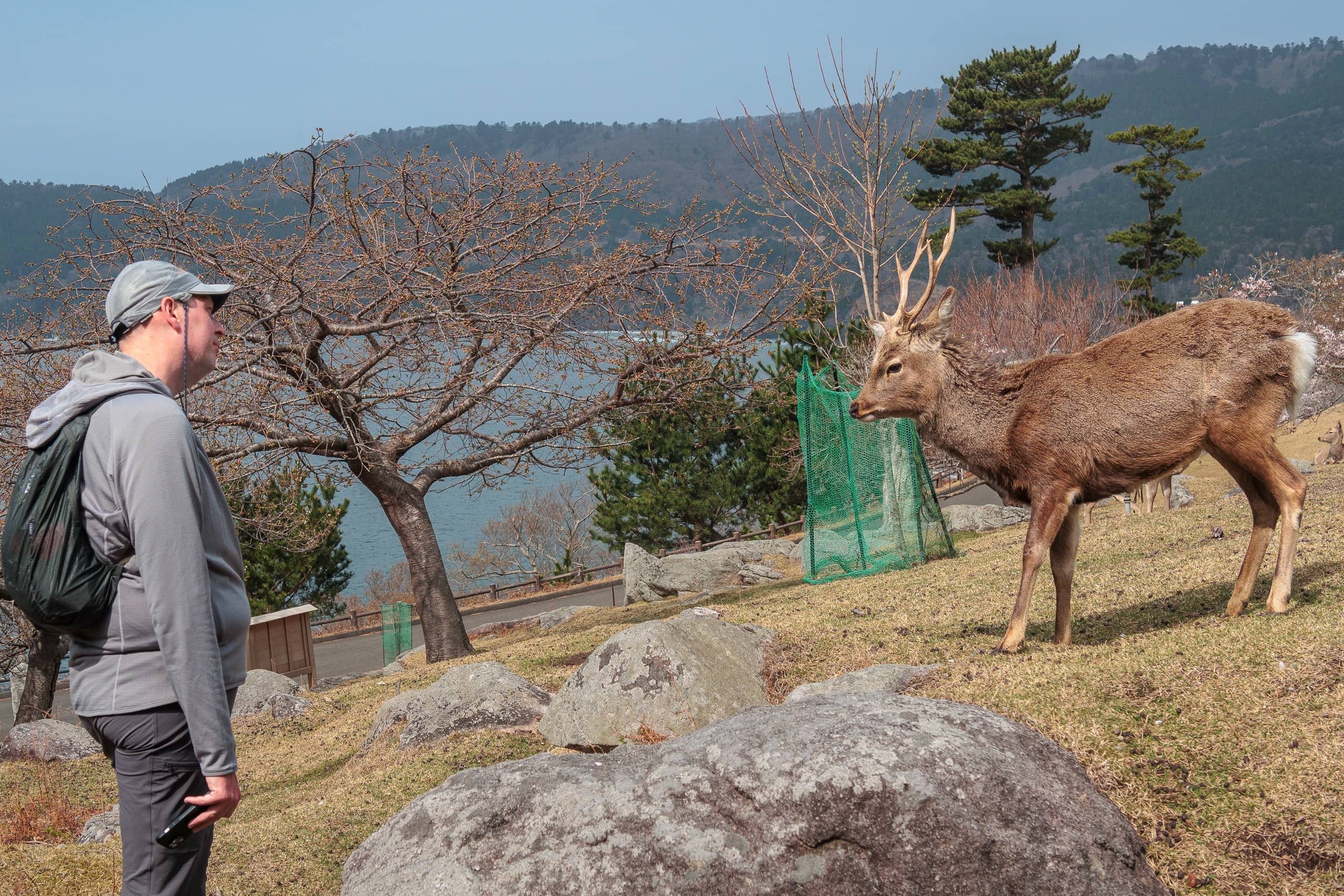
After walking through lines of old cedar trees, we finally arrived at Kinkasan Koganeyama Shrine.
It already took more than 20 minutes just to get here from the sea level. One hundred minutes was obviously not enough at all for the entire route.
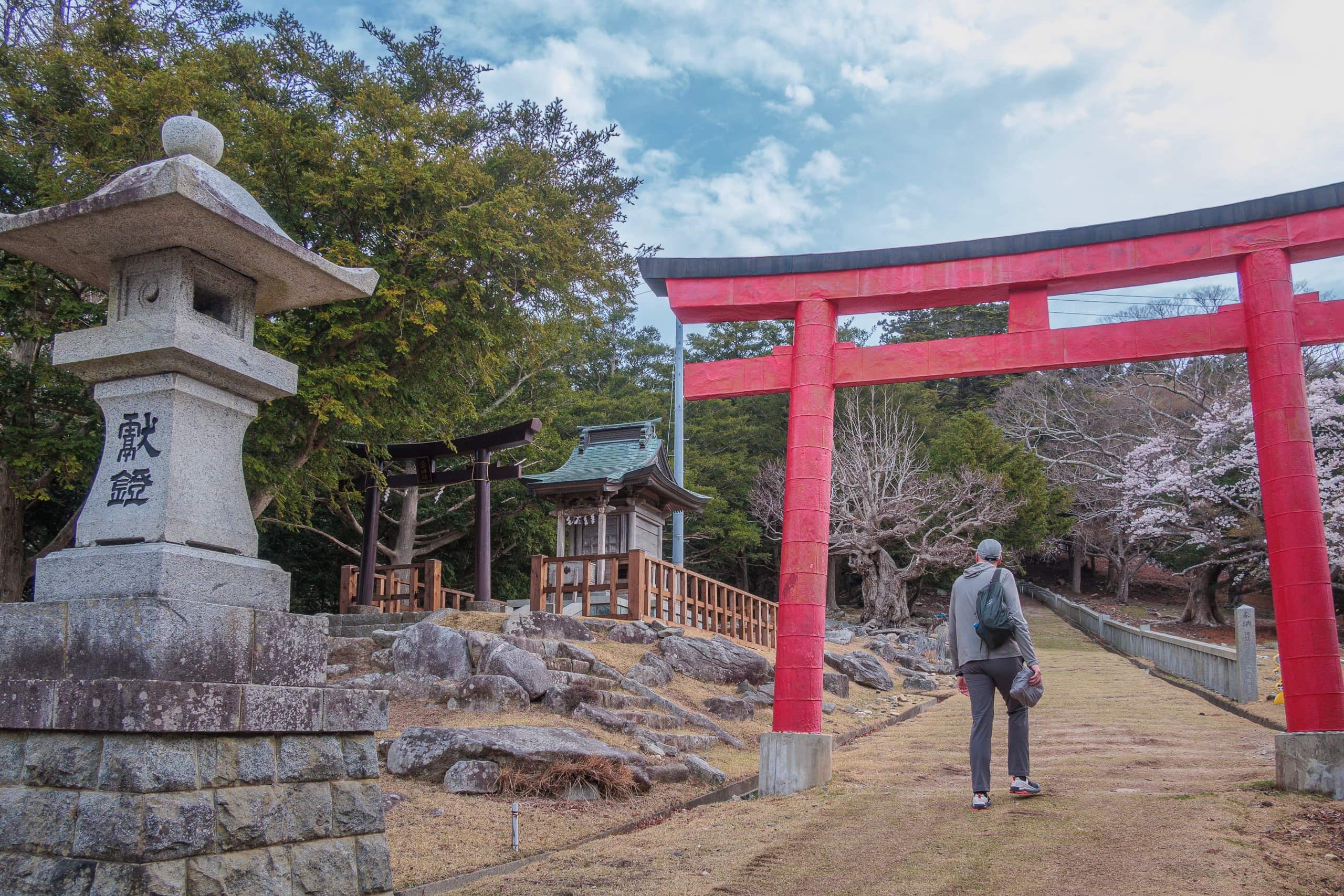
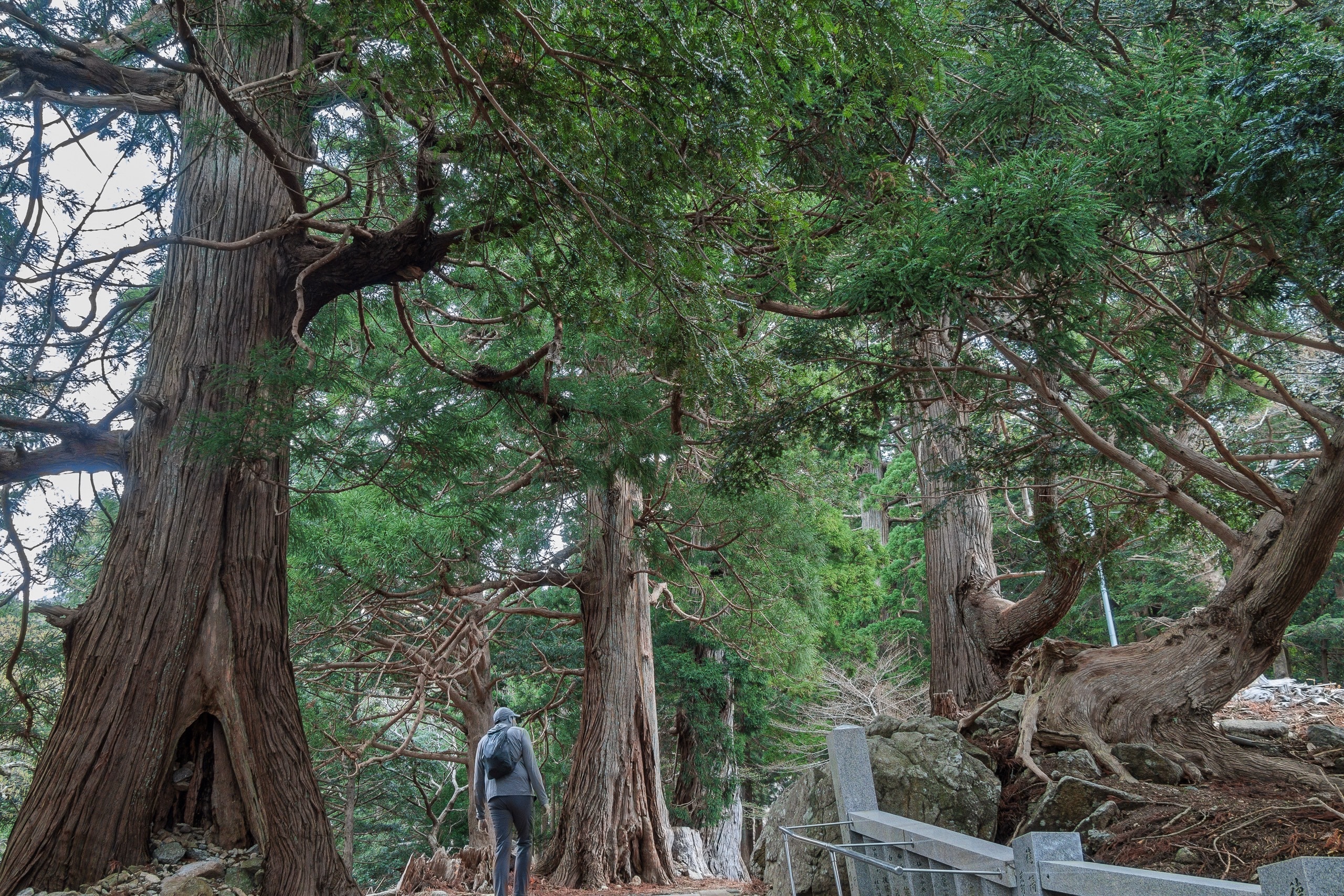
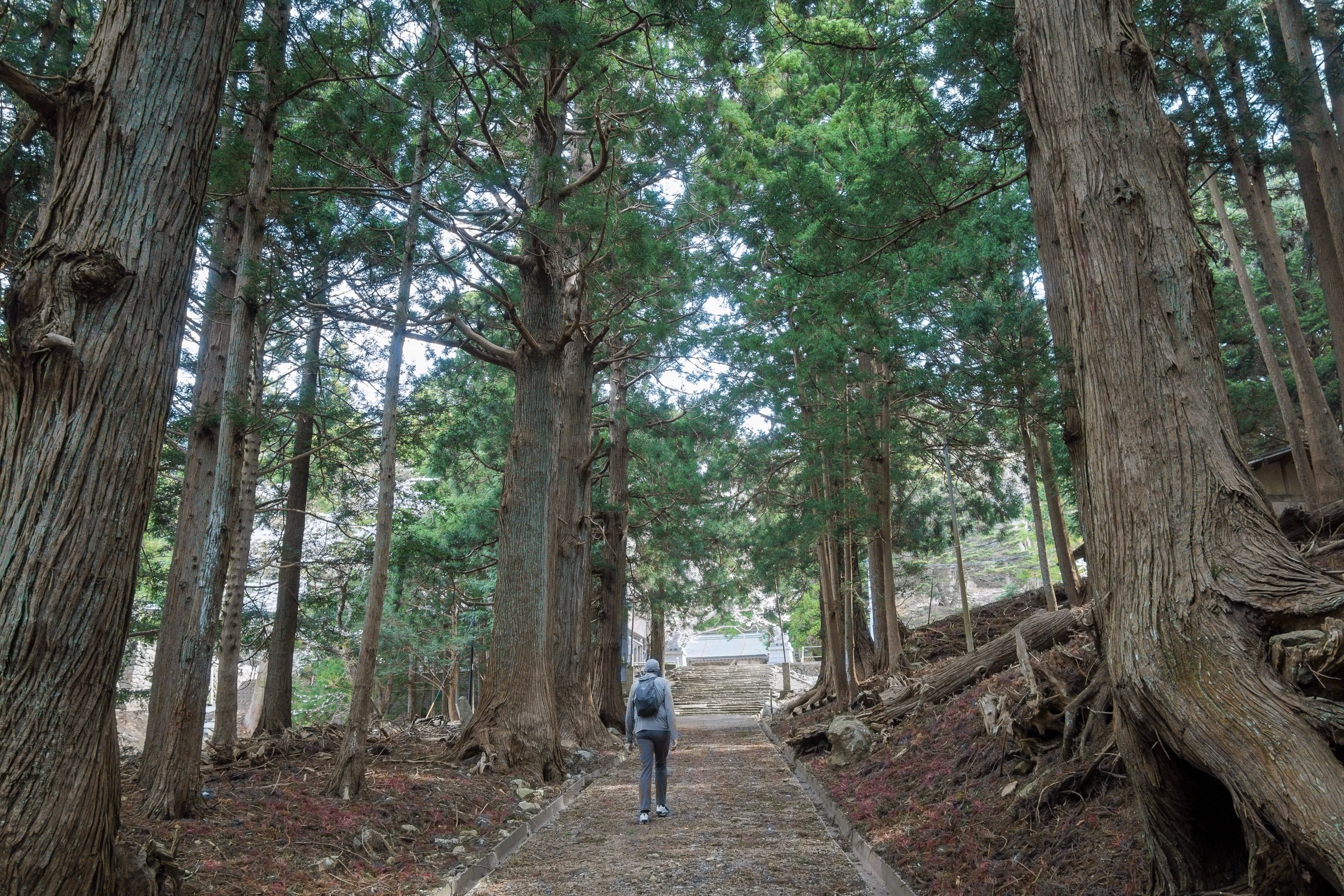
We saw a few people walking around the shrine area, and later, we passed by a small group walking down the trail to the mountain peak. They must have been on this island since yesterday and stayed at the shrine’s accommodation last night.
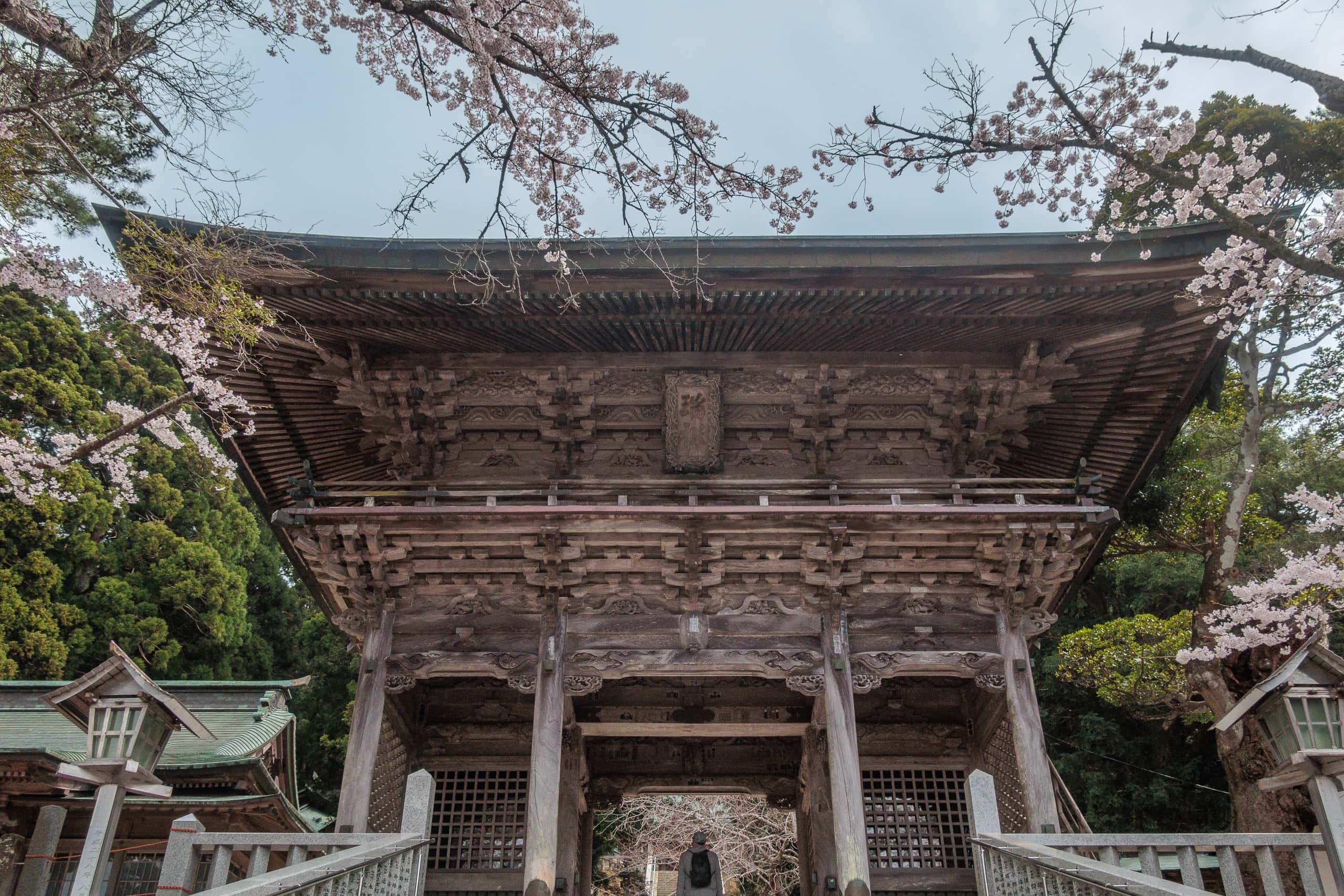
To get the mountain trail walking done while the weather was holding, we saved exploring the shrine area for later, quickly passed the delicately carved shrine architecture and steep stone stairs, and proceeded to the deepest back of the shrine.
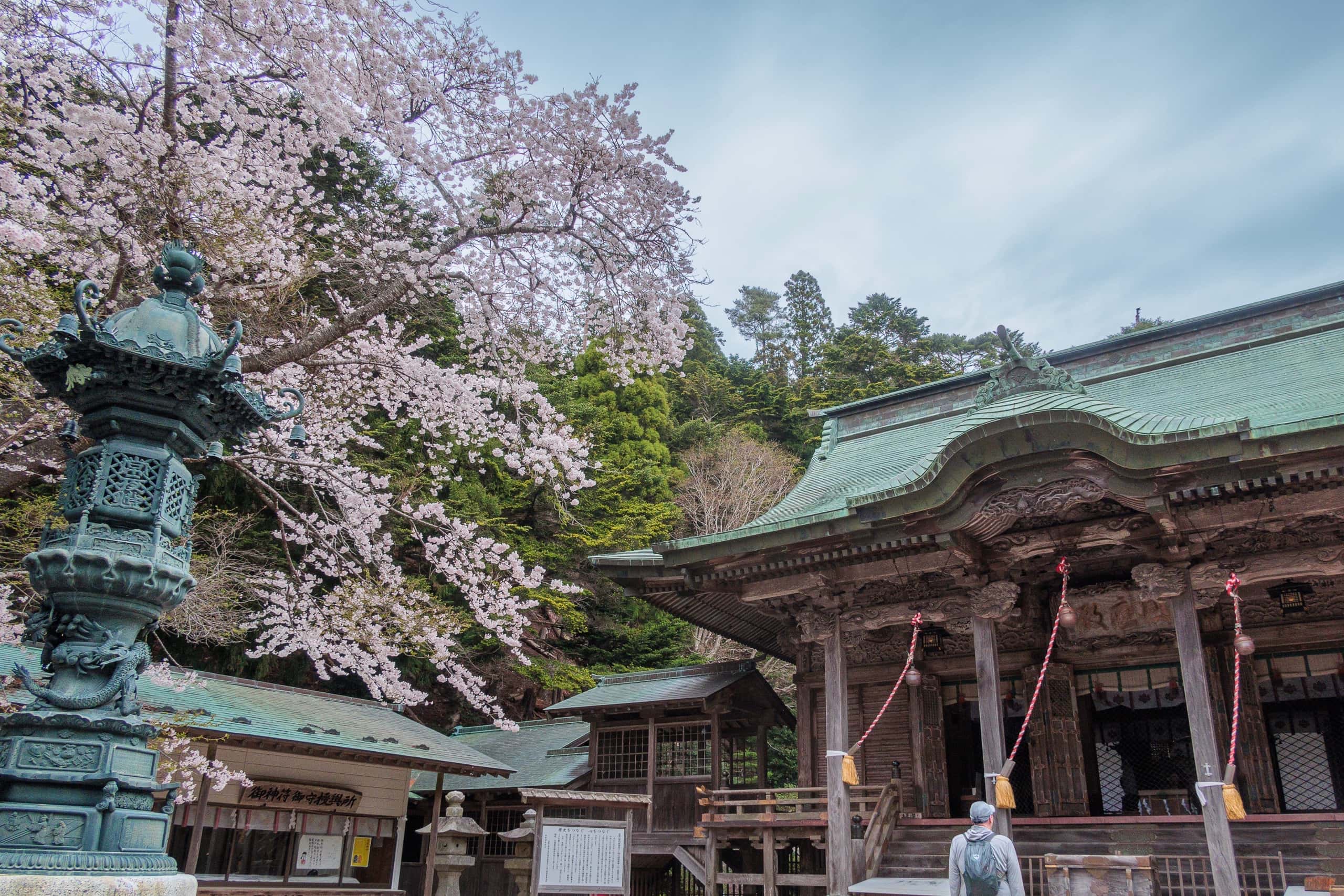
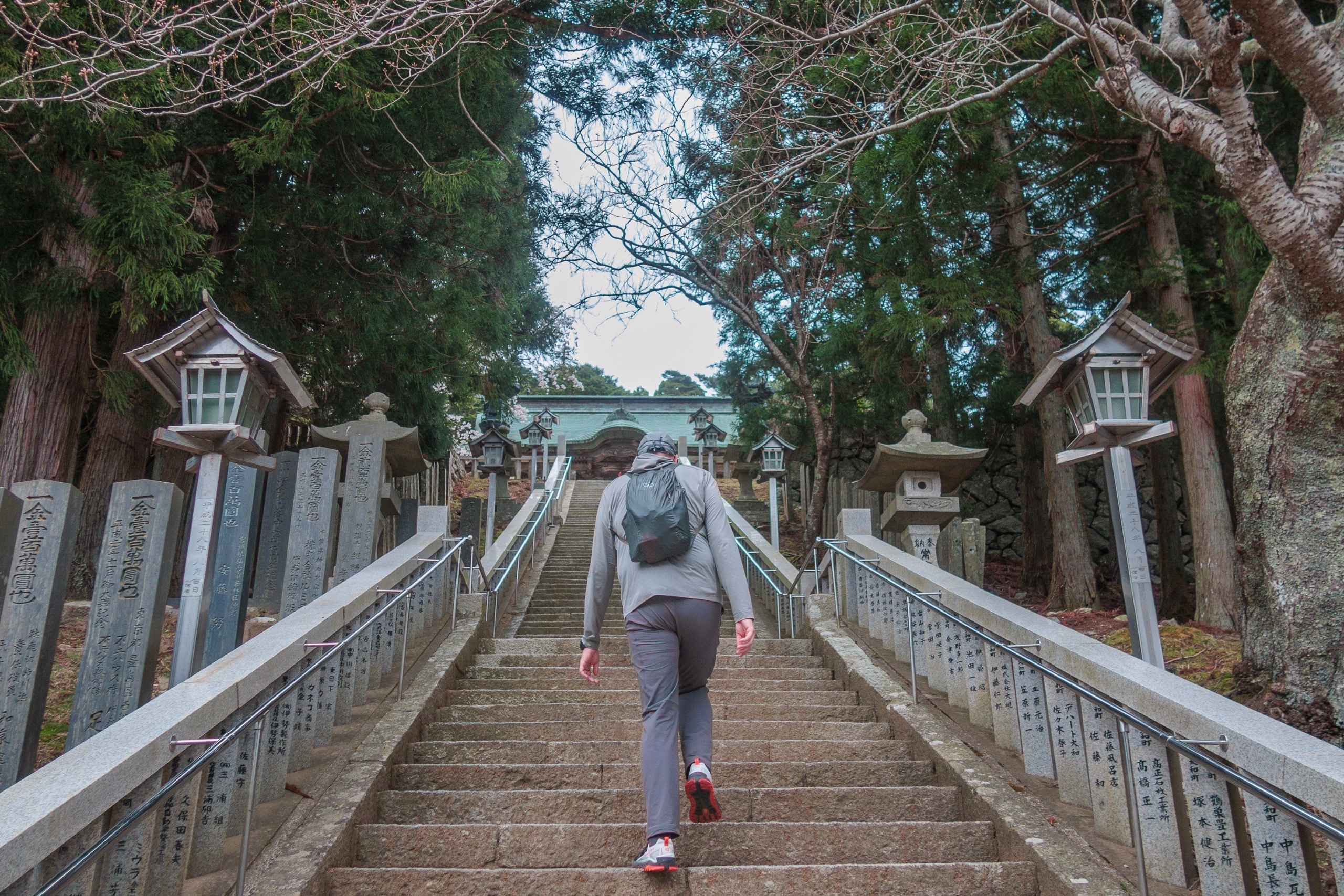
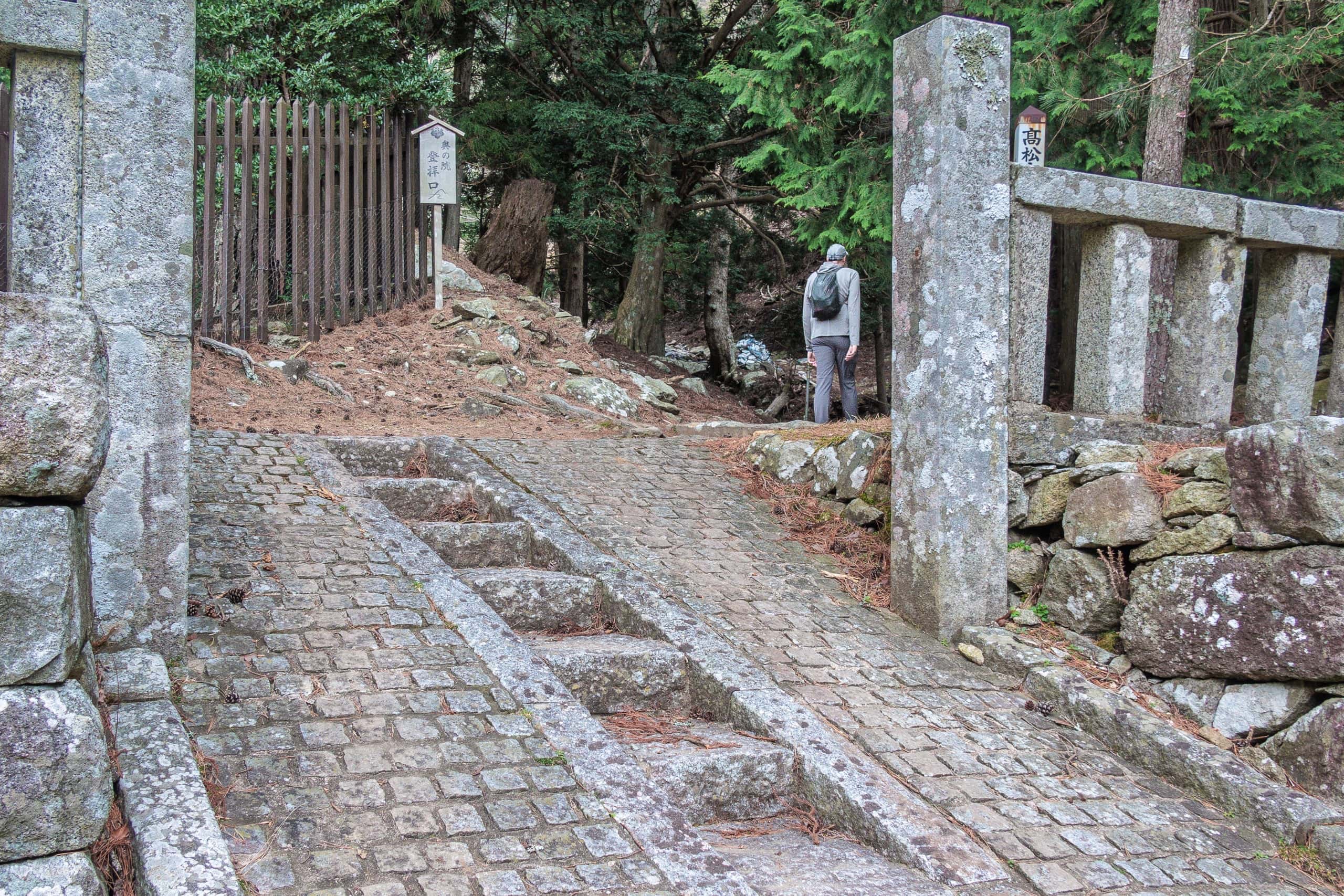
Mt. Kinkasan
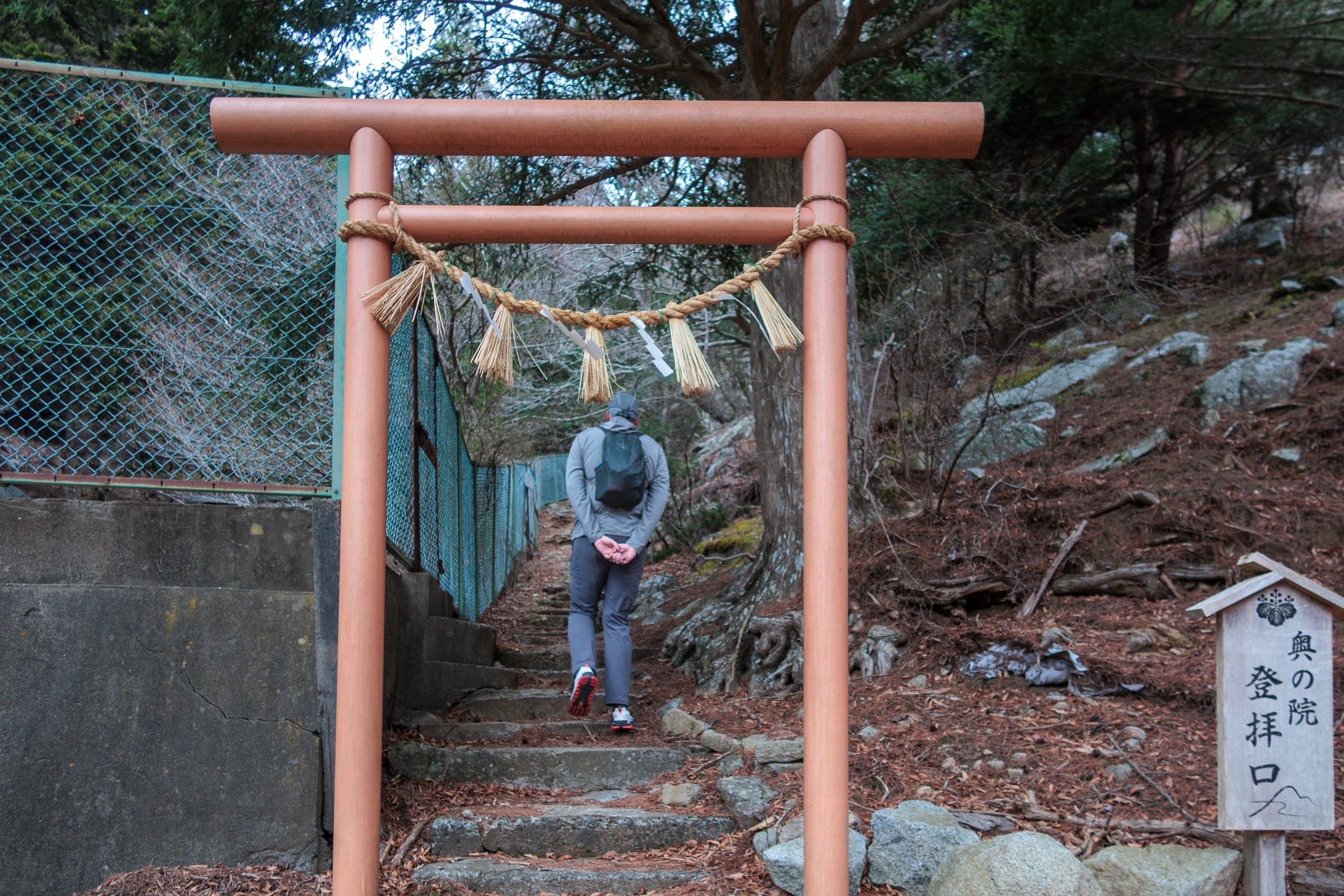
A small faded-vermillion Trii gate was the entrance to the trail to the peak. The sign by the gate said, in Japanese, it was the trailhead to the Okunoin 奥の院 (inner sanctuary).
The MCT uses the two trails for visiting the Okunoin on the peak, both starting from the shrine area, and turns them into a circular route. we were supposed to find another trailhead at a different corner of the Shine area to go counter-clockwise if we wanted to keep northbound strictly. But it seemed more appropriate to take the commonly-used historic trail to go up to the Okunoin.
Later in the day, we would gladly find our decision to go clockwise was the best for this time.
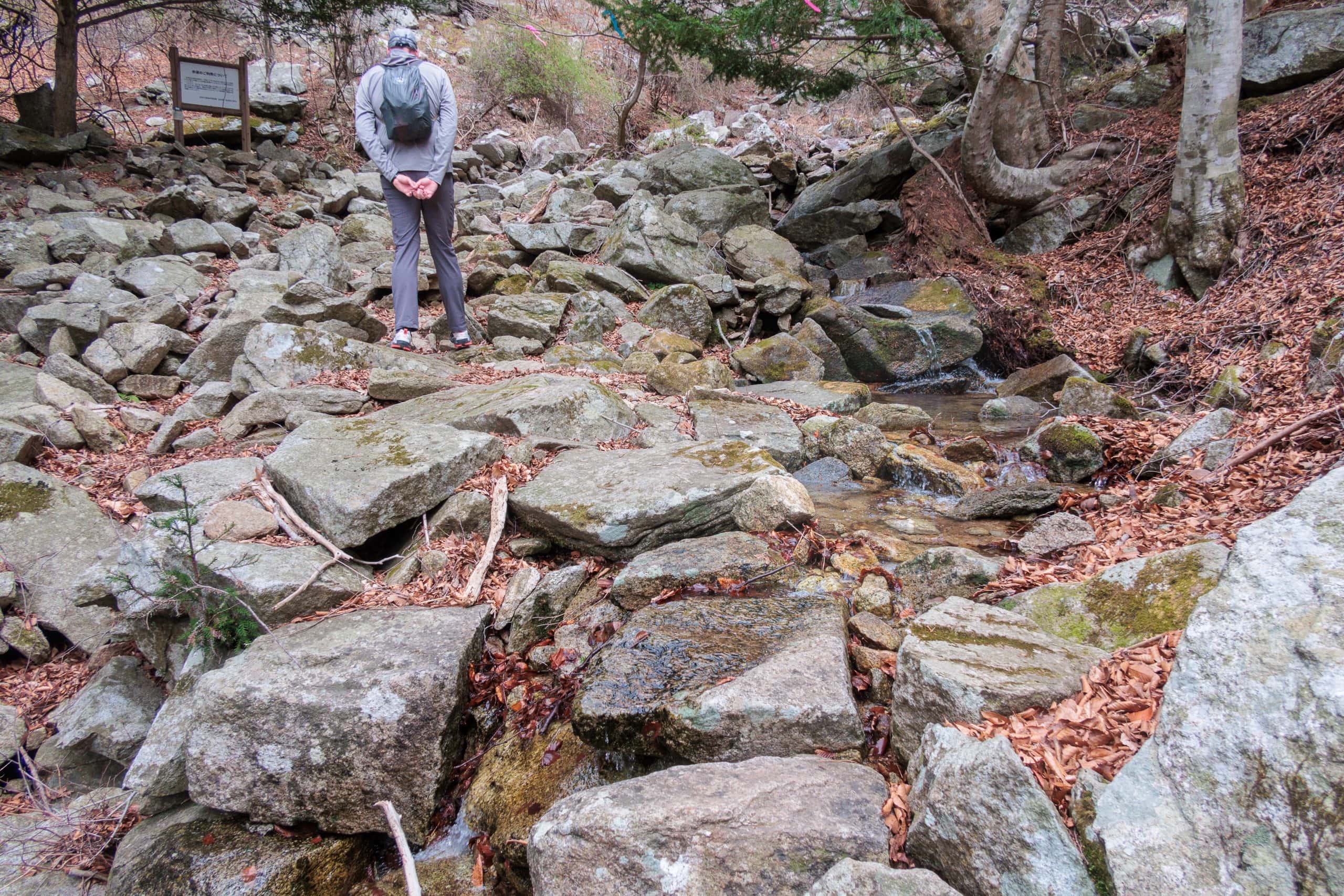
The sky was getting covered with more clouds, and we had started feeling chilly winds on our cheeks.
The steeply ascending trail was mostly covered with broken, flat rocks.

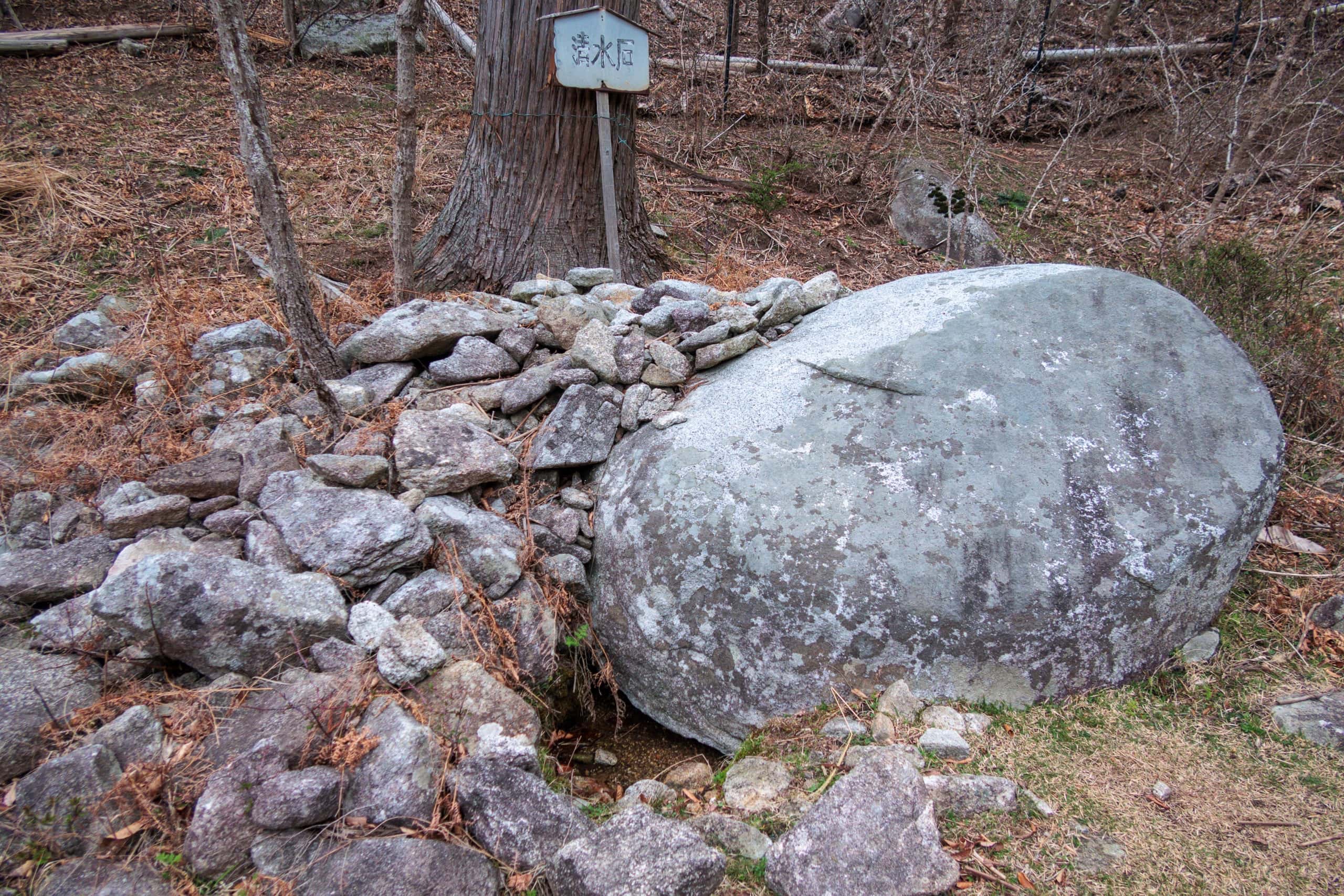
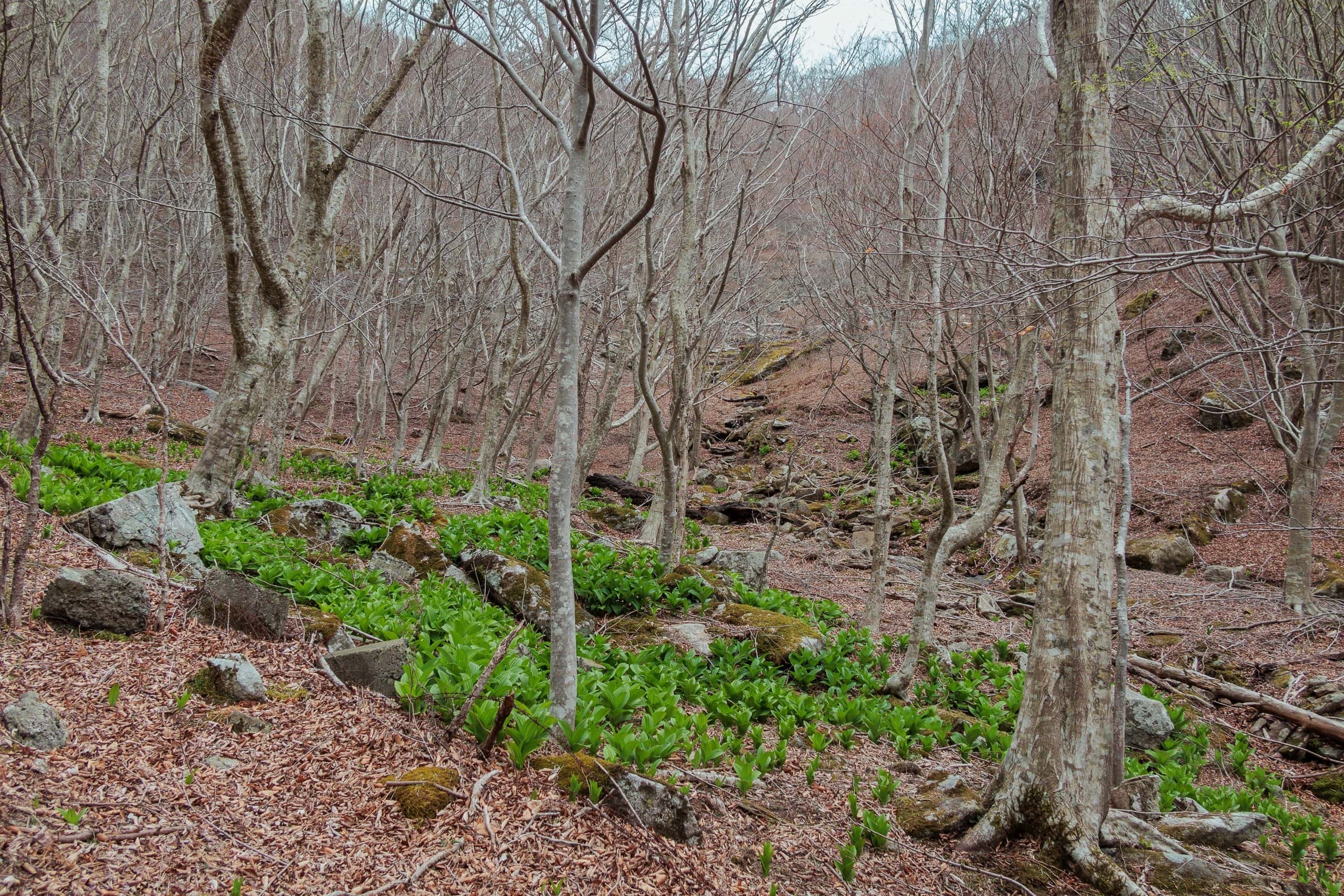
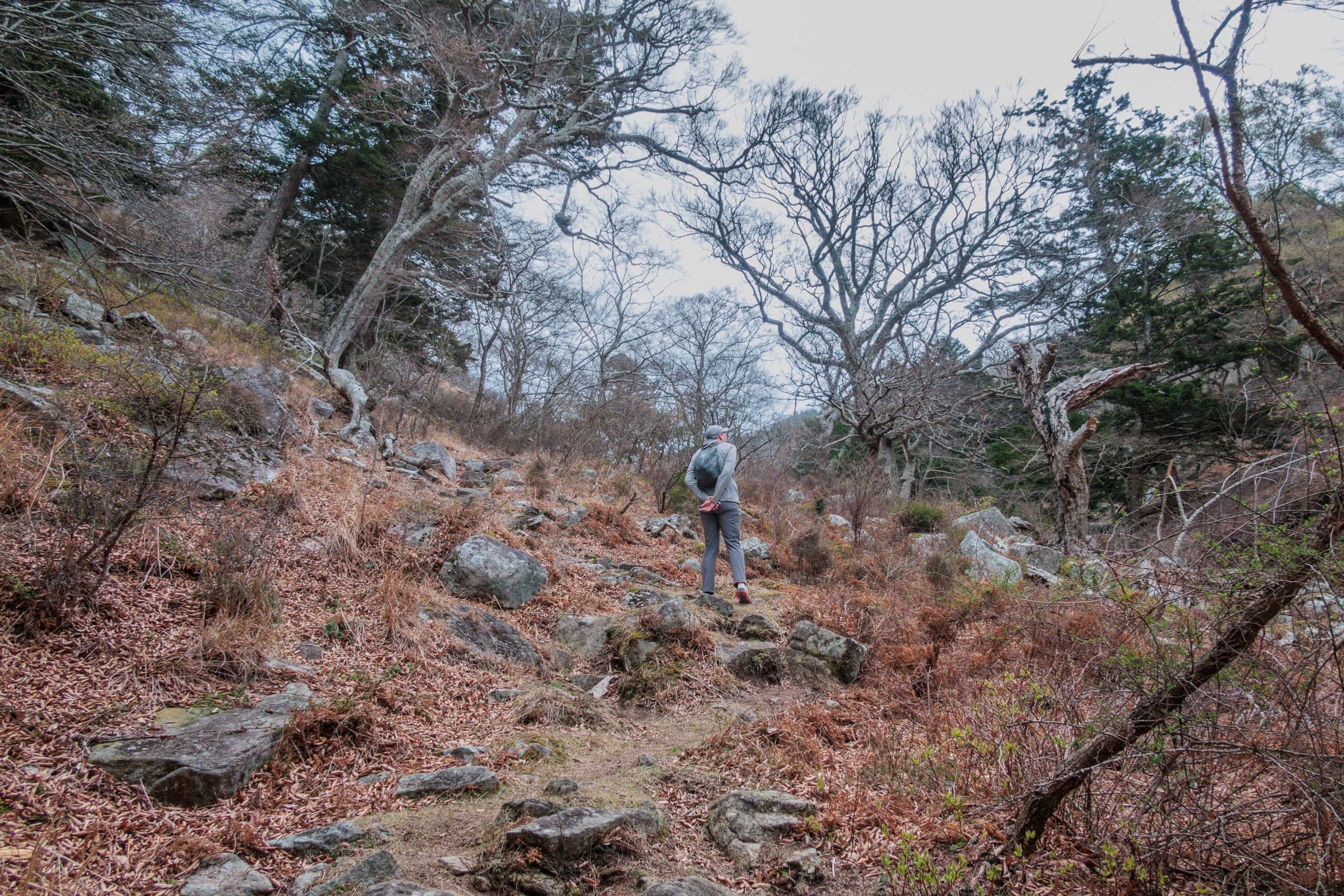
The forest on this side of the mountain was not dense, but many trees standing on the half-bare ground and between rocks were creepily knotted and knurled — creating an eerie atmosphere around the trail with the grey, cold sky.
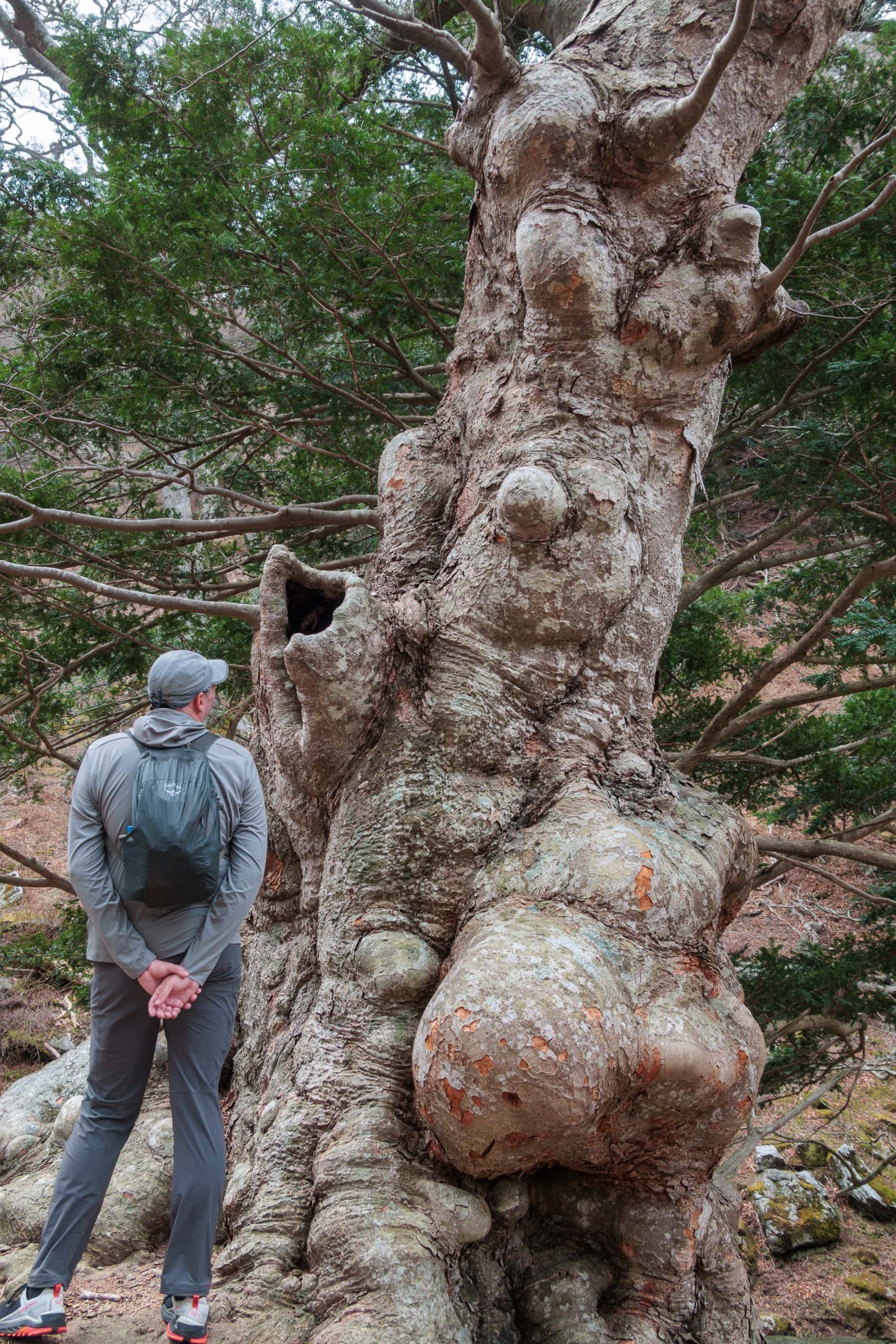
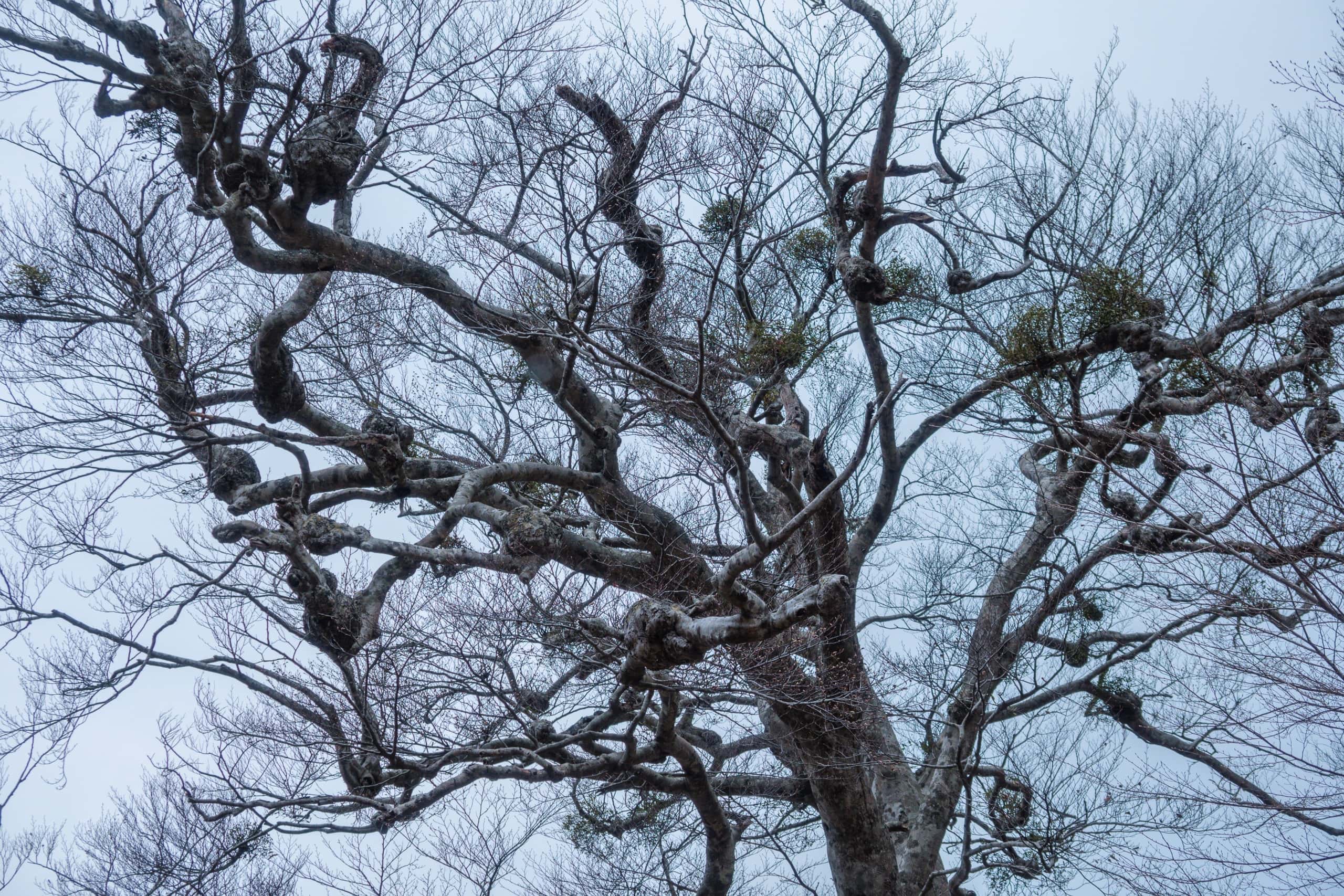
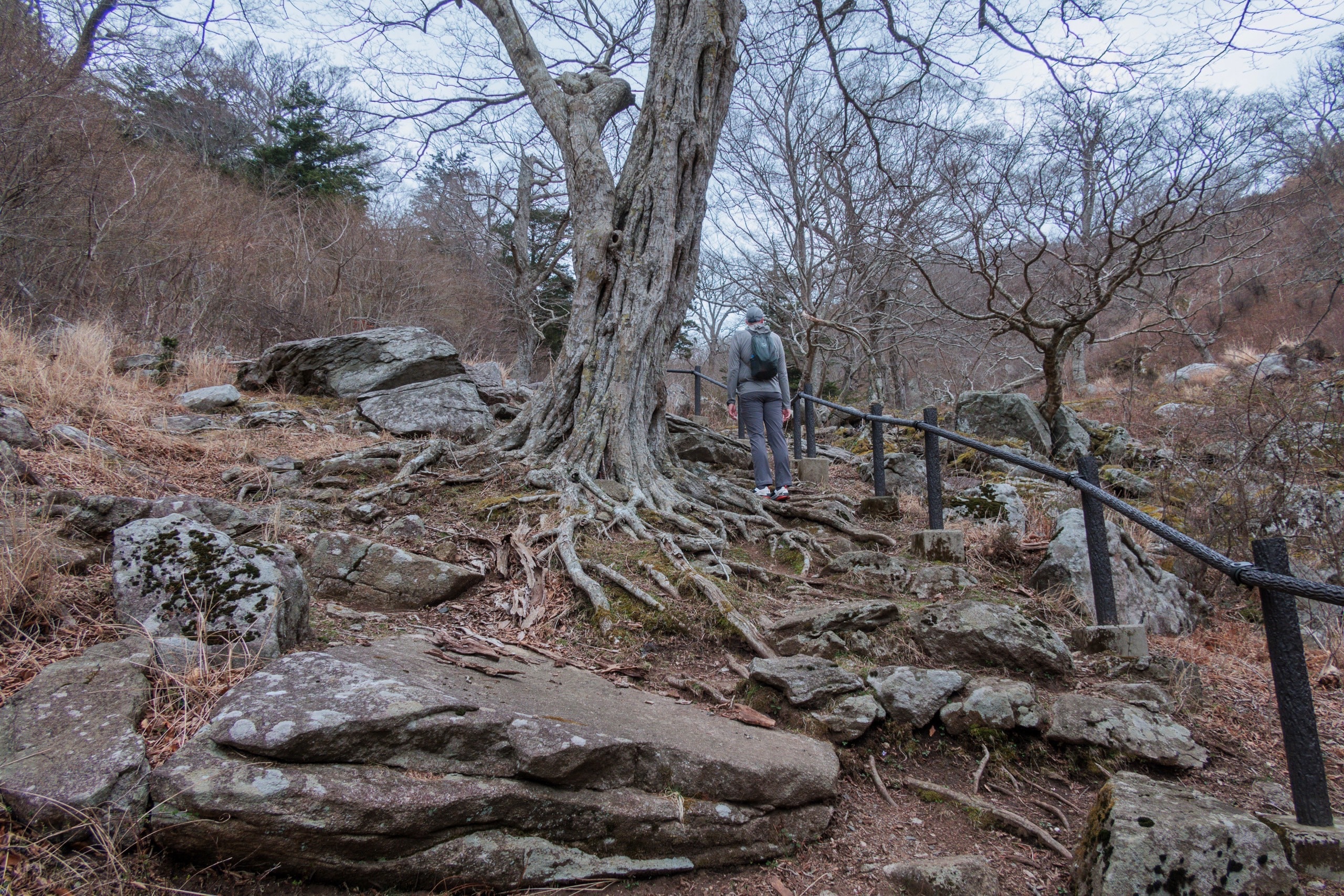
Here and there, we saw deer near the mountain path too.
The other group of deer hanging around in the shrine area in total relaxed mode never looked afraid of humans and even tried to come closer to us with the high expectation for snacks in their eyes. When they figured we were so unmannered not to bring any souvenirs for them, a male deer stared at us with clear accusation in his eyes.
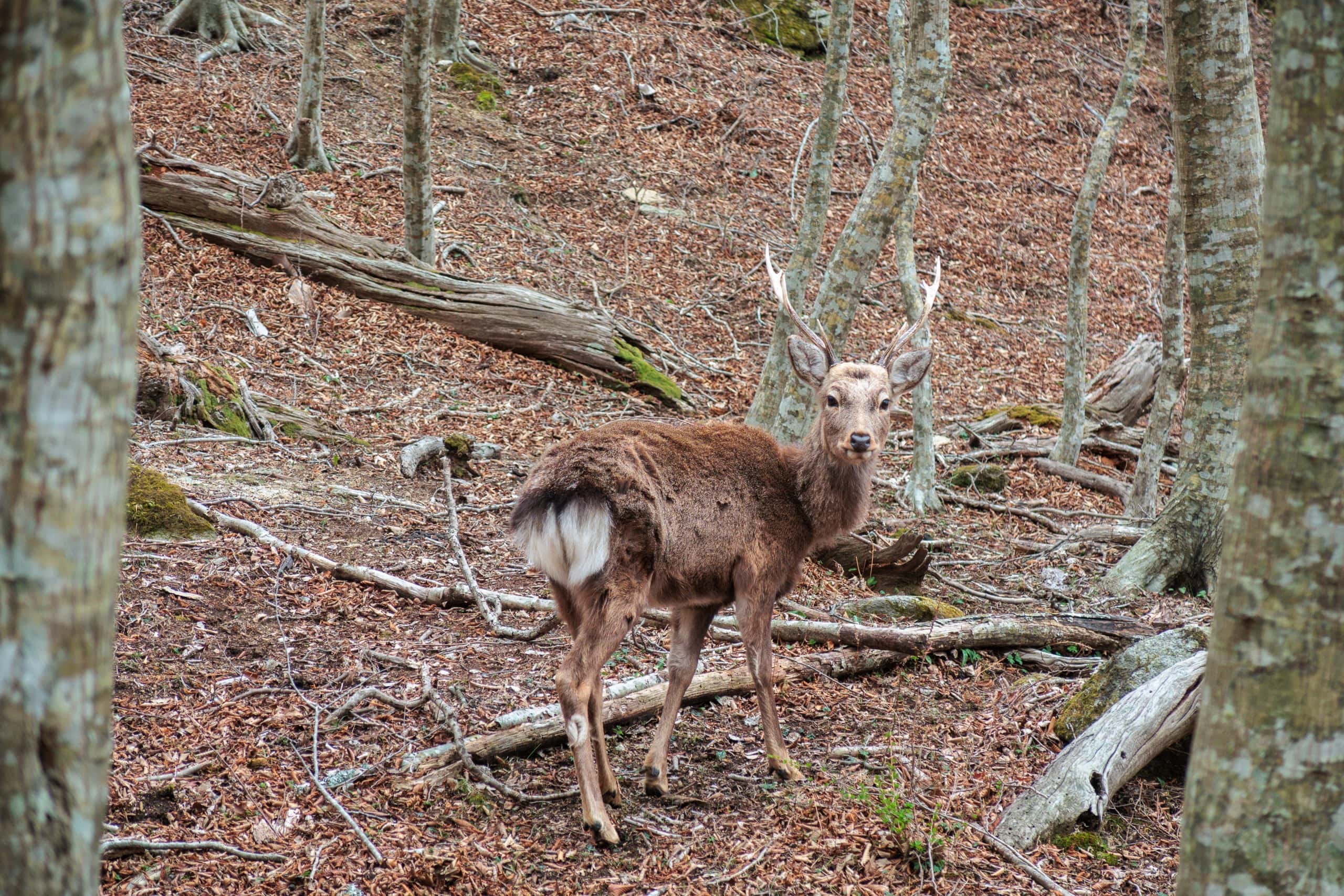
On the other hand, the mountain deer were much more careful and always kept a distance from us, which made us wonder why.
As deer and monkeys on this island are considered sacred animals, messengers from gods, they must have never been chased or hunted. I doubt if they even know dogs exist in this world.
But they might sense, with their survival instinct, our occasional visit to venison restaurants…
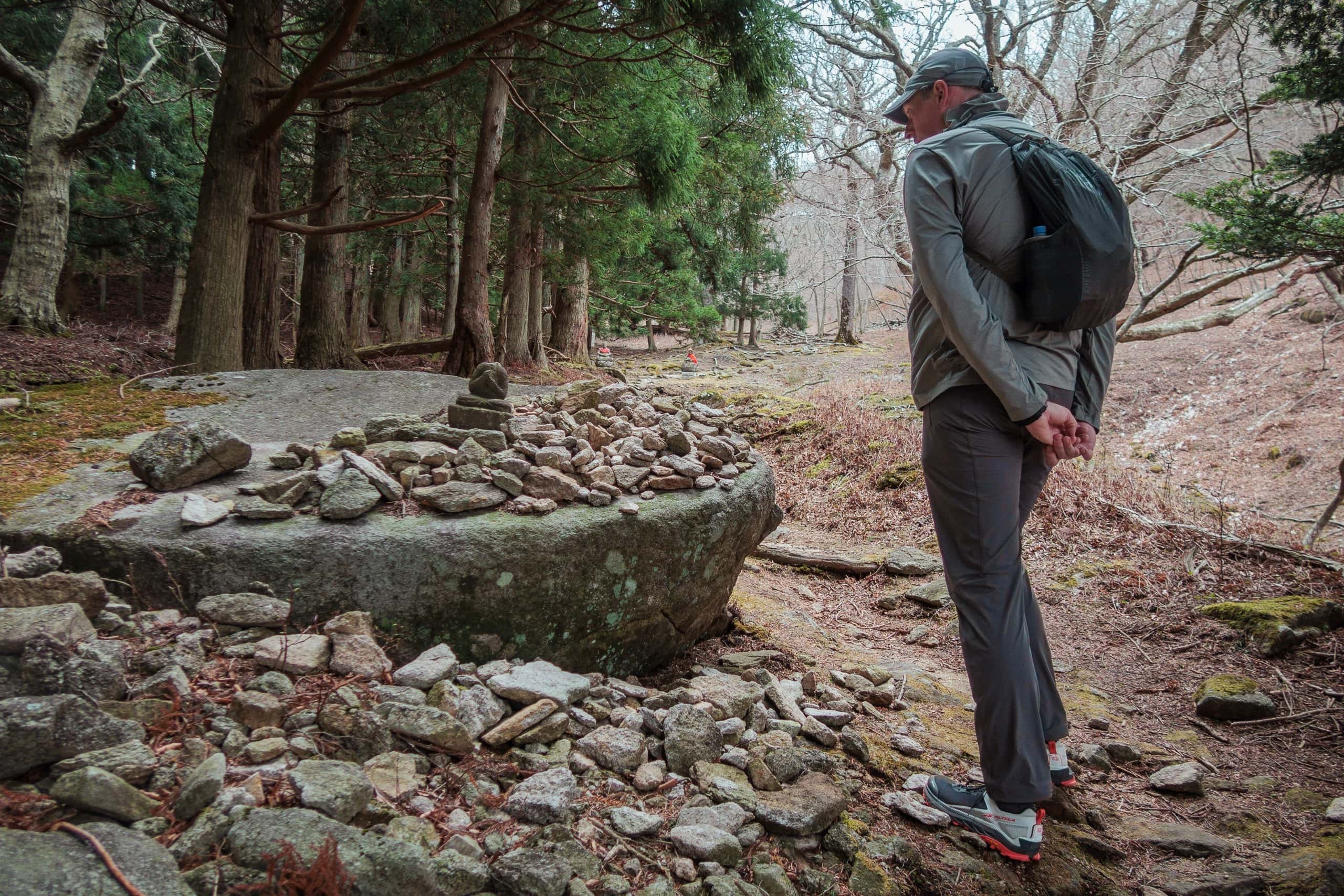
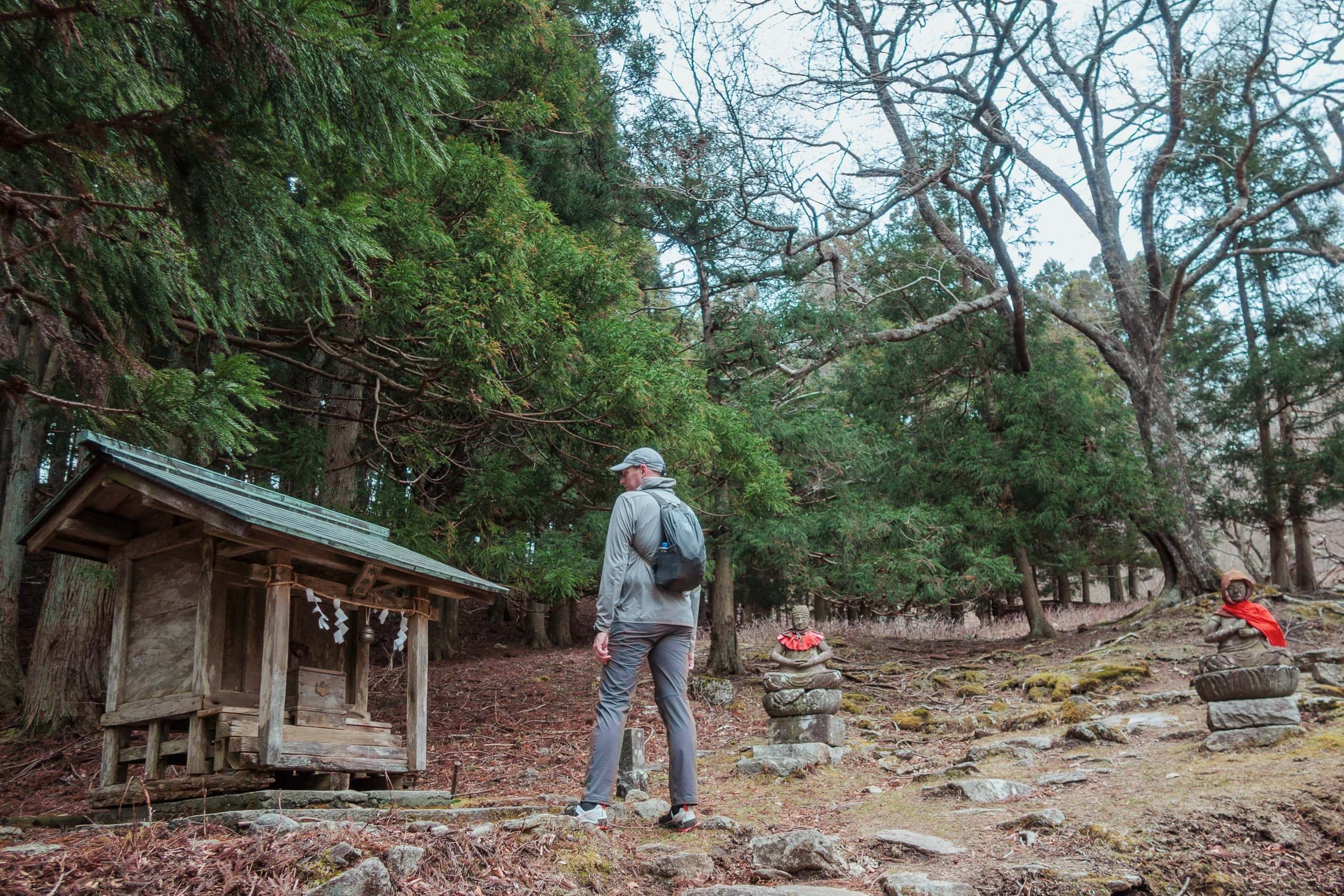
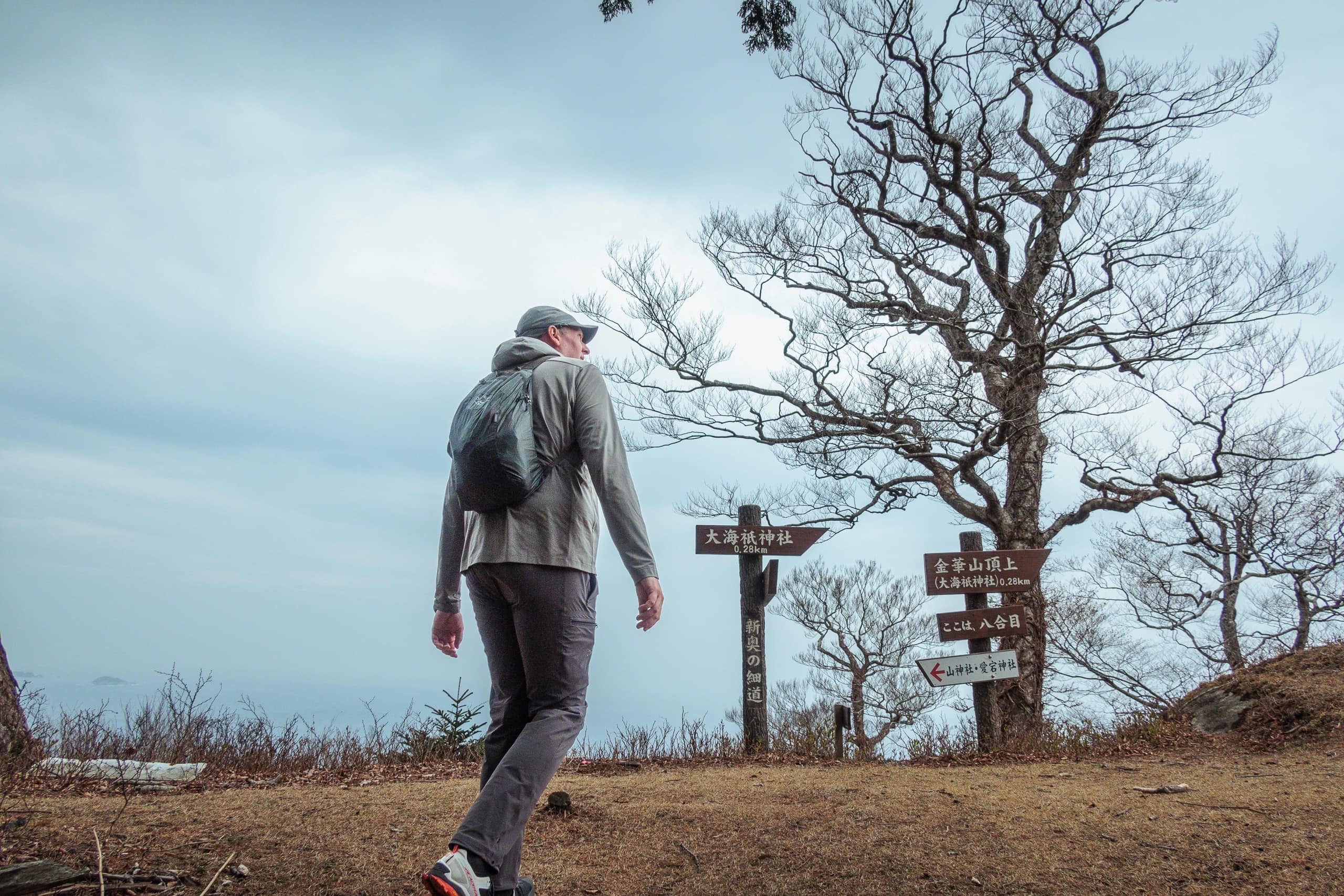
Once we reached the mountain ridge, the slope became much more gradual.
Even if this mountain is only 444m high, because of the strong sea winds constantly blowing, the ridge line was hardly covered with leafless trees. While nothing really blocked our views in every direction, everything further away was getting fogged out.
Instead, we were exposed to cold winds from all directions now.
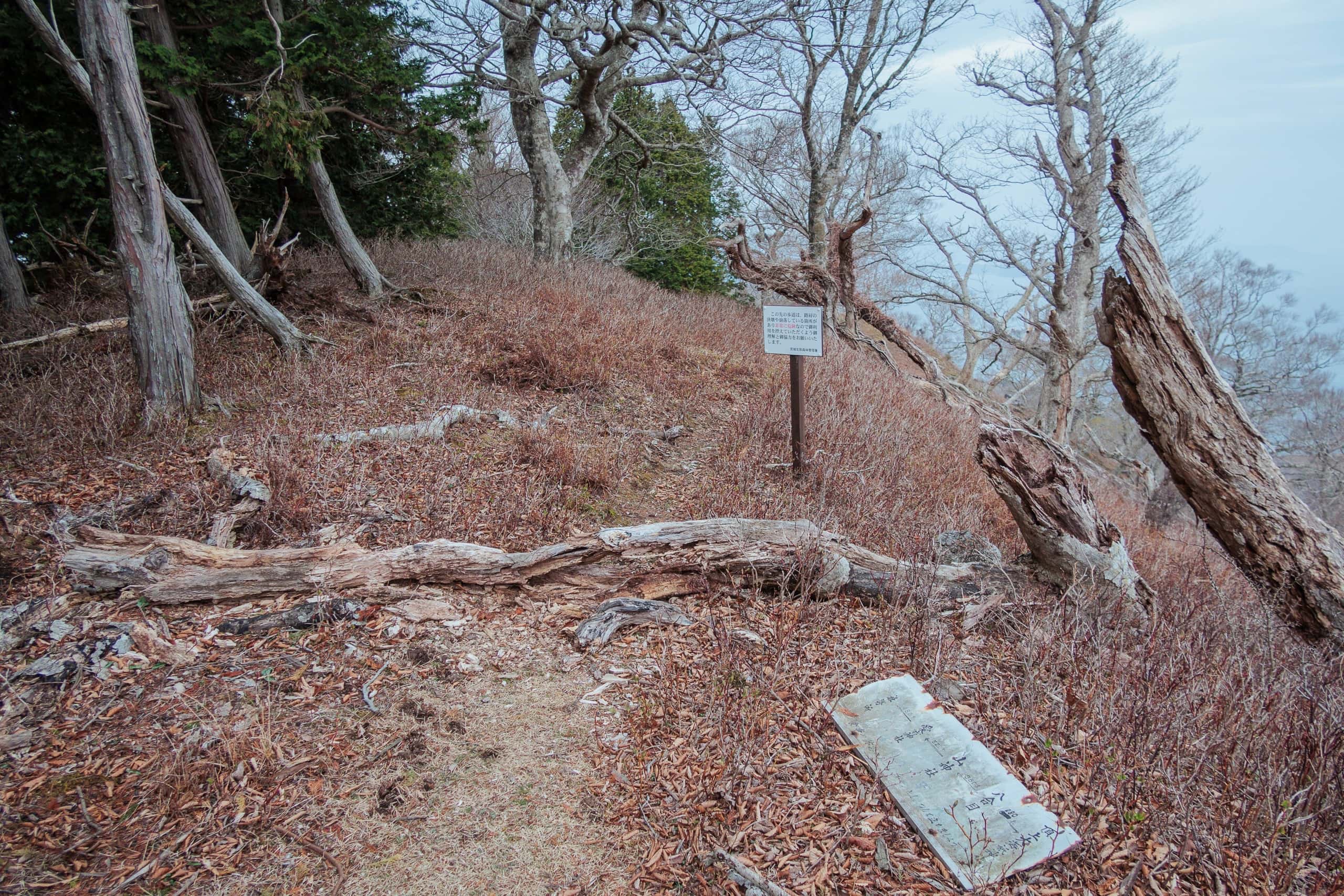
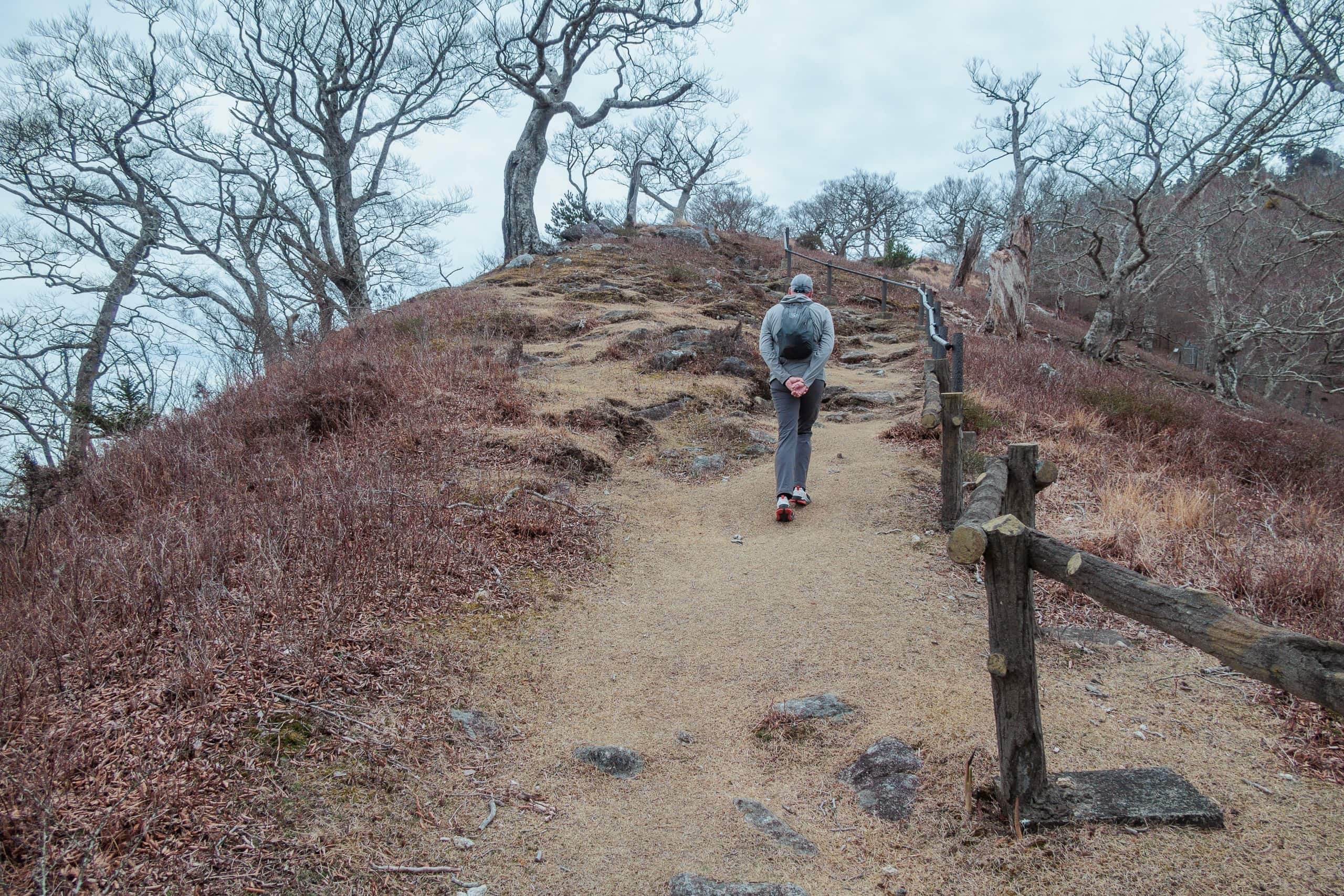
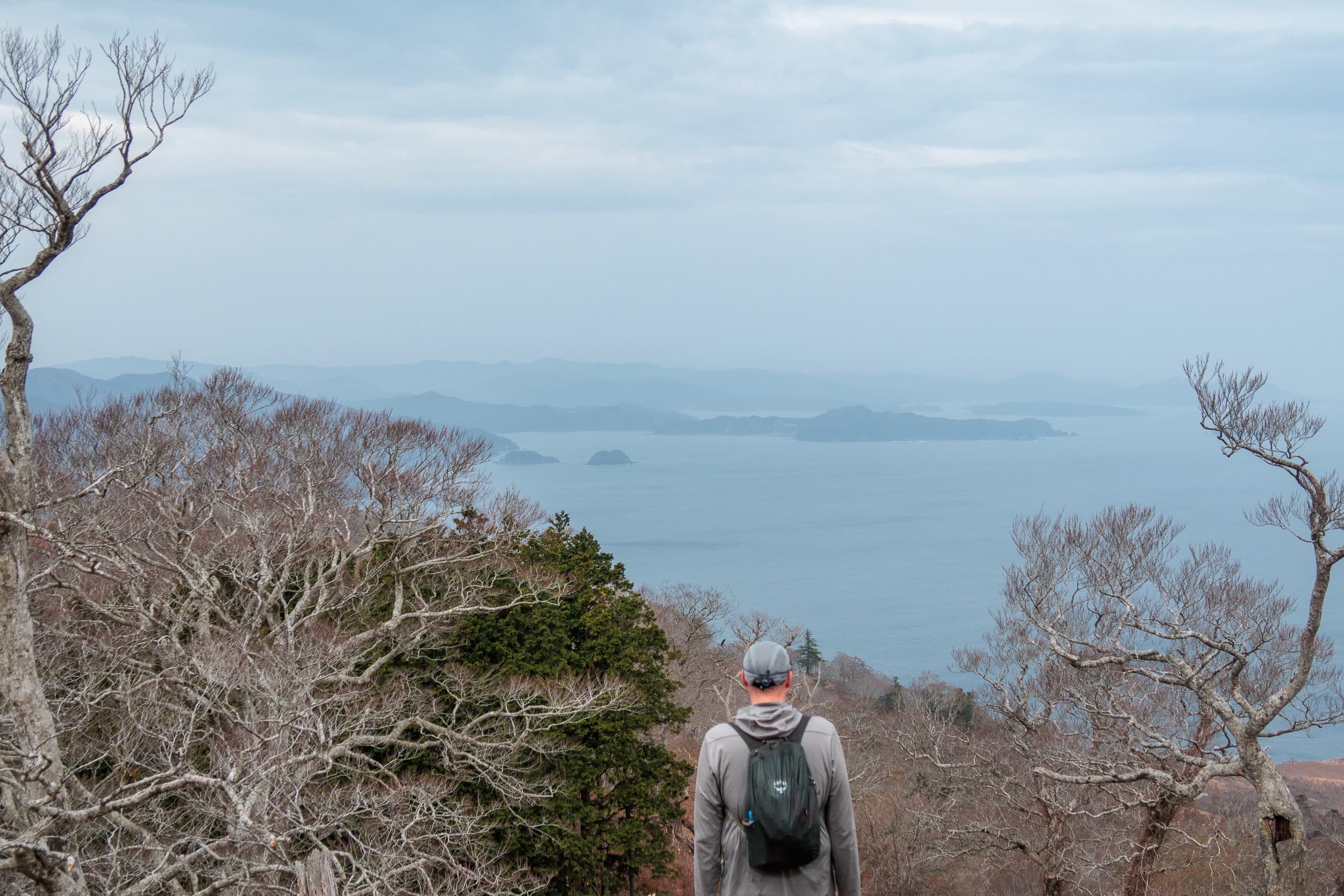
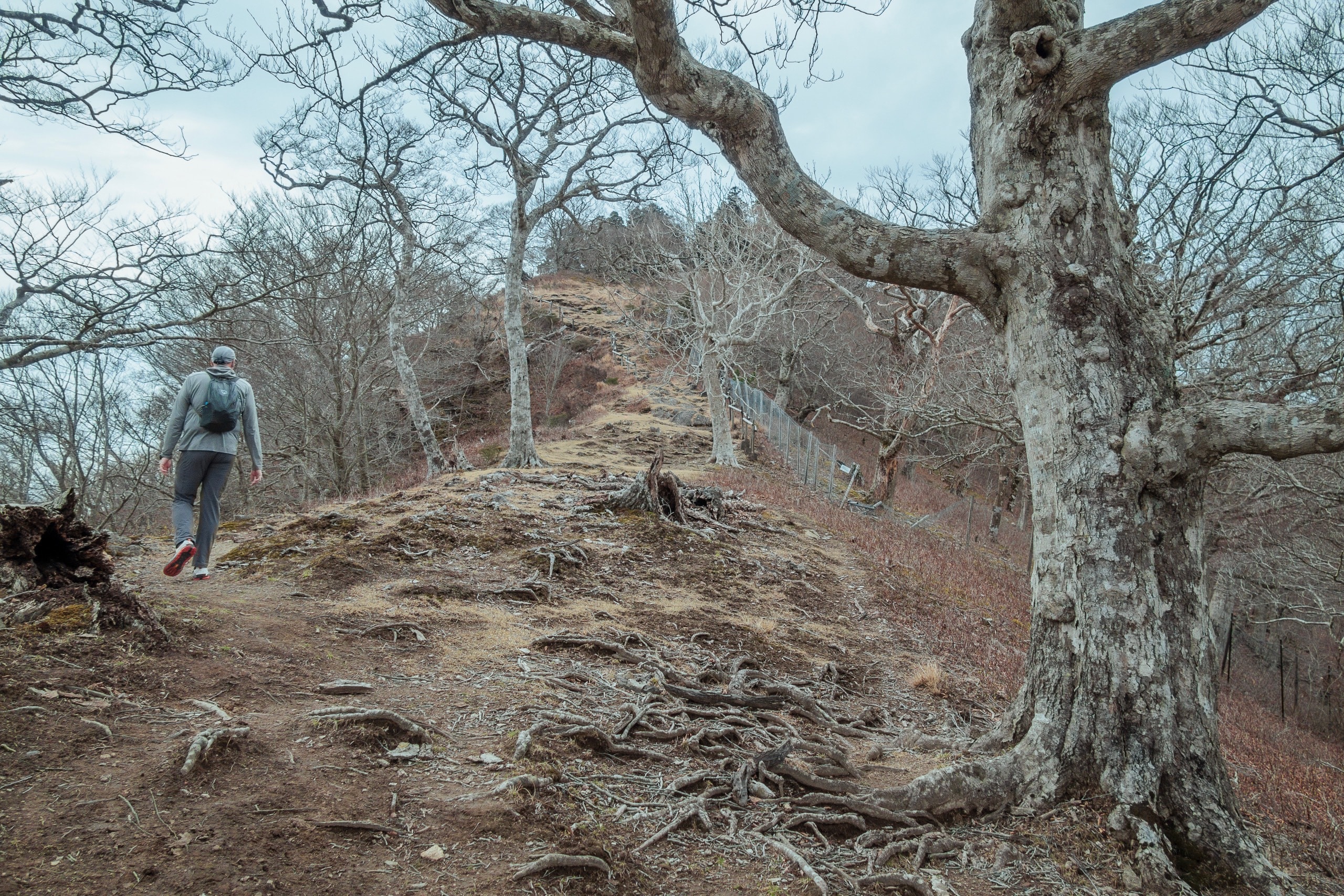
The Okunoin of Koganeyama Shrine, Owadatsumi Jinja 大海祗神社, on the peak was tiny and modest-looking. It enshrines multiple gods and goddesses, such as the gods of the sea and the wind.

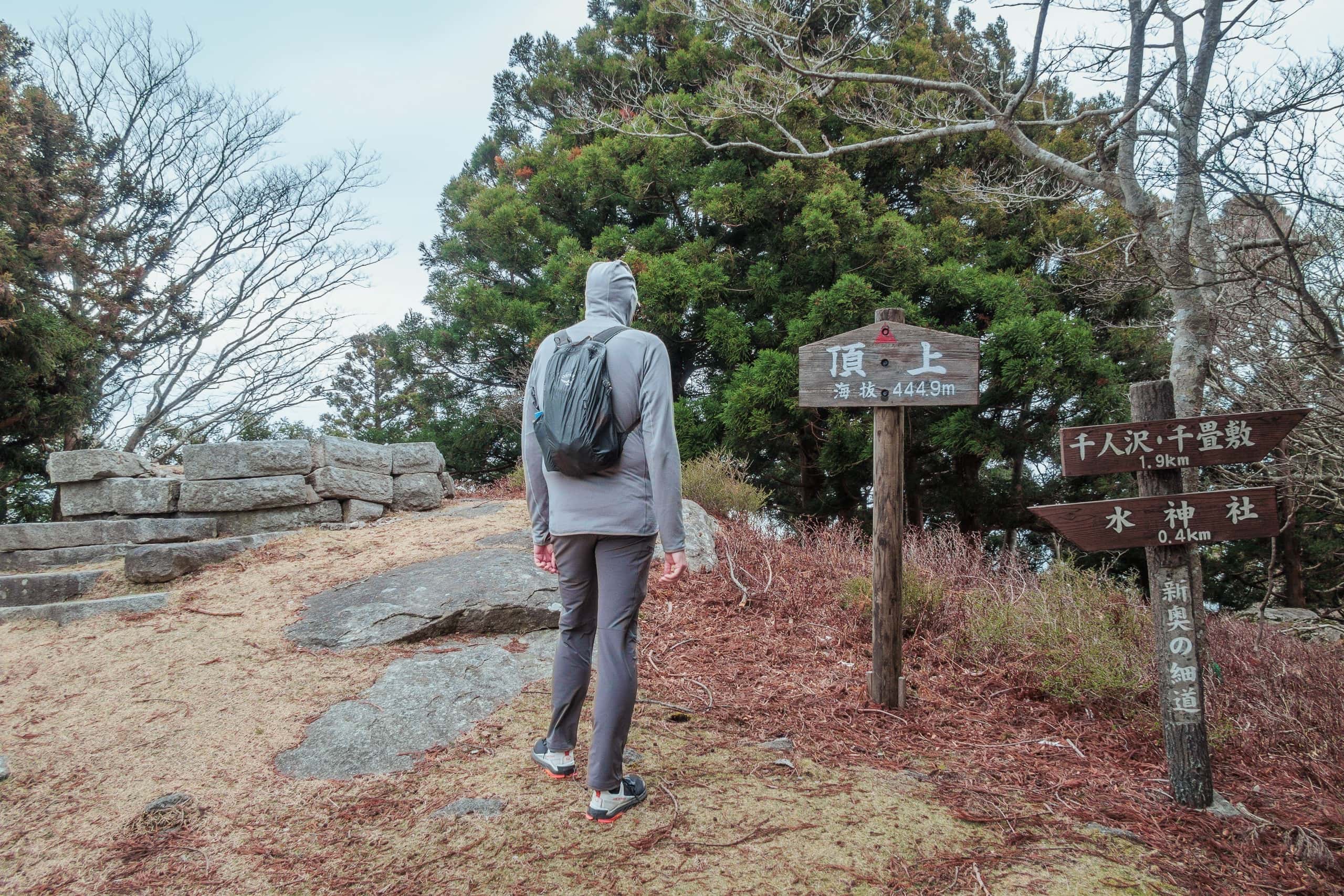
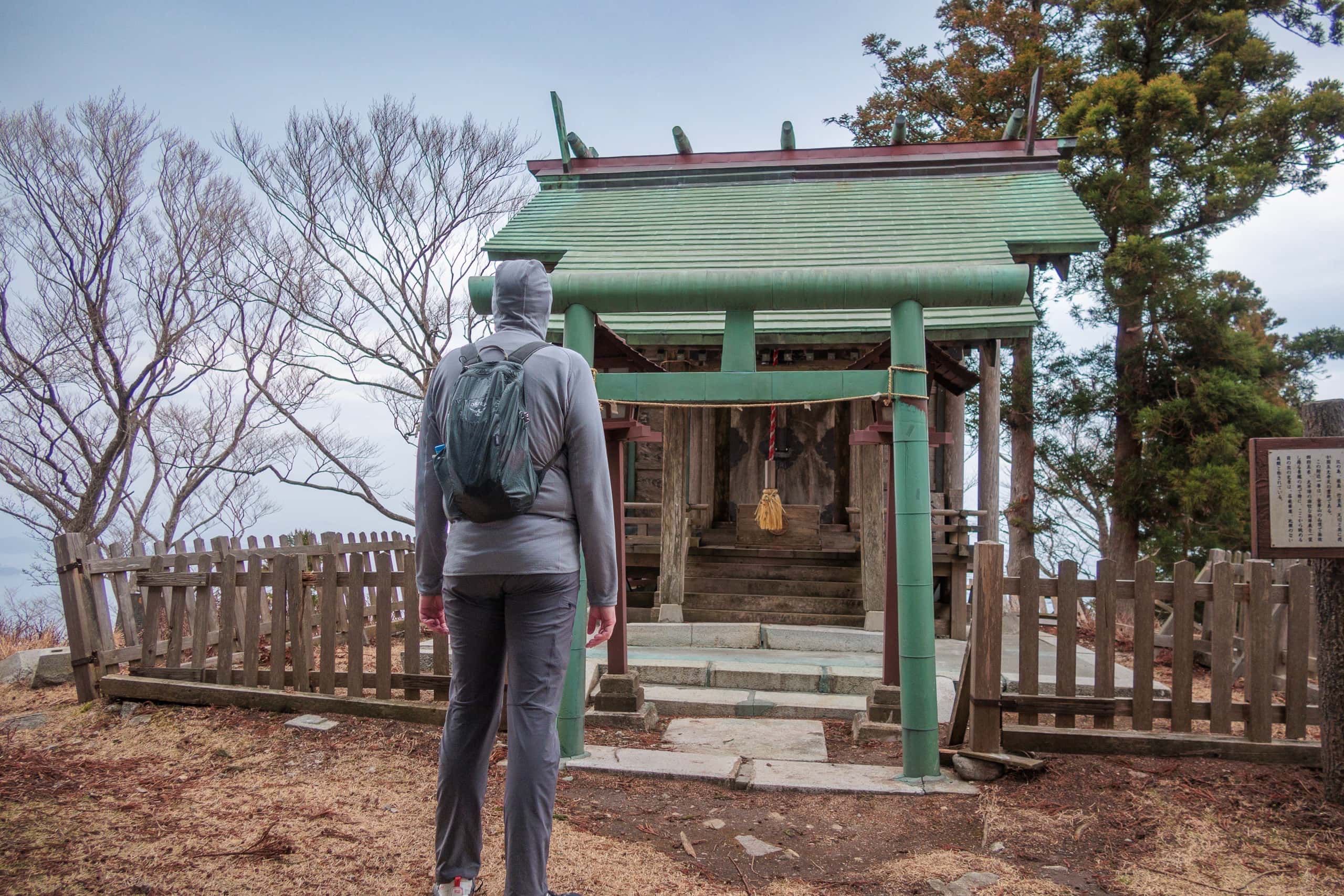
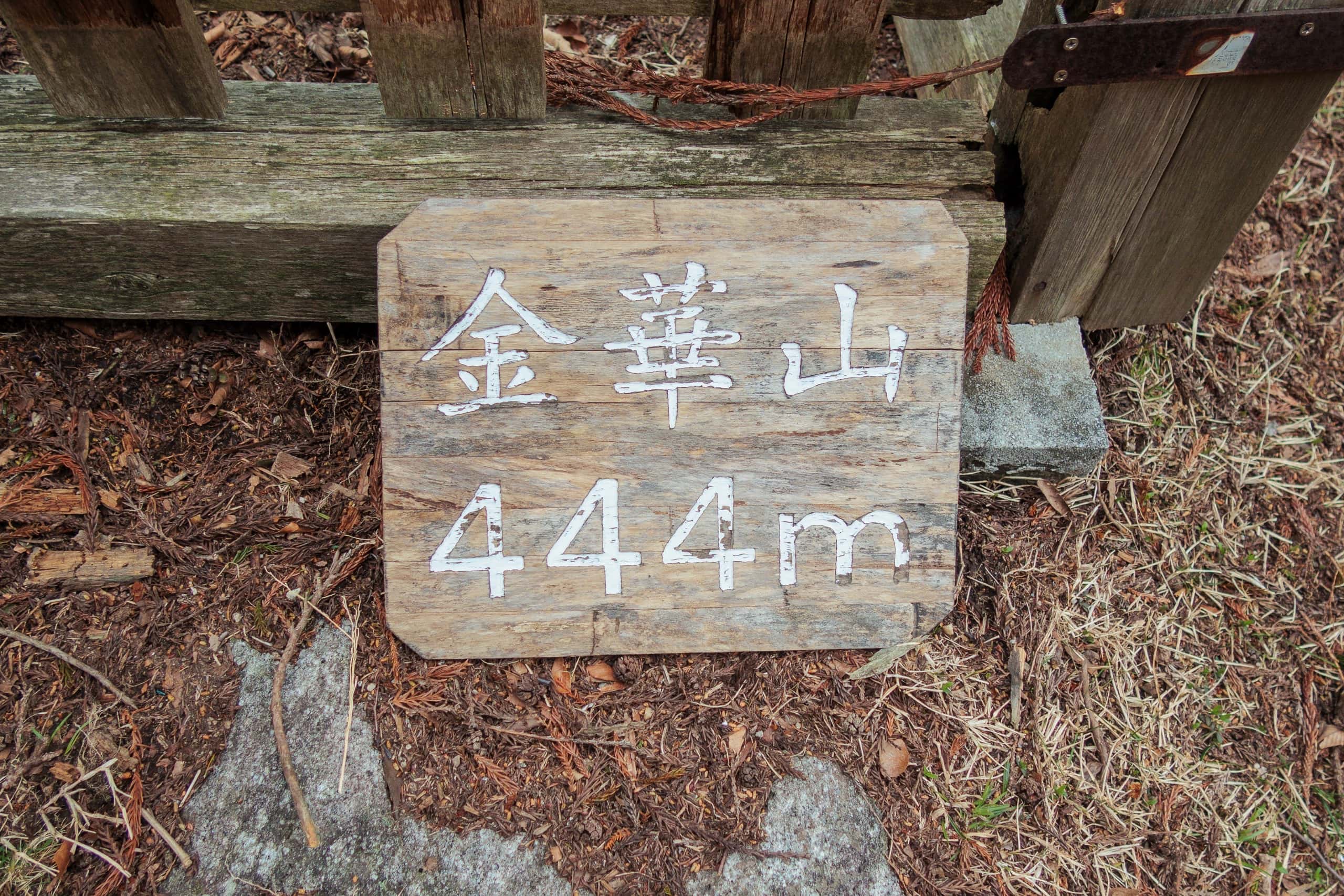
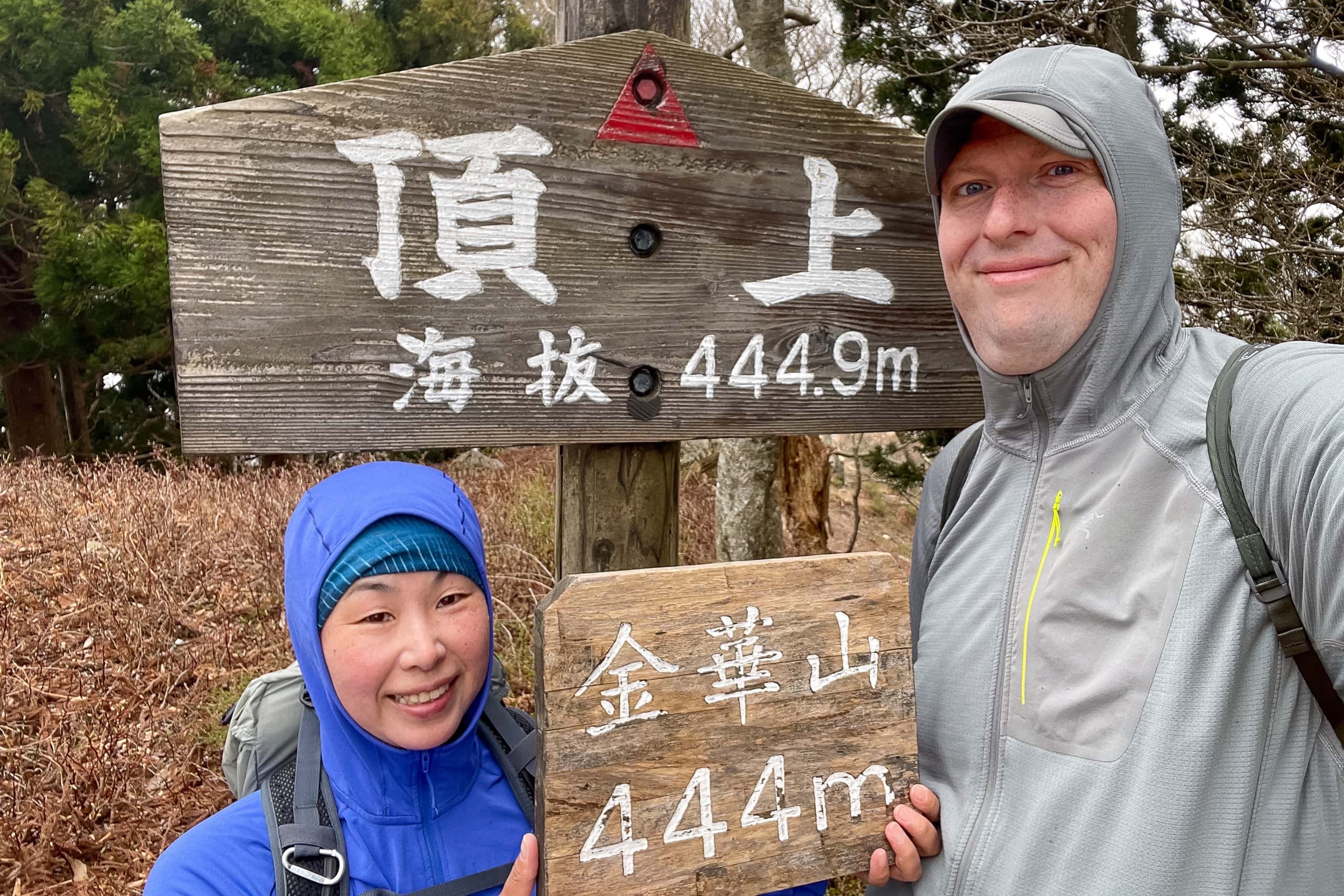
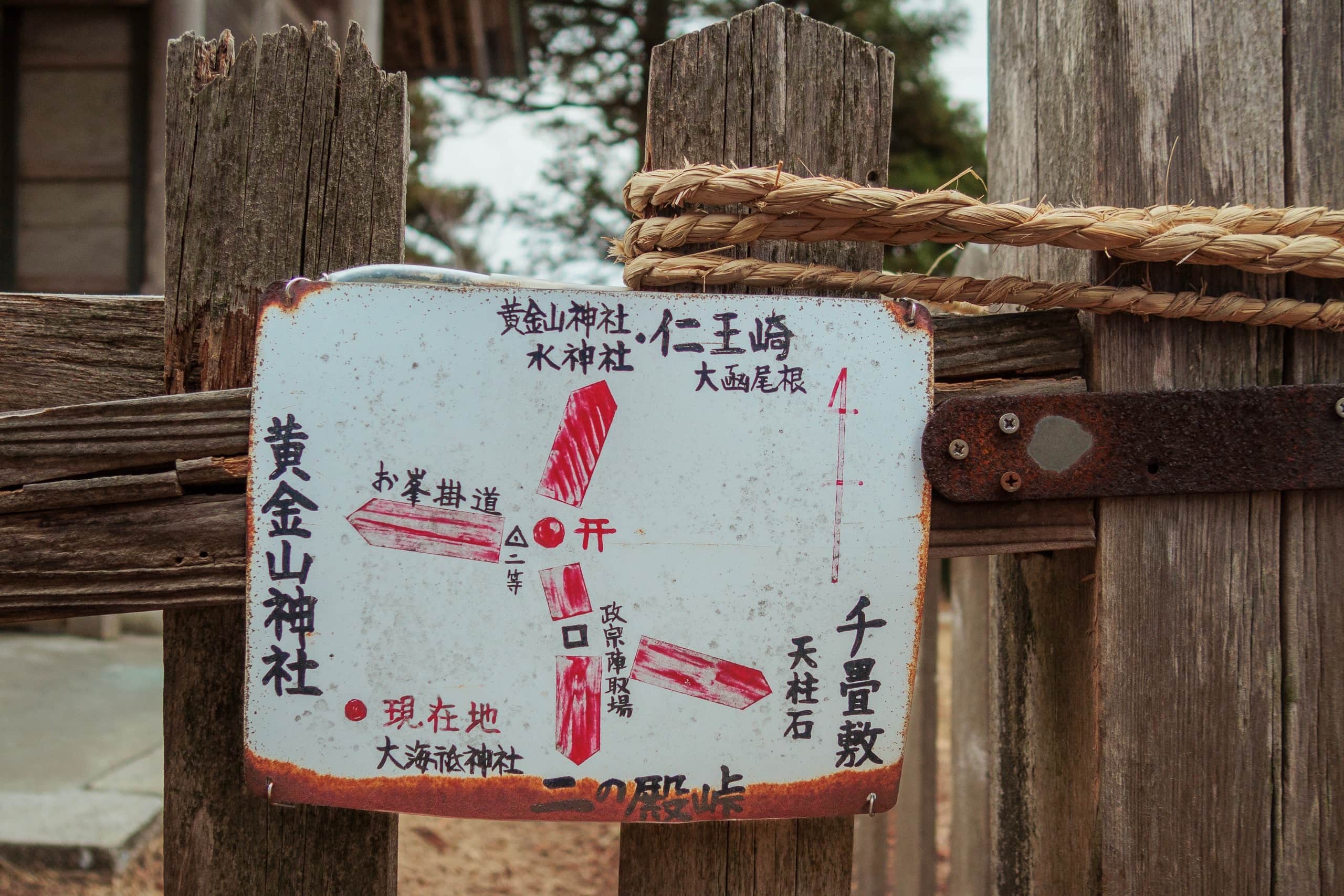
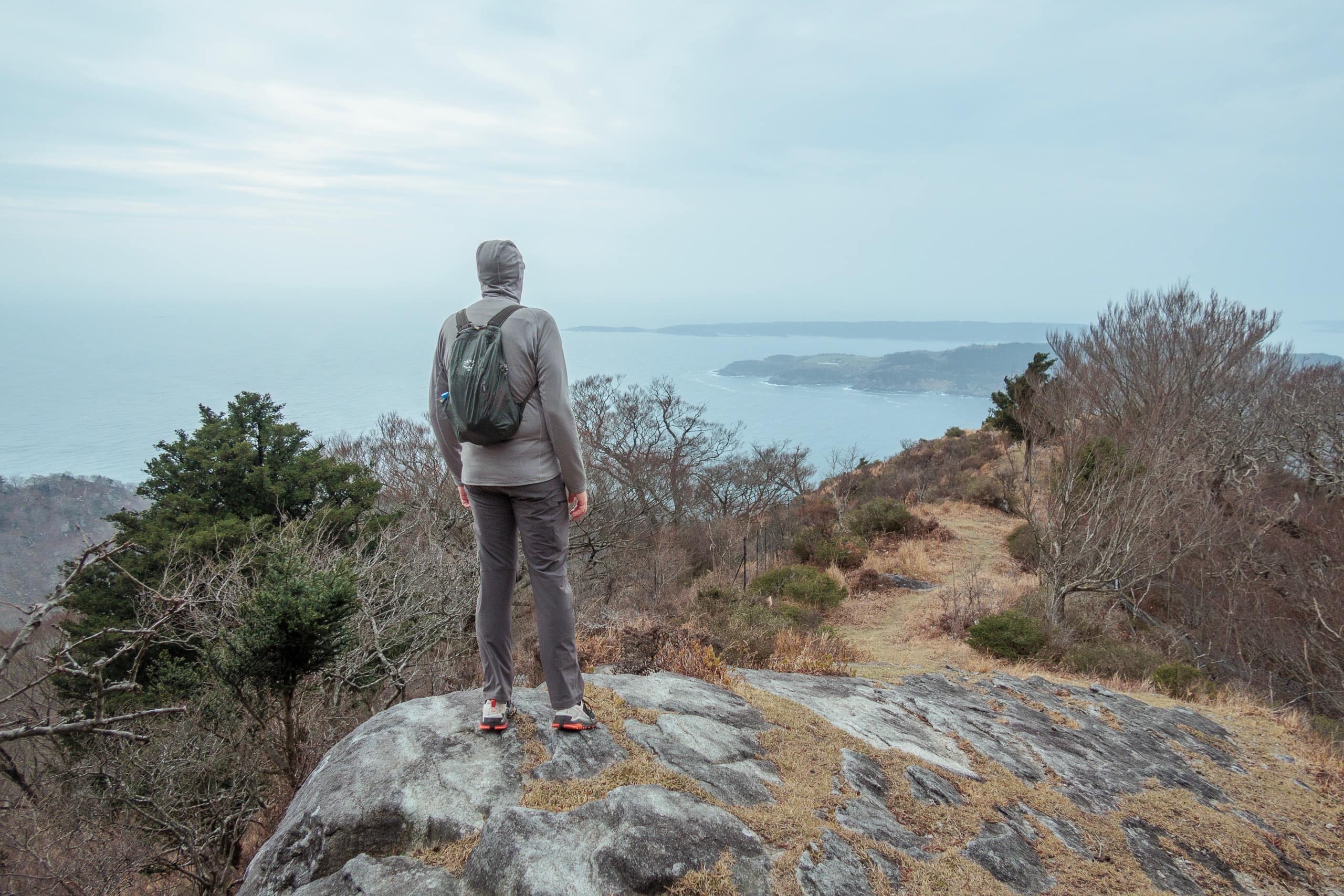
Since we felt cold, we didn’t spend much time at the peak and started walking down rather than pulling out jackets from our backpacks.
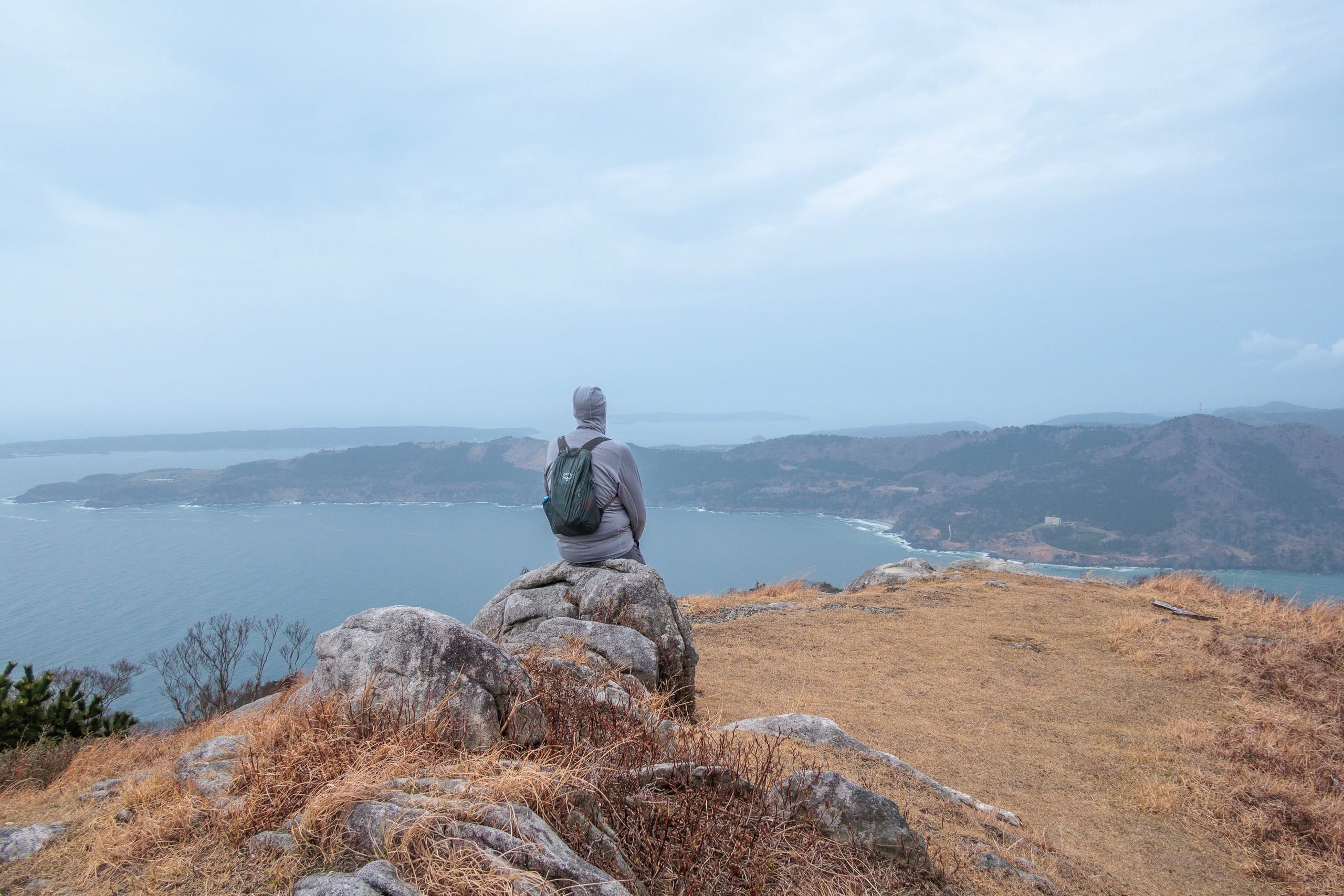
A signpost showed a trail down to the wave-cut rock terrace at the bottom of the mountain’s backside.
Of course, we had to skip it. The trail distance was shown as 1.8km for one way.
It meant not only an additional 3.6km, but it meant going down to the sea level on that side, coming back to this peak, and then, finally, going down again to the sea level on this side. Even with good weather and longer hours to stay on this island, the terraced rocks didn’t seem that attractive to going up and down the mountain twice.
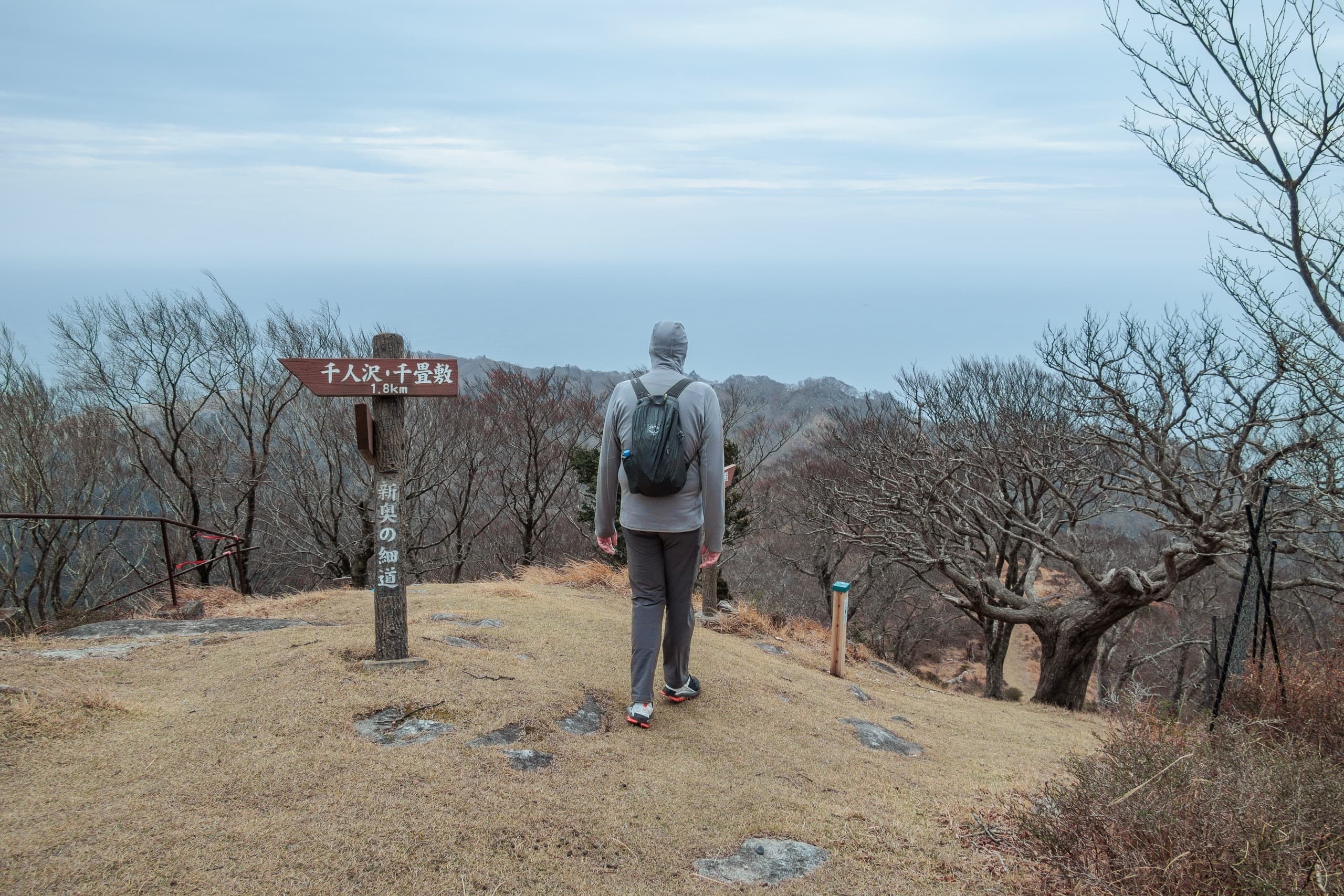
We also found an MCT trail marker for the first time on this island there, pointing to the steep descent along the ridge line in the opposite direction we came from.
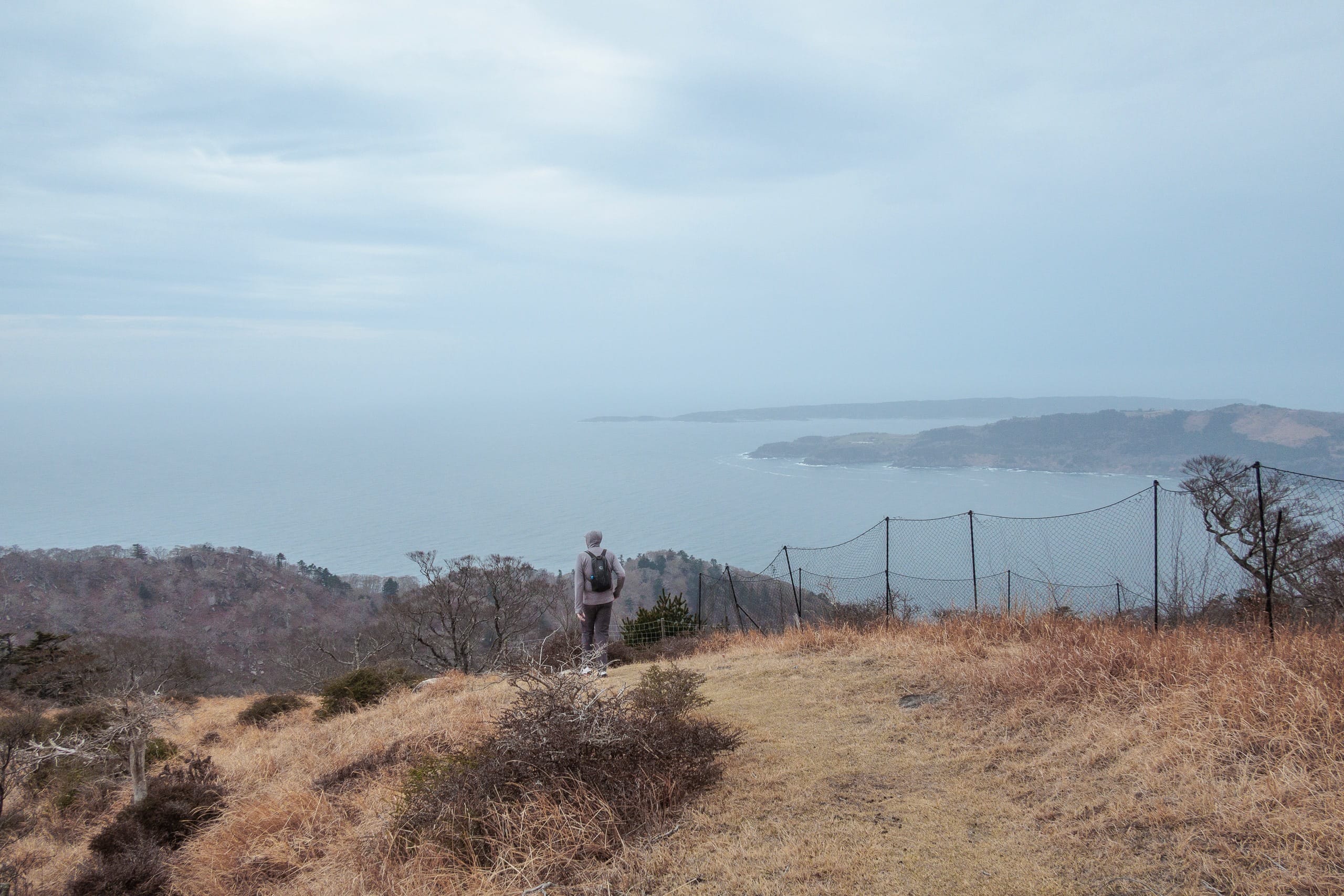
The steep down stretched pretty long, and we were glad we didn’t have to walk up on this.
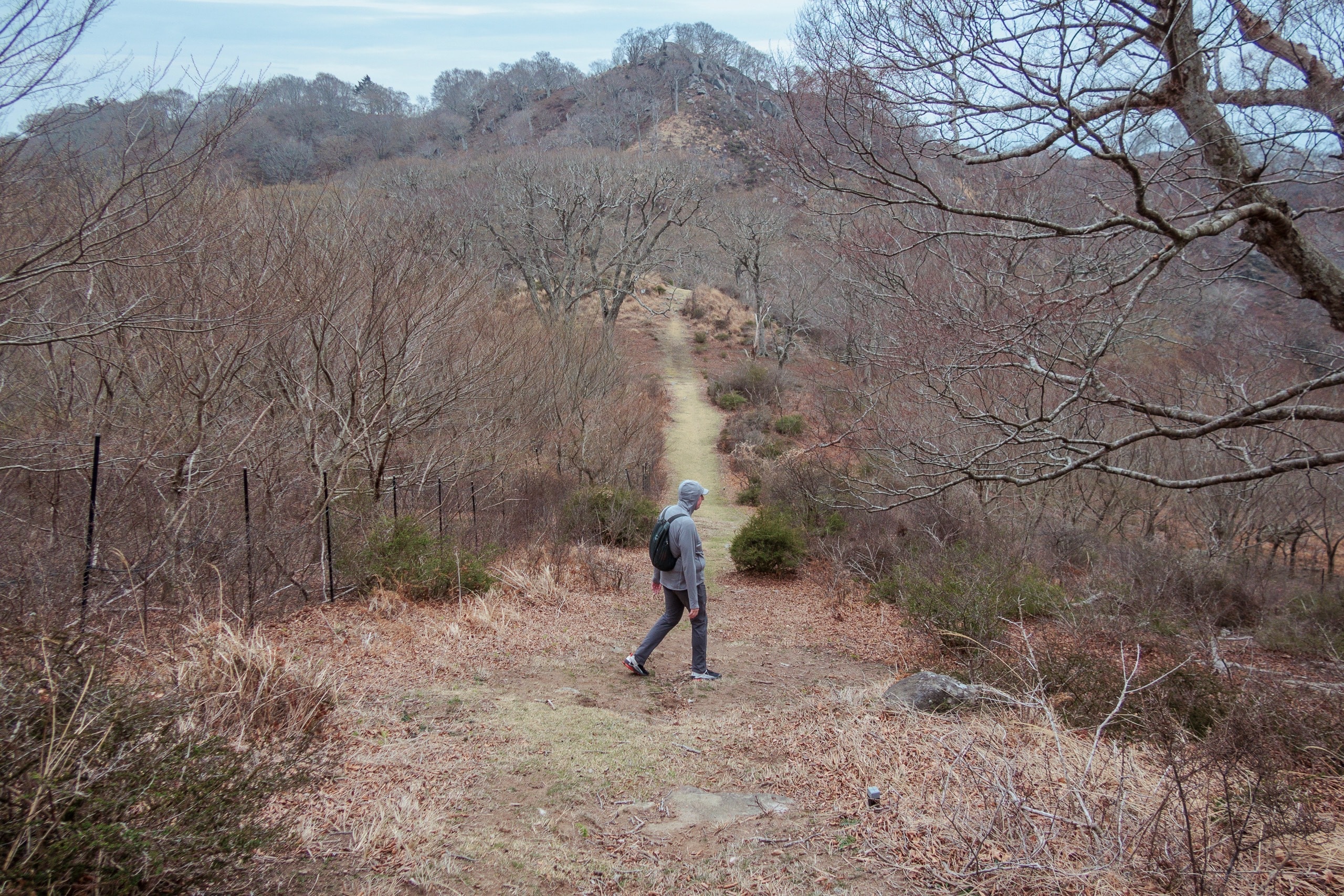
Finally, the trail made a turn and went away from the ridge line into another creepy forest.
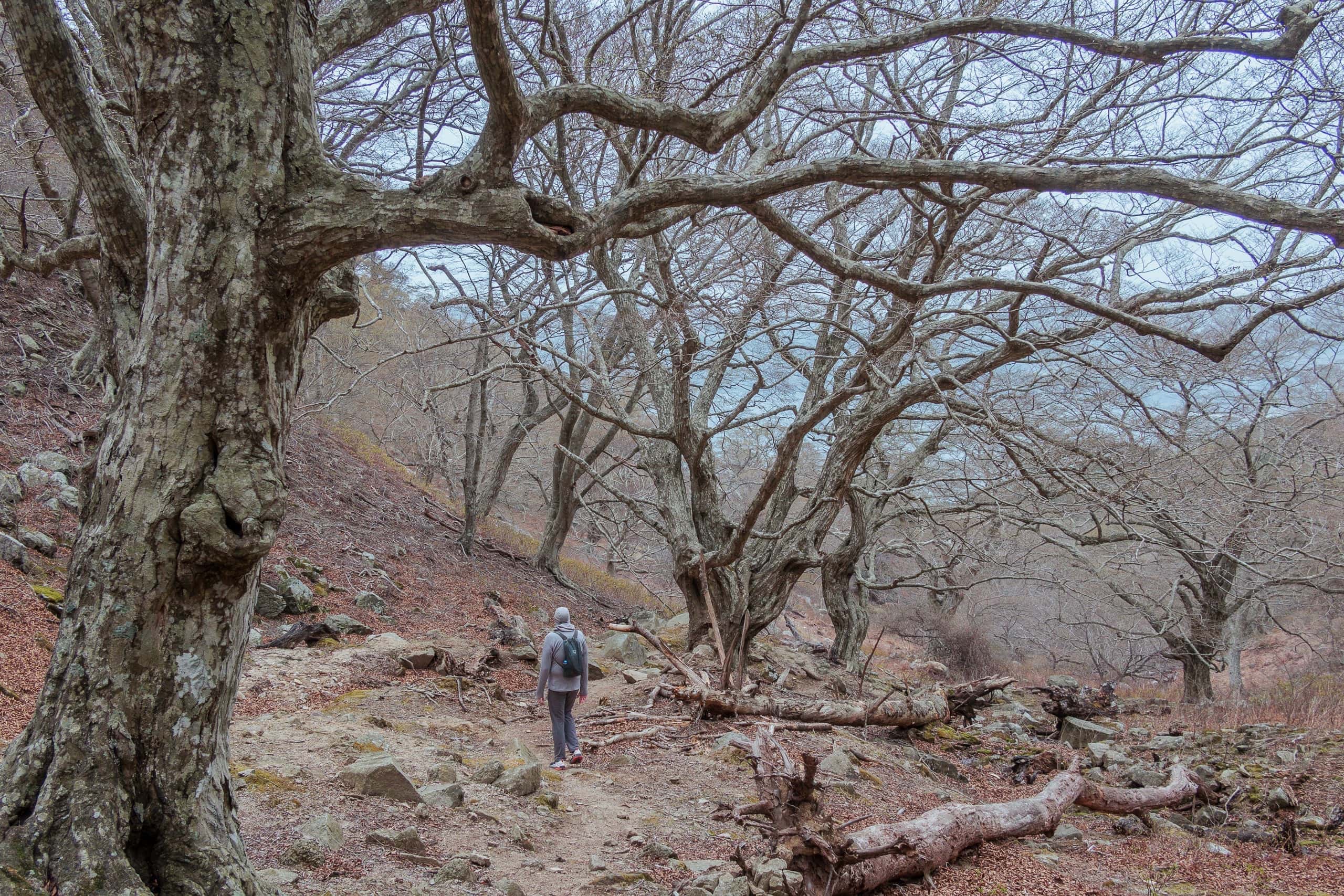
We saw a few monkeys sitting and walking behind dry tussocks. What kind of food could they gain from the limited resources on this island?
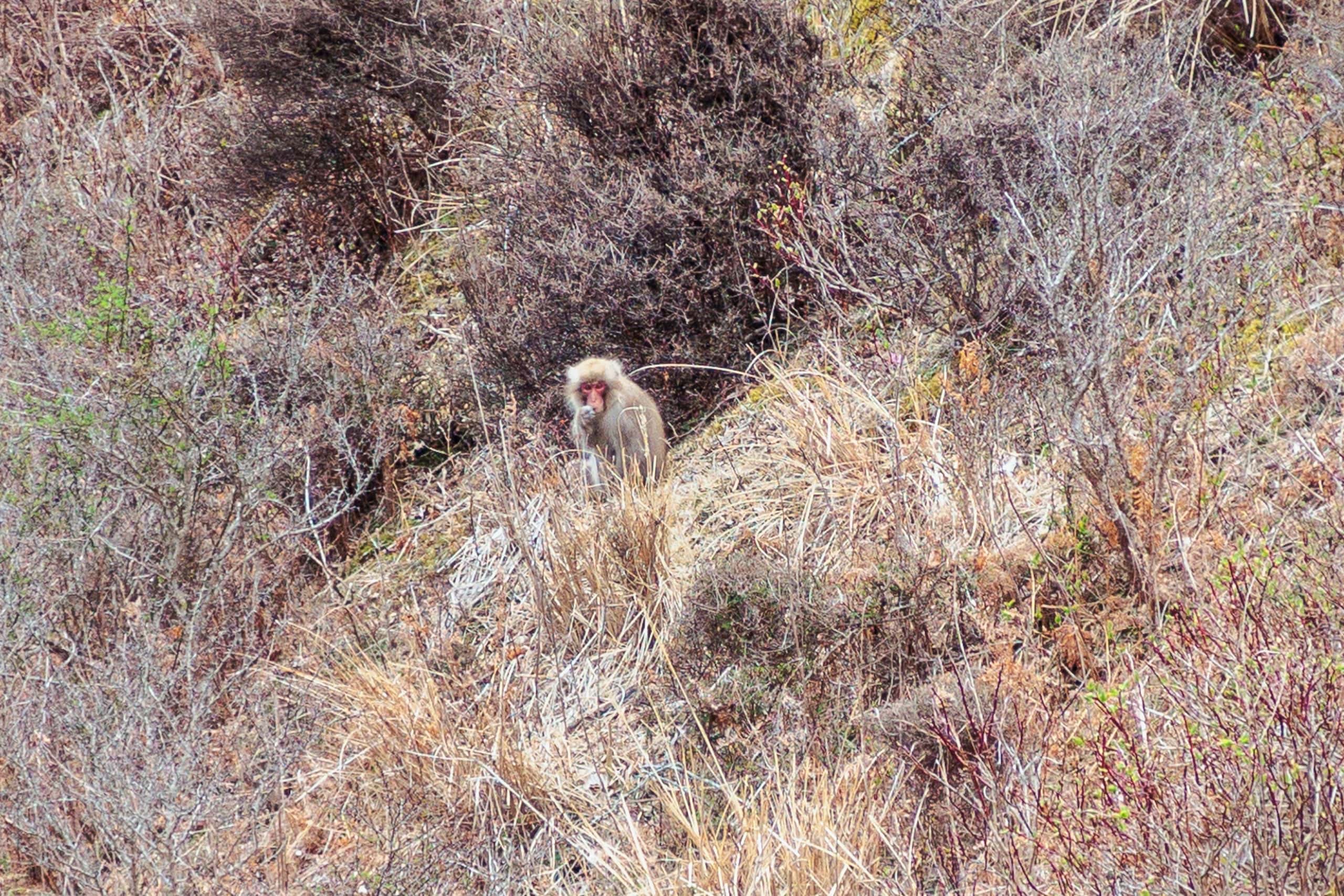
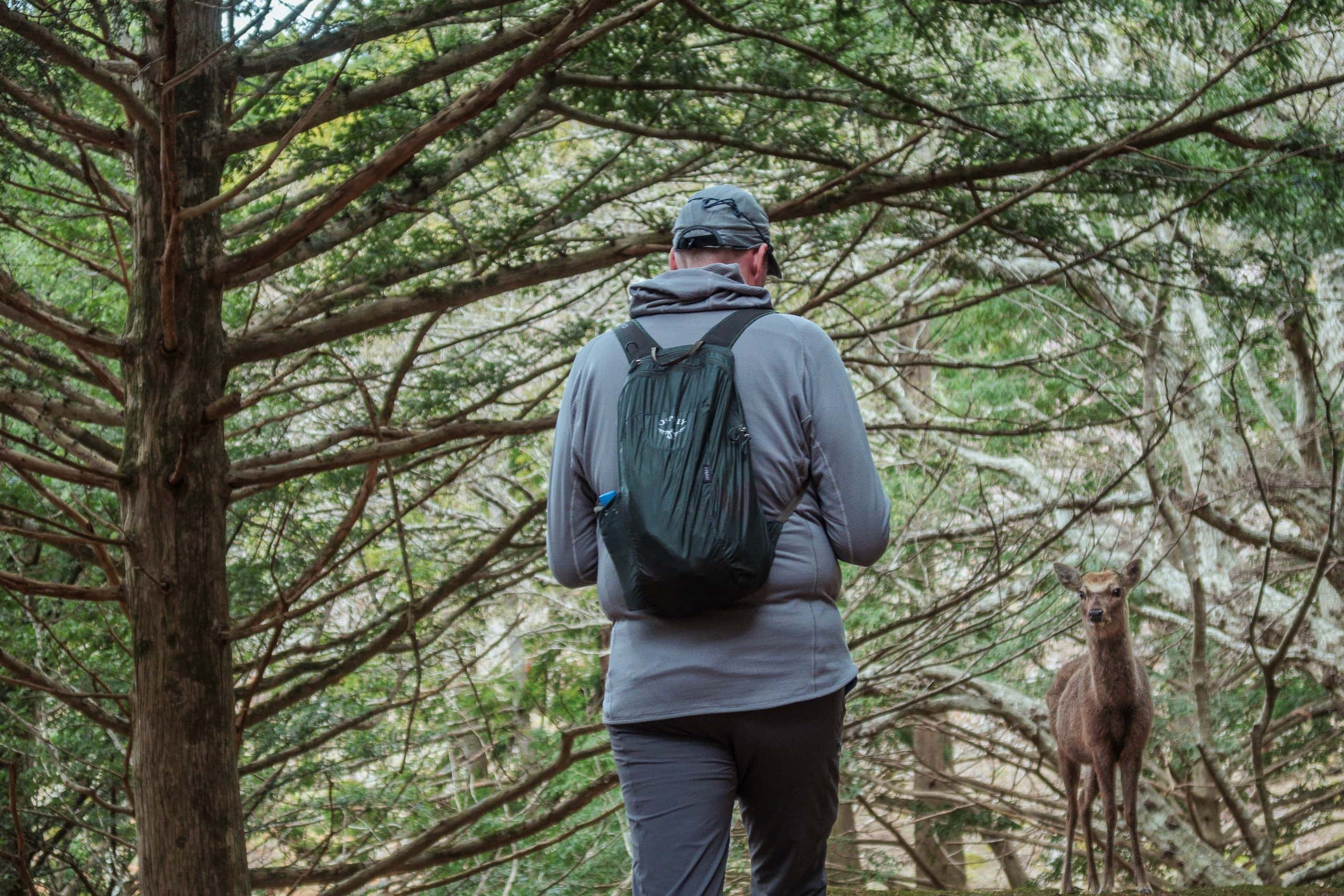
This trail right side of the peak is much longer than the left one. If we walked counter-clockwise, we had to deal with much longer uphill and sharp and rocky downhill.
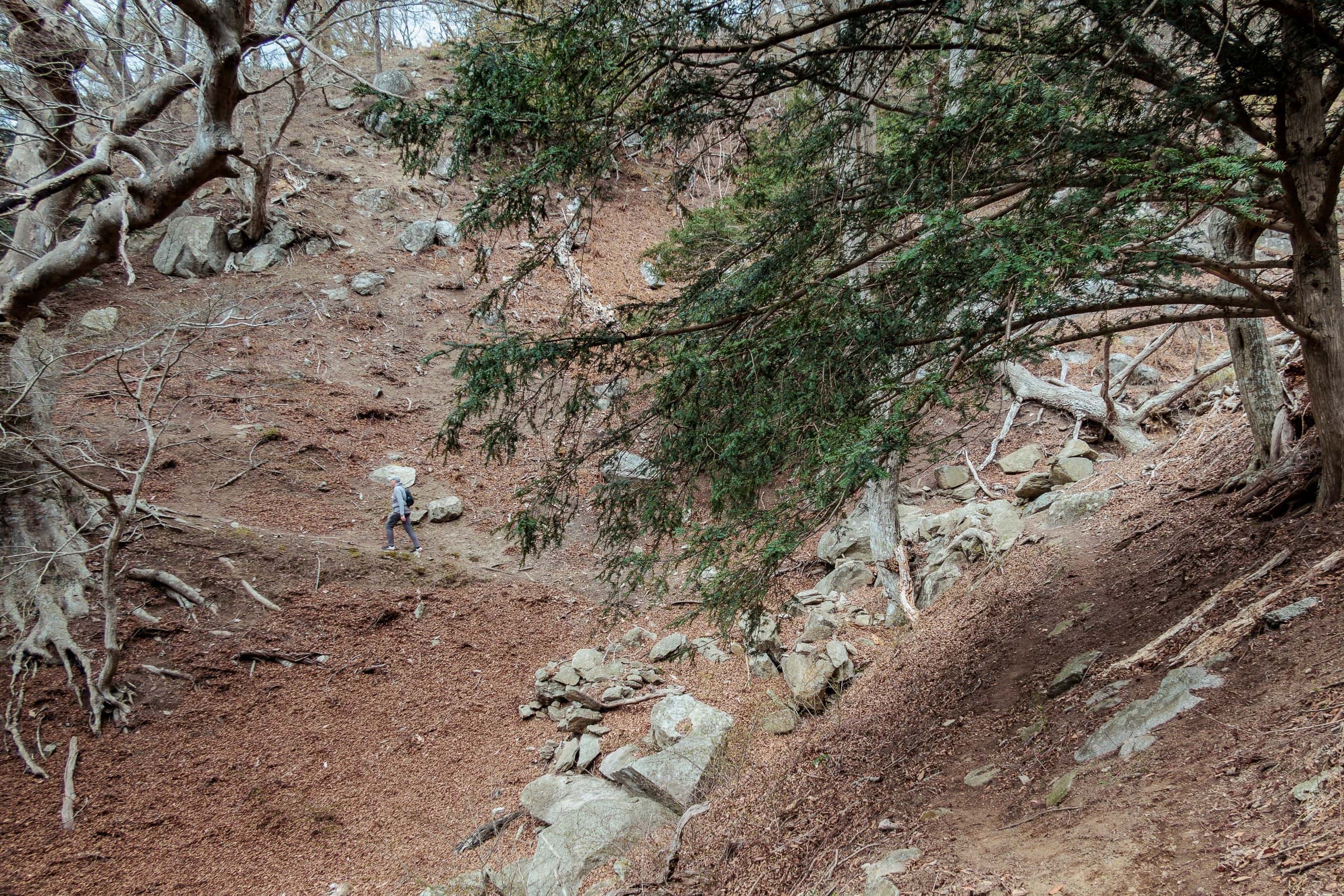
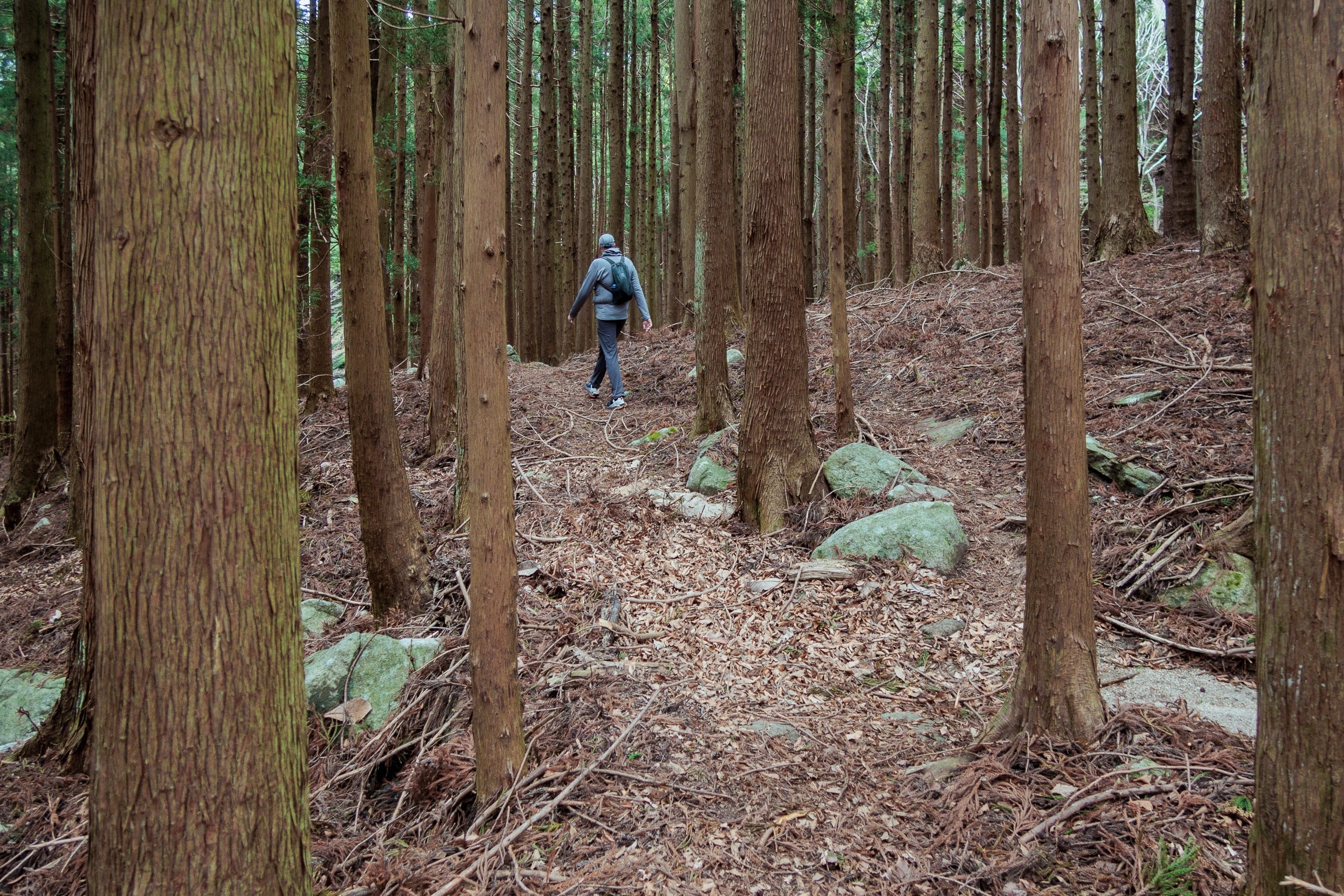
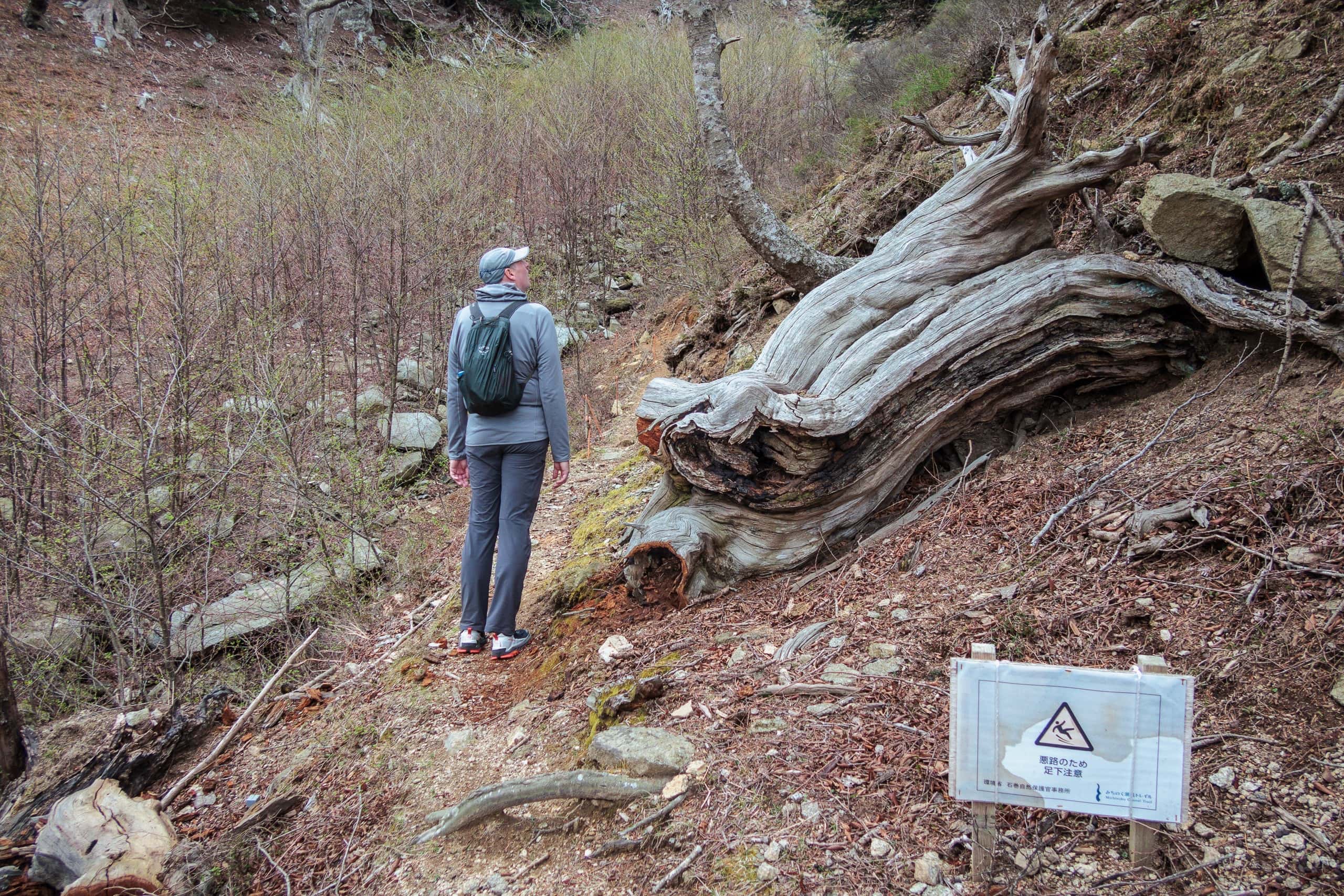
While walking on the last part of the trail, running along the same altitude line as the main shrine, we saw the regular ferry heading back on the sea to Ayukawa port.
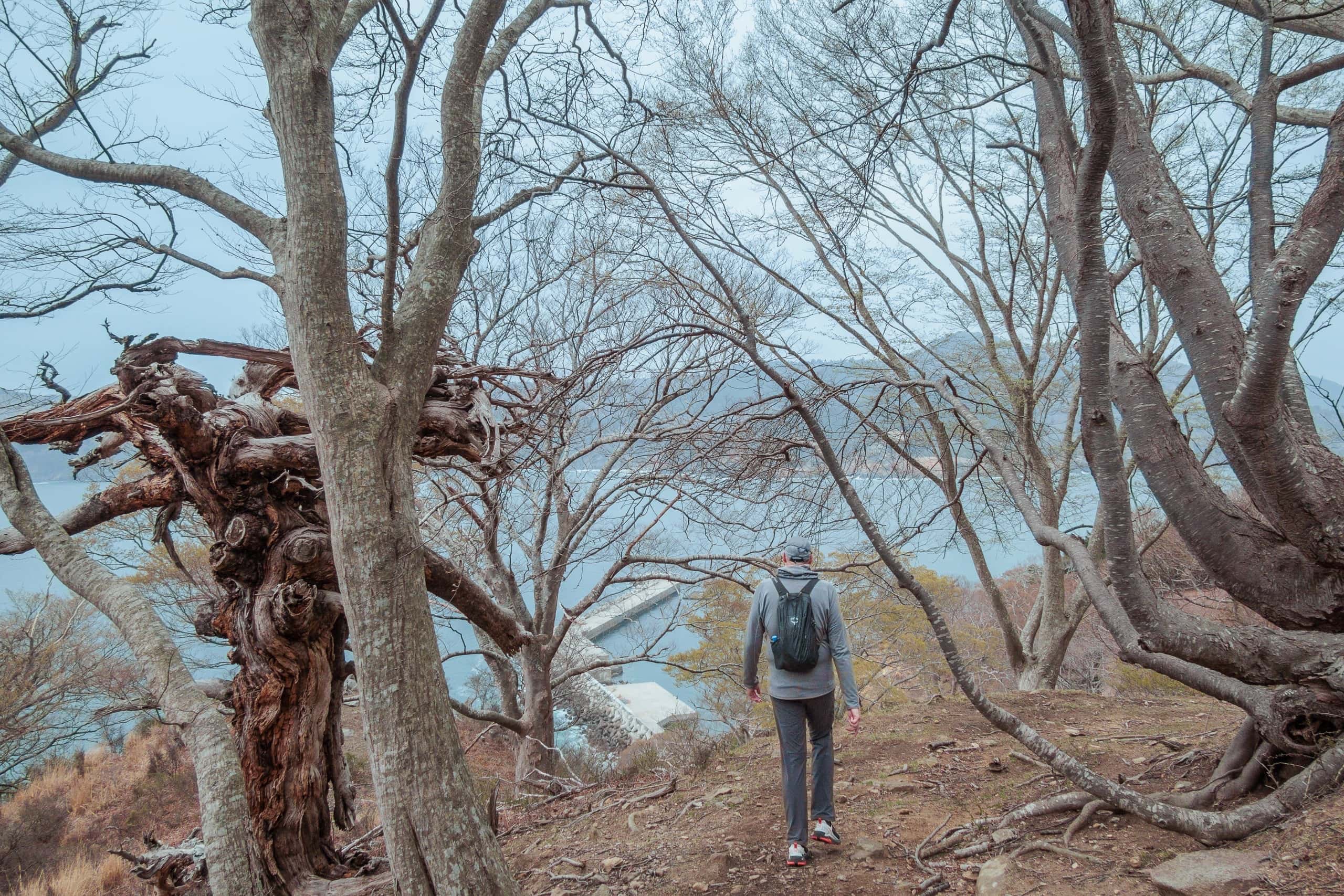
Since we arrived, we kept walking at our normal comfortable pace, without heavy backpacks. We didn’t take any long breaks. And yet, we have not gotten back to the main shrine.
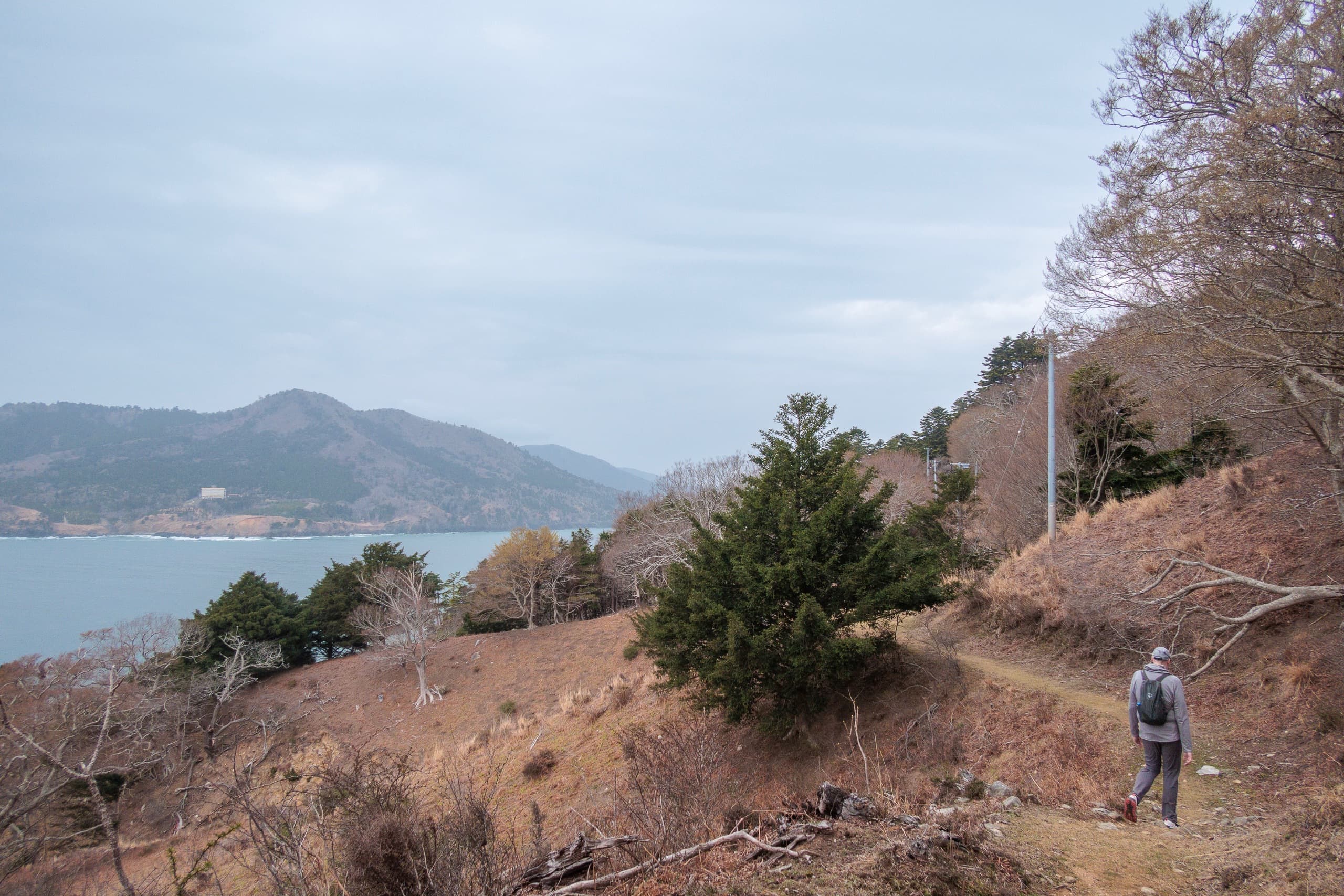
Kinkasan Koganeyama Shrine
Returning to the shrine, we found many people enjoying their visits and taking pictures of friendly deer. They must be passengers on another regular ferry from Onagawa port as their arrival and departure are one hour later than the Ayukawa ferry.
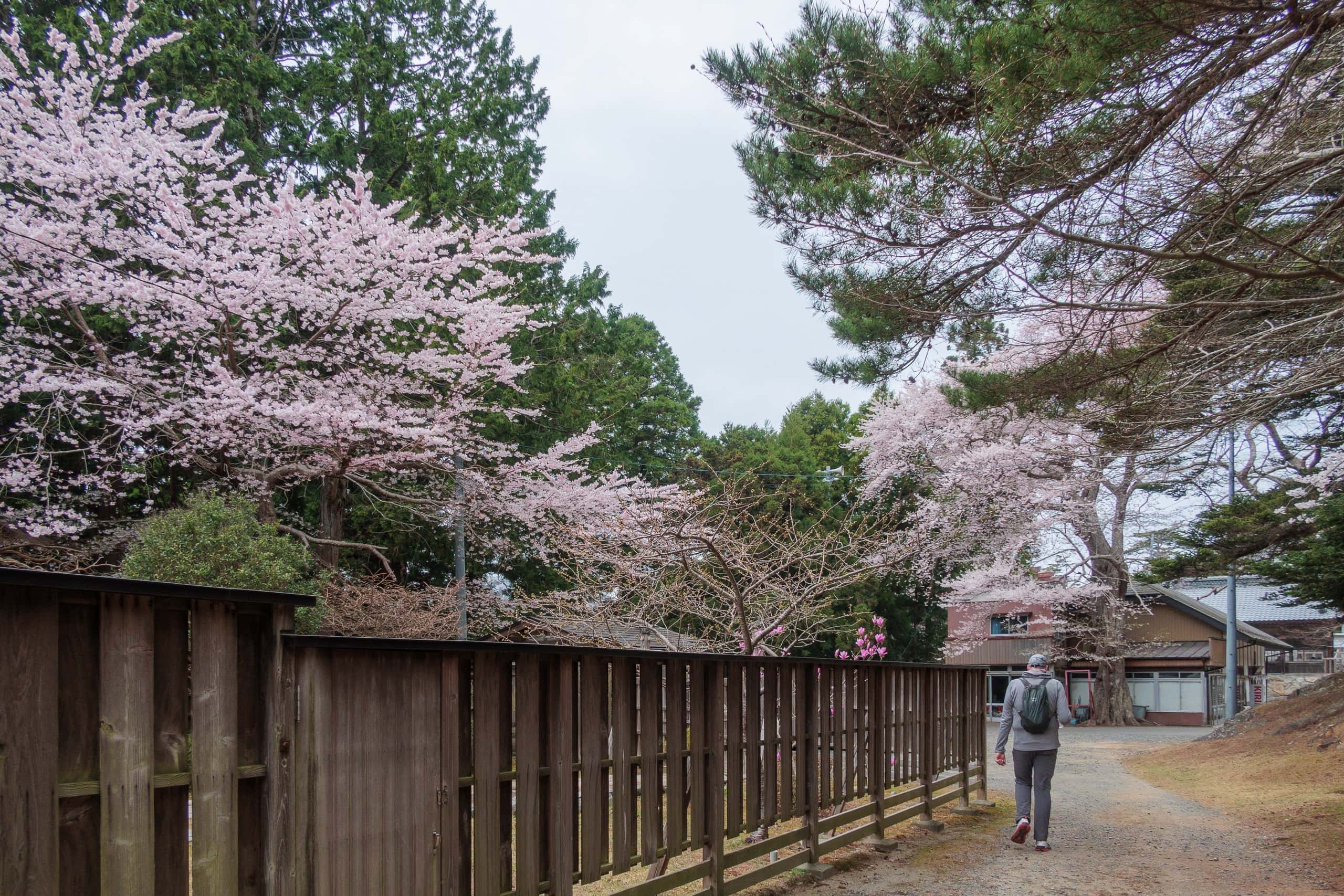
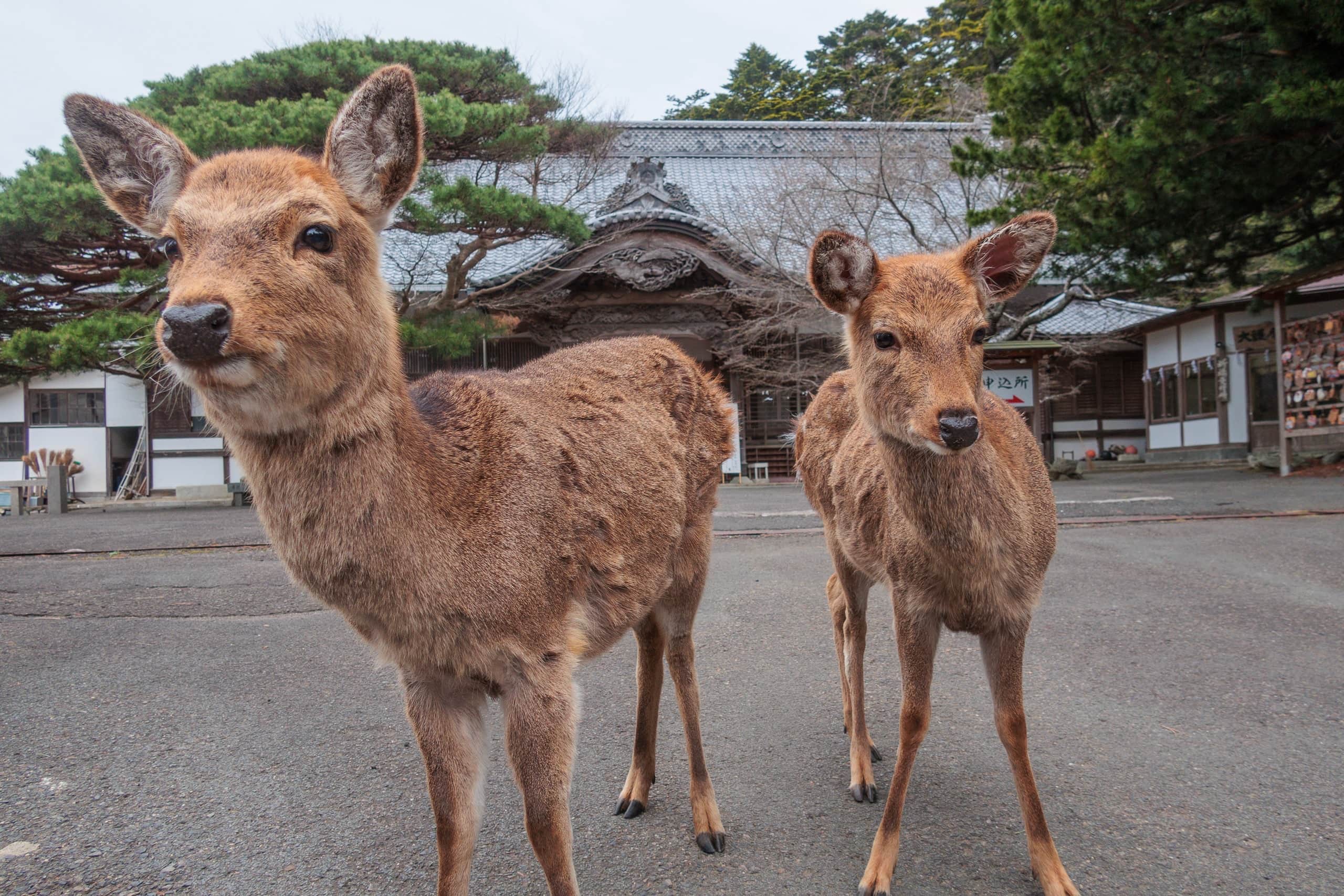
After getting another quiet accusation stare from fawns, we dropped by the small shrine to worship the Benzaiten 辯財天/弁財天 goddess near a clear stream from the mountain, probably the most popular site in the Koganeyama Shrine area.
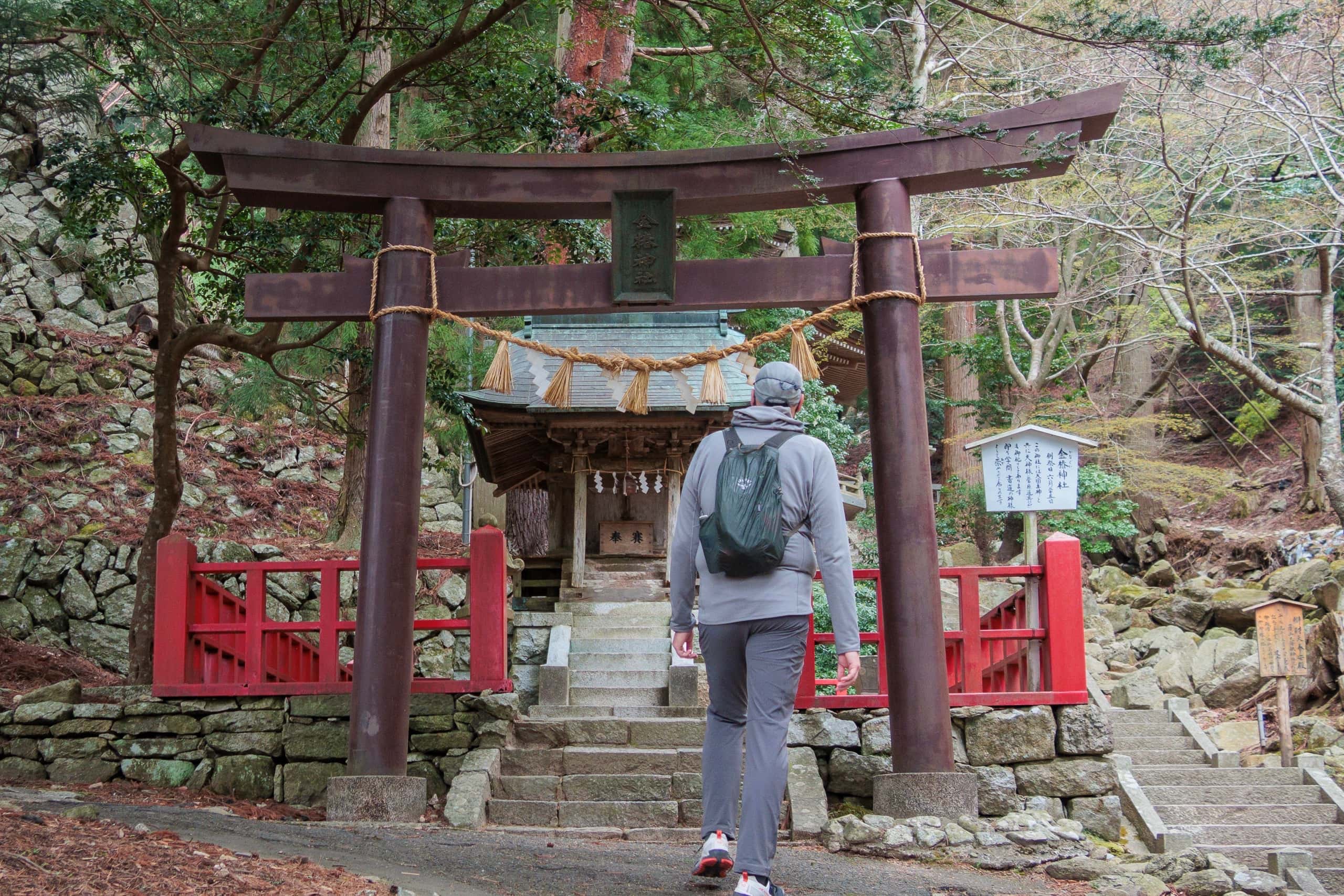
Like other shrine visitors, we dropped all coins from our wallets into a small strainer and washed the money with the stream water. By doing this, people believe we can get more money.
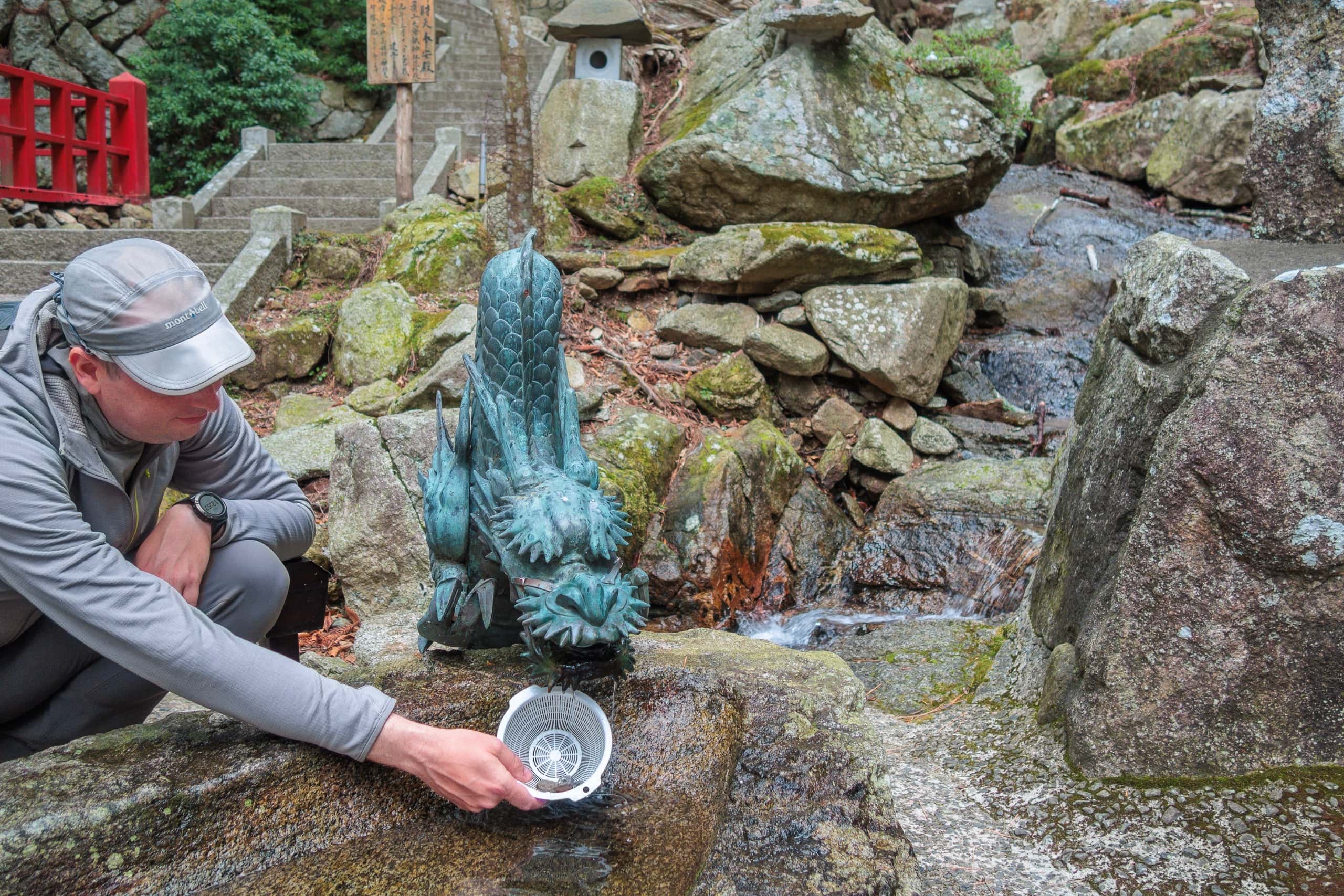
We didn’t have enough courage to wash bills without damaging them, but we saw a young couple on a date pull out a 10000 yen bill and wash it wholeheartedly.
As we were walking down to the ferry landing area, the rain started.
We had told our water taxi in the morning that we should be done by 1 or 2 pm. We returned to the sea level at 1:10 pm and found our boat was already waiting for us. People in the Onagawa port ferry team were also coming back by twos and threes for their regular departure time of 1:30 pm.
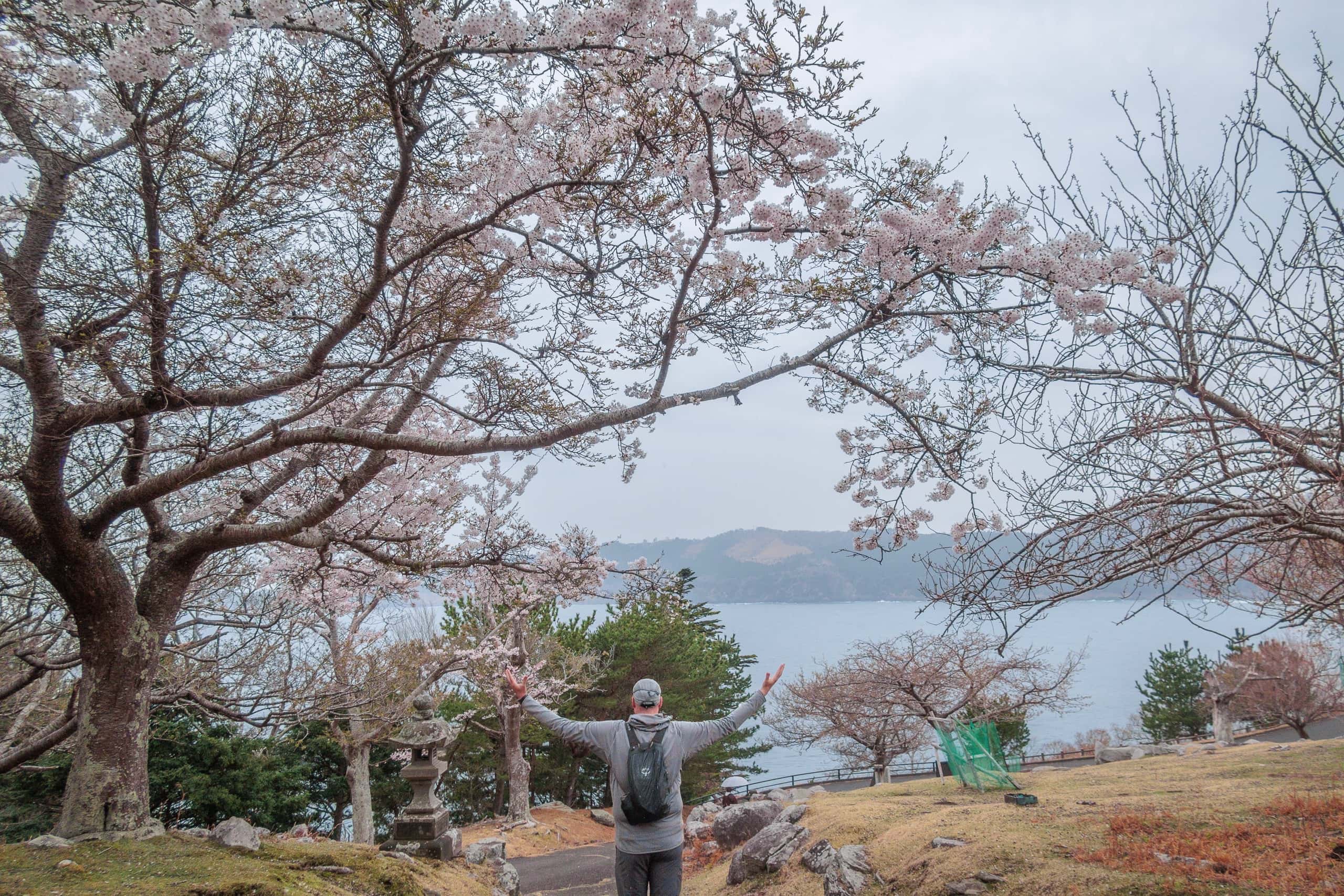
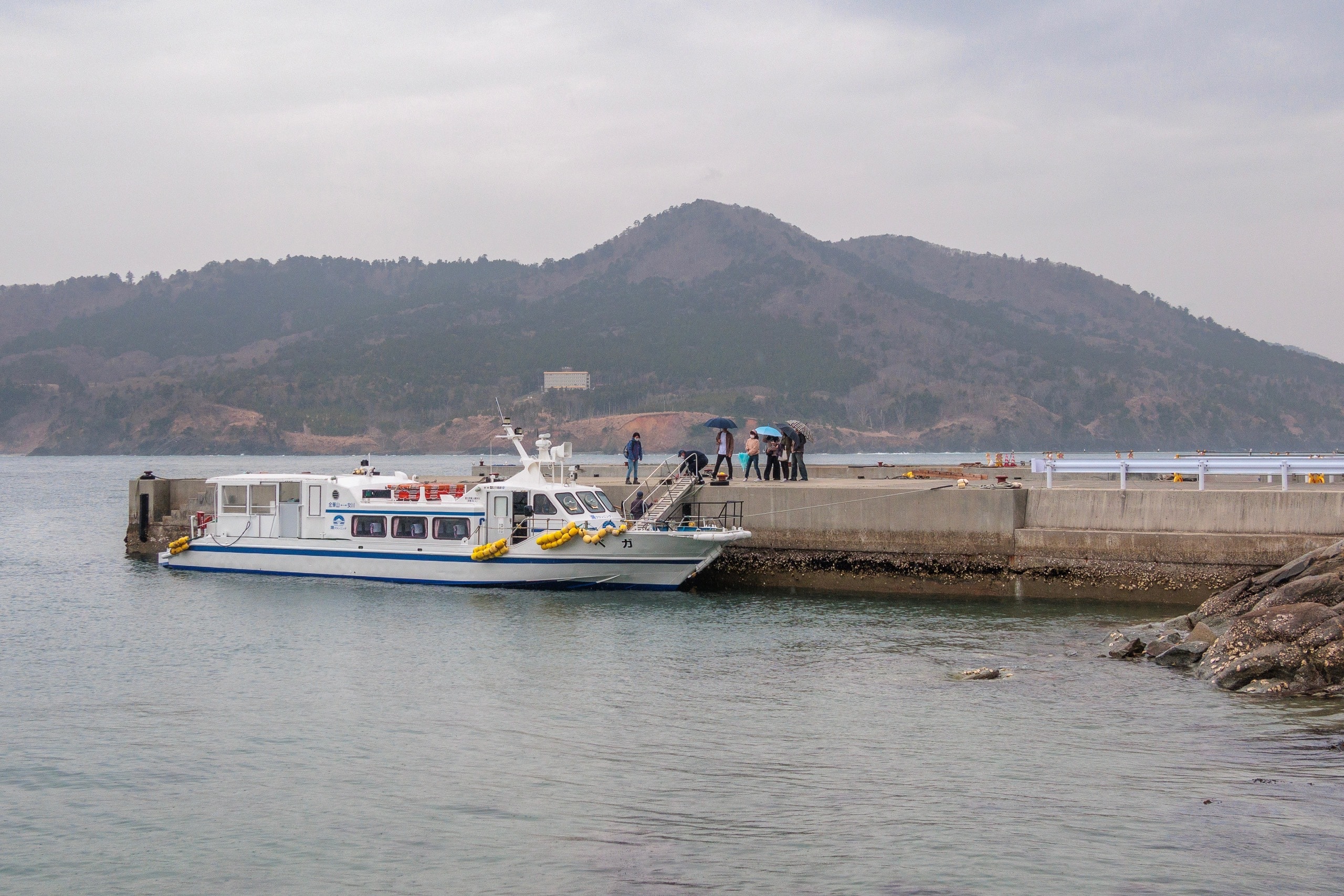
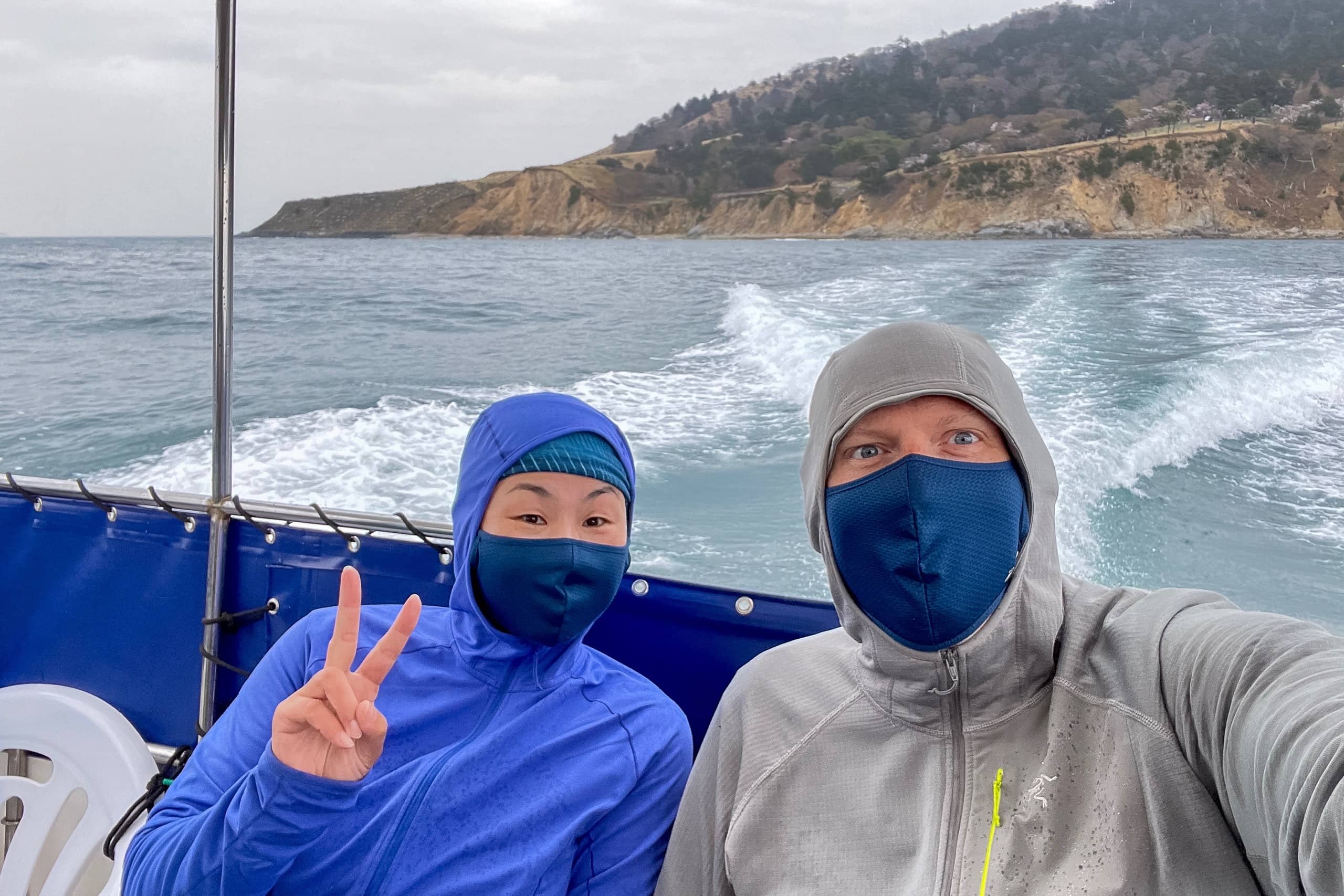
Sea waves looked significantly wilder now, and our boat was almost hopping on the water, leaving quickly behind Mt. Kinkasan Island, as my butt was bouncing on the chair in another rollercoaster situation. But actually, I enjoyed it.
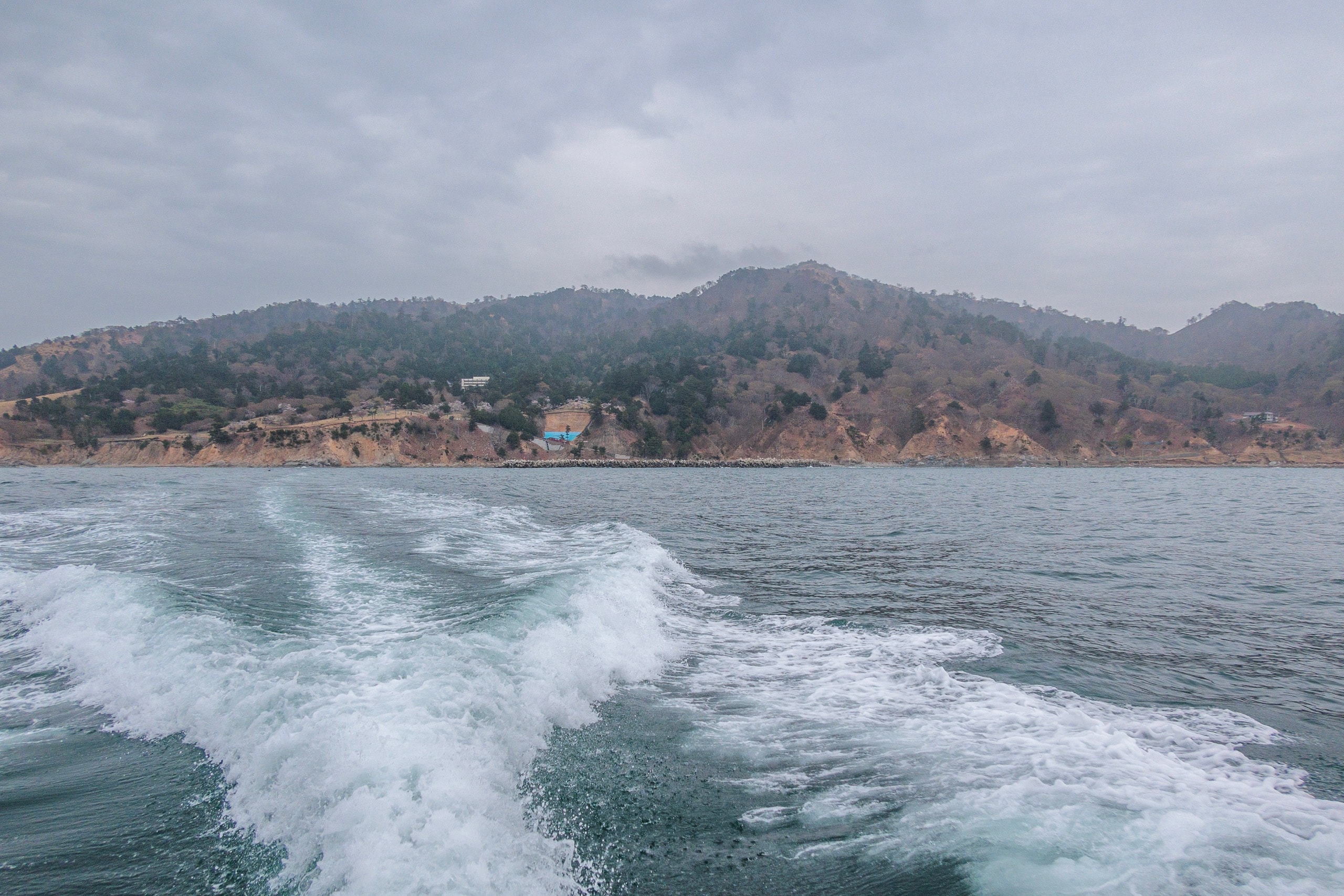
Back to Ayukawa and Extra 2.5km walk
Arriving at the Ayukawa port and saying goodbye to the boat crew, they gave us gift bags containing local signature seafood crackers and bottles of tea with very sincere “thank you for boarding today.”
As we estimated, more than 100 or even 160 minutes were needed to hike the MCT route on Mt. Kinkasan Island. From getting off our boat at the Kinkasan ferry landing area at 9:15 am till leaving the island at 1:16 pm after hiking the MCT route and enjoying the shrine and deer, but not taking long breaks for lunch or tea — it was 4 hours straight.
We entered the Whale Town Oshika building to look for anything interesting besides the ferry/water taxi ticketing office. A couple of restaurants were open, and we had late lunch at one of them.
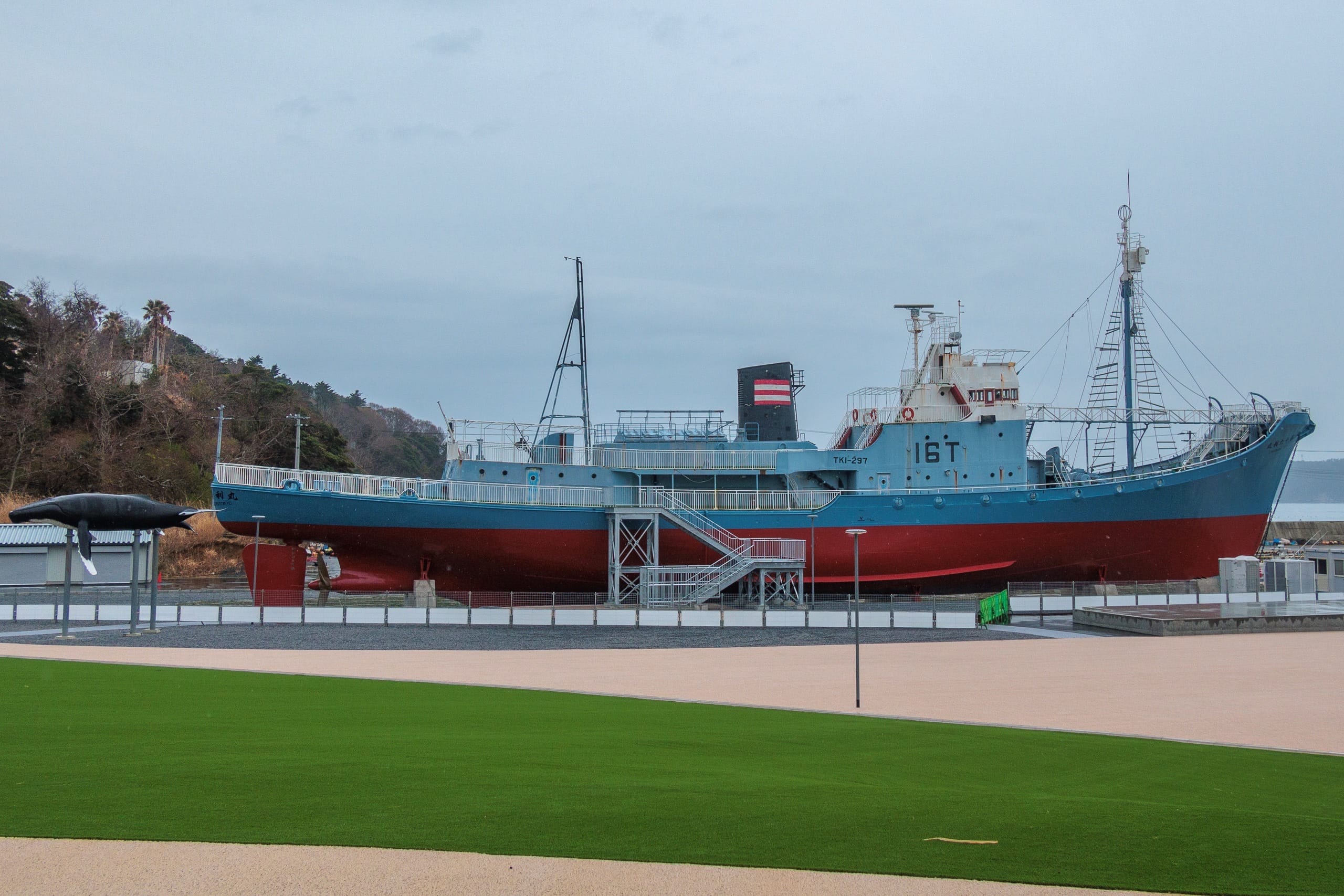
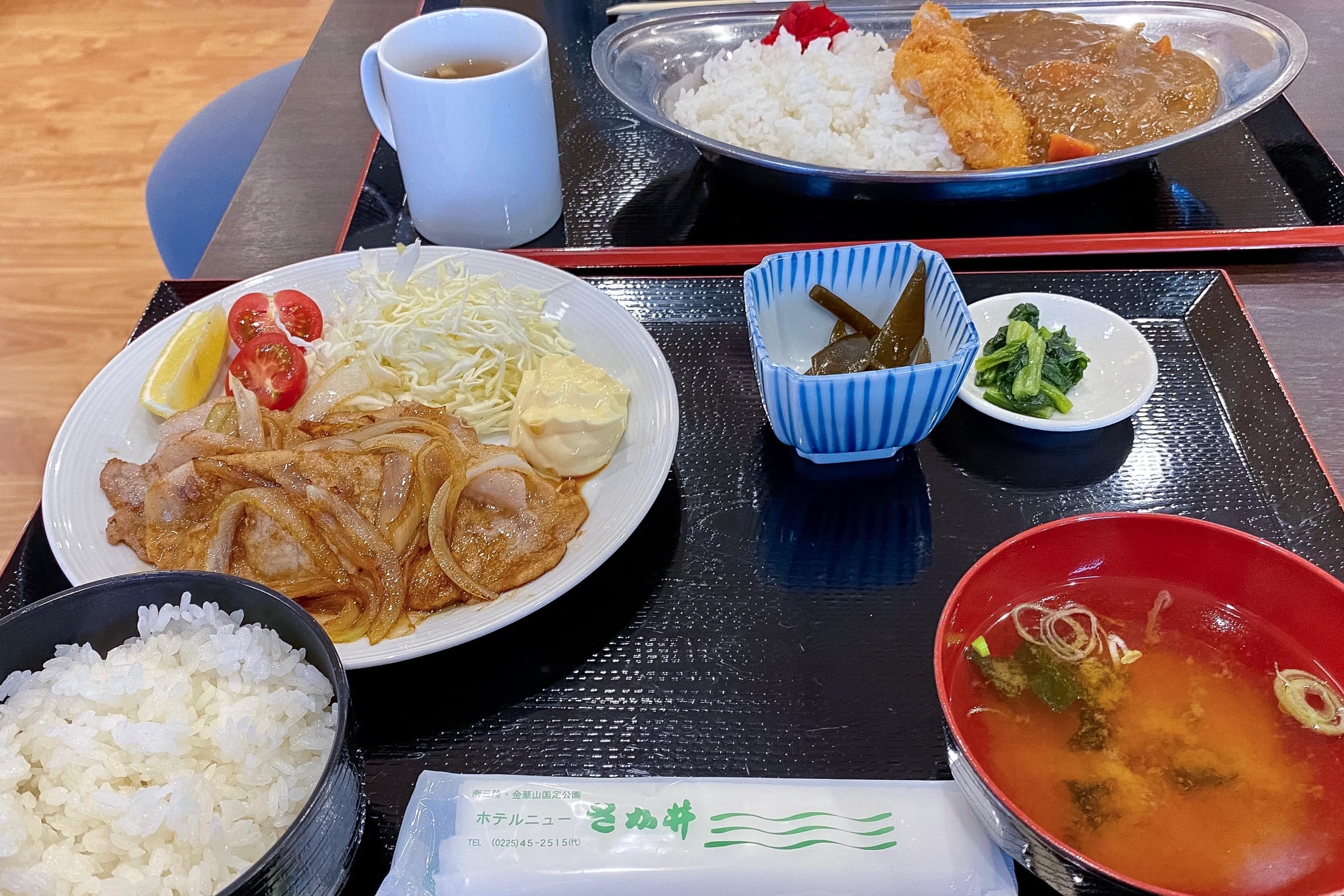
The Oshika Peninsula visitor center had a special section dedicated to the MCT route on the peninsula. We also found various leech repellent and removers for sale at a corner of the visitor center, which made us quite nervous as we remembered our unforgettable memories about leeches on the Iseji route of Kumano Kodo…
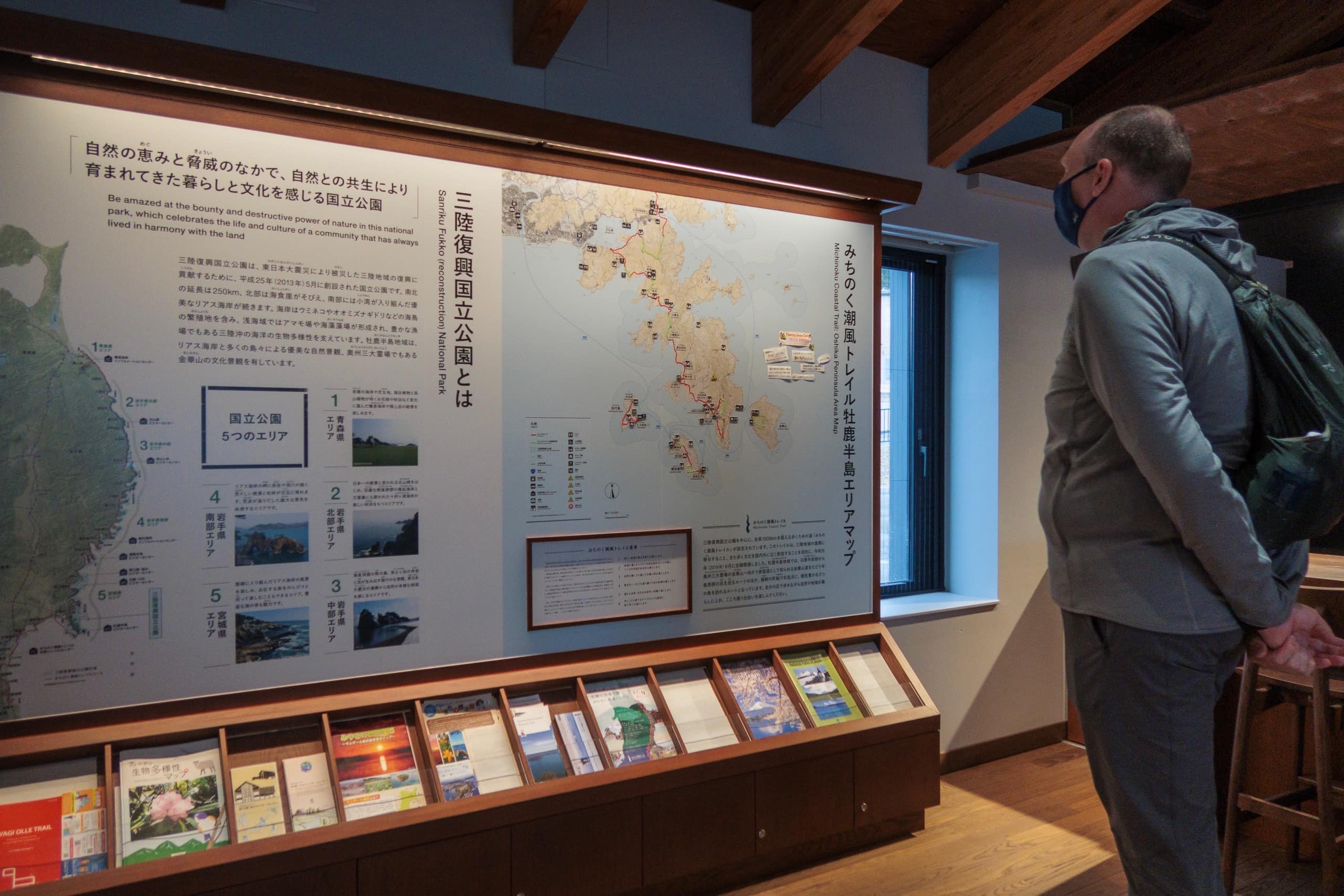
We skipped visiting the small whale museum that took up the biggest space in the building because we had been to enough whale museums in our home region, Shikoku.
Then we left the port area and walked up the main car road toward our hotel. It was raining only slightly, so there was no need for umbrellas.
The first 450m of the road with a sidewalk went through the fishermen’s houses and connected to a quiet car road called Cobalt Line, running along the hillside and looking down the ocean.
We kept walking up on the Cobalt Line until the road turned around the southern edge of the peninsula hill and had a small viewpoint parking area. A big further up from the viewpoint, we stopped at a fork where another road to the top of the hill branching off from the Cobalt Line.
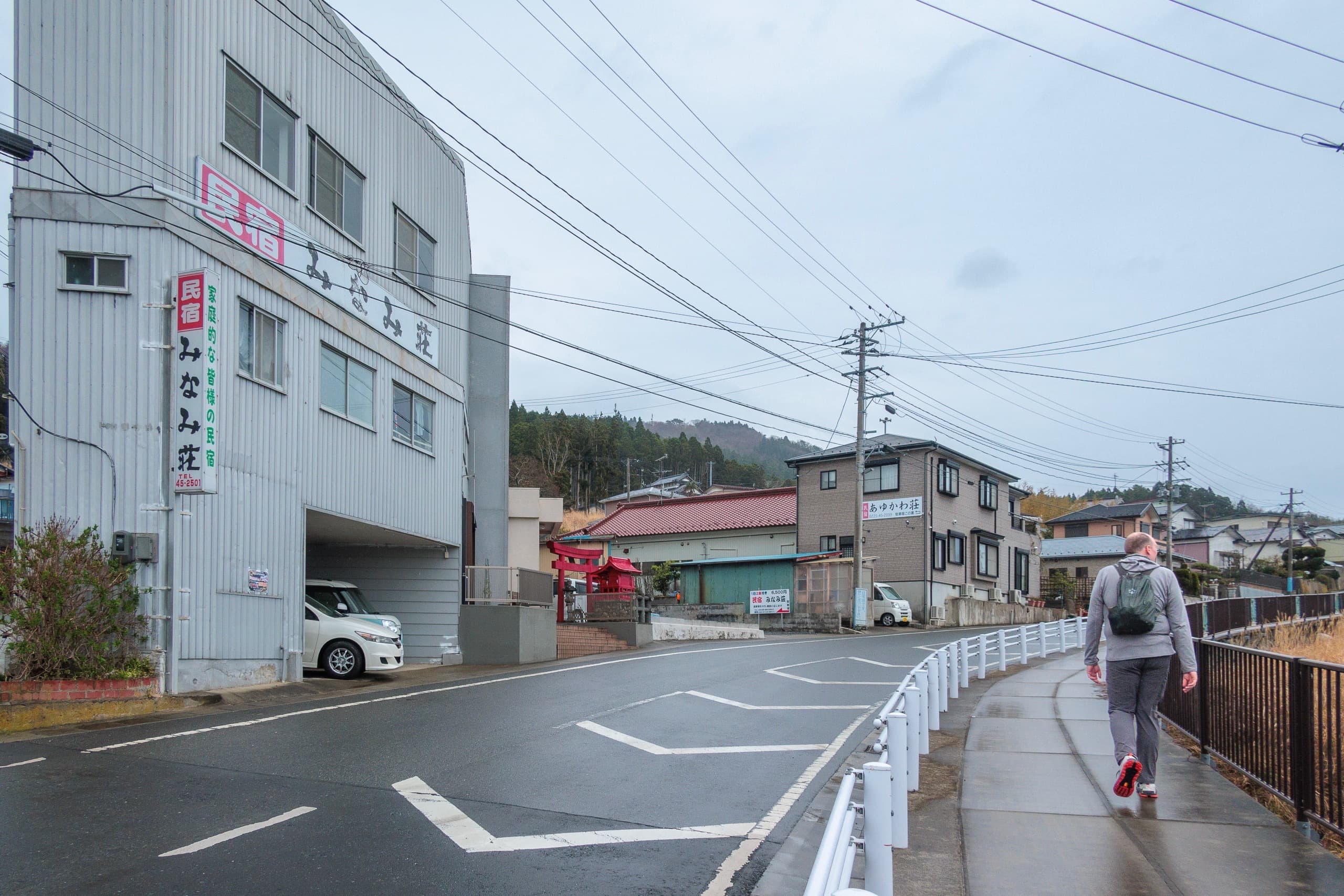
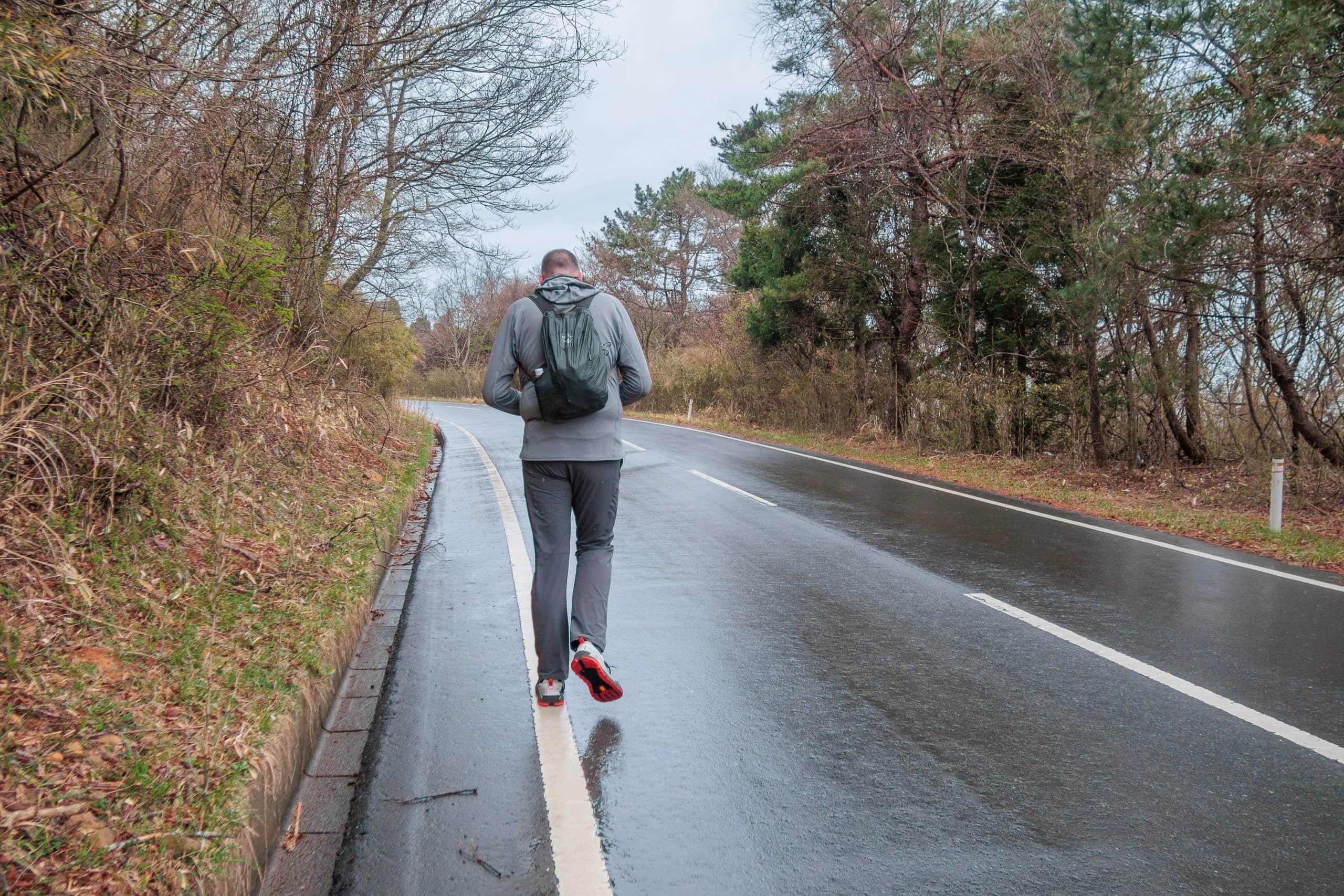
About 2.5km from the port to this fork was a part of the MCT route.
We had already made a call to our hotel to come to pick us up there and they will drop us off here again after checking out tomorrow morning. So, we don’t have to go all the way to the port and save the 2.5km uphill worth of energy, as tomorrow is another long day, and the weather forecast doesn’t look good.
The hotel pick-up car came to us quickly, and by 3:30 pm, we were back in our hotel room and relaxed.
We and another solo man were the only guests at the hotel for the last two days, so the big onsen was all ours. A long and relaxing soak in a big hot onsen after walking in the chilly wind and getting a lot of mists of rain and waves. We could ask for nothing better.
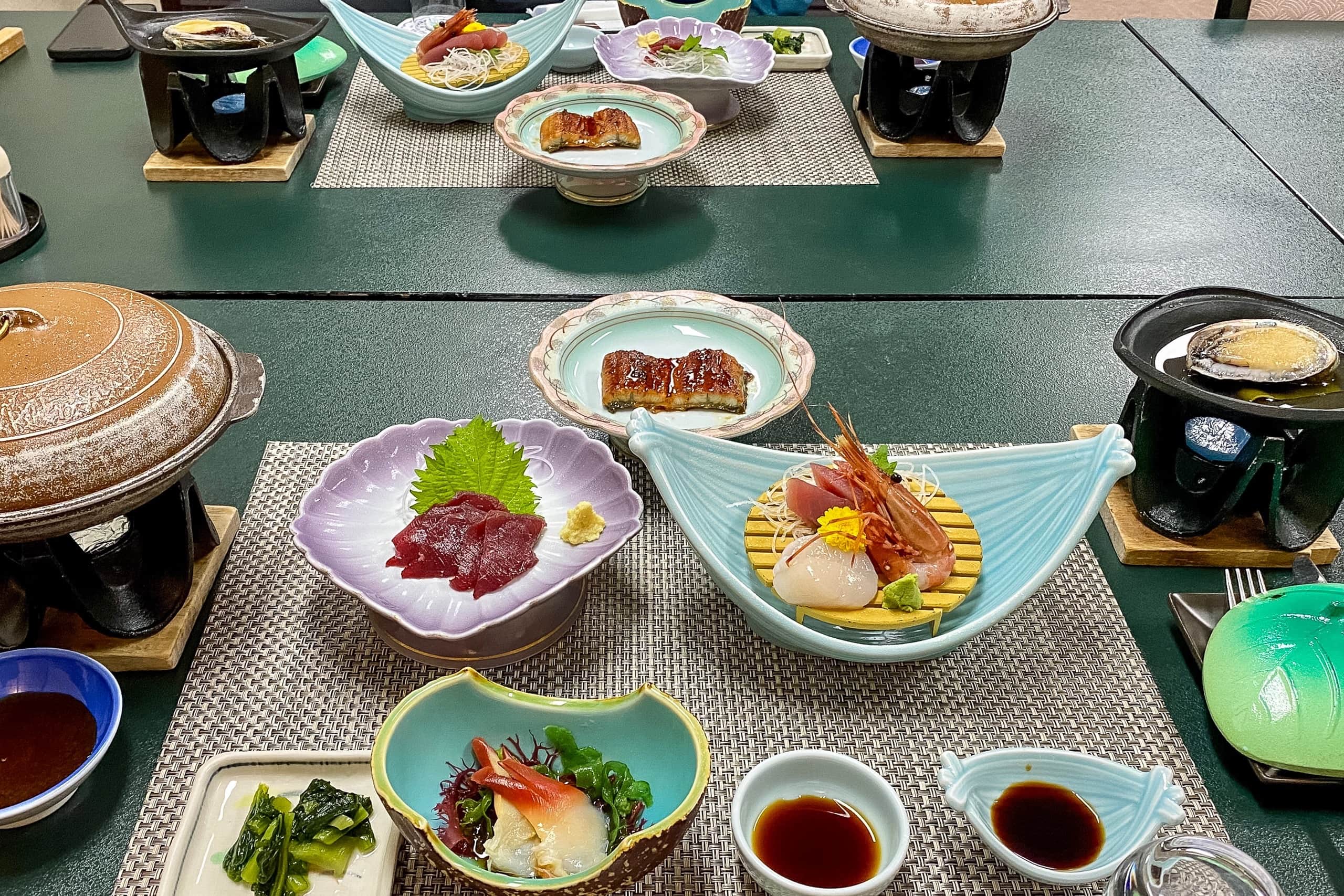

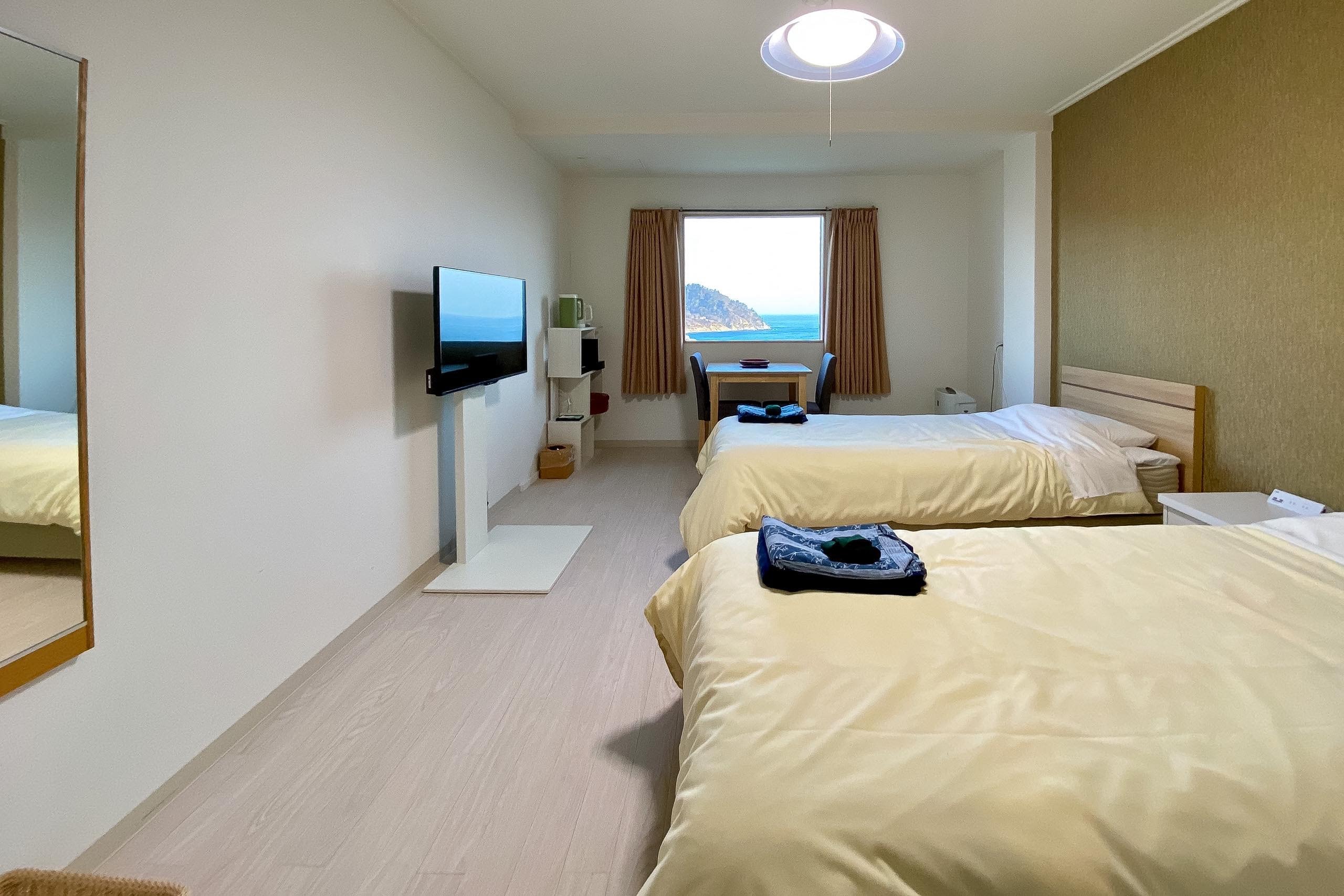
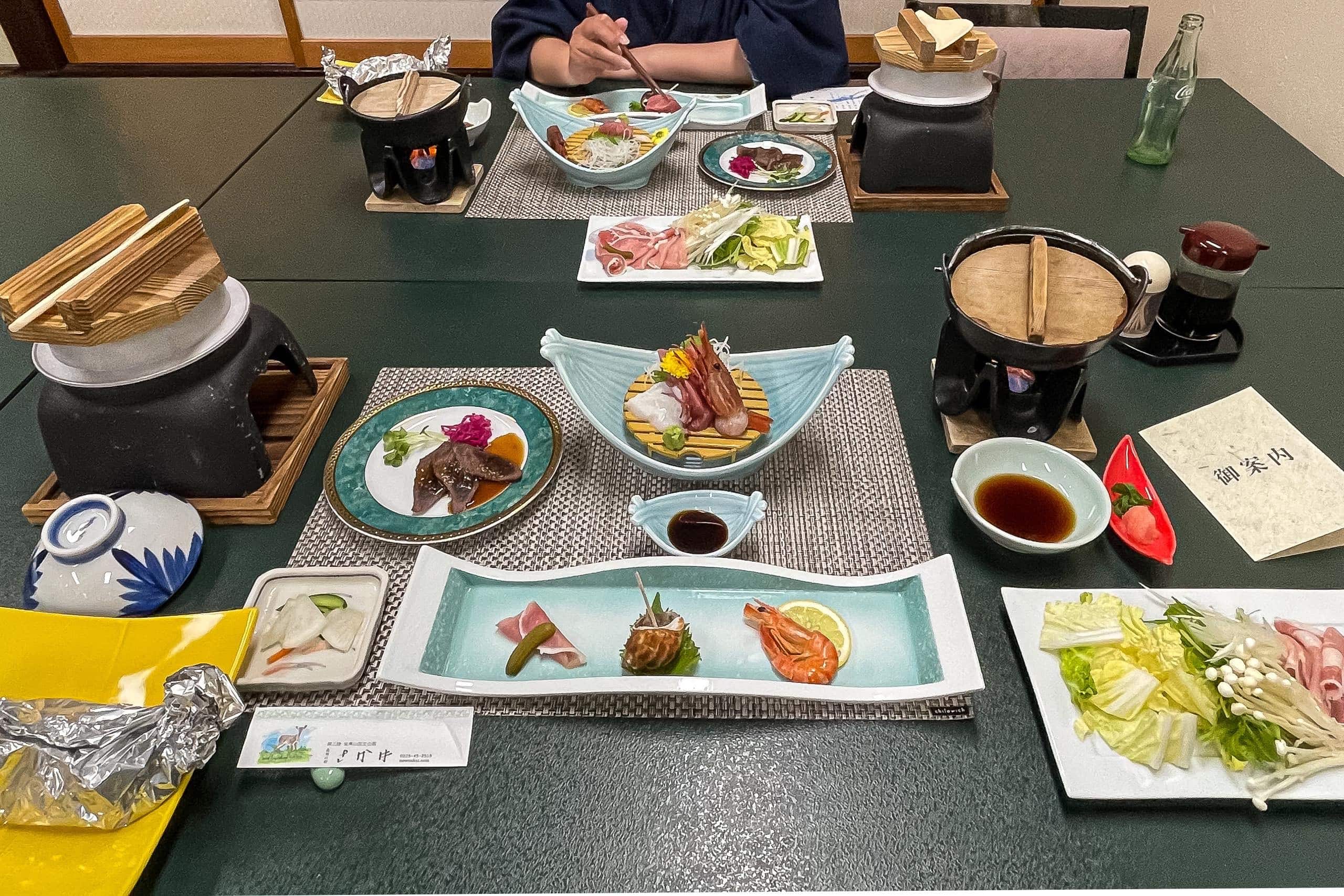
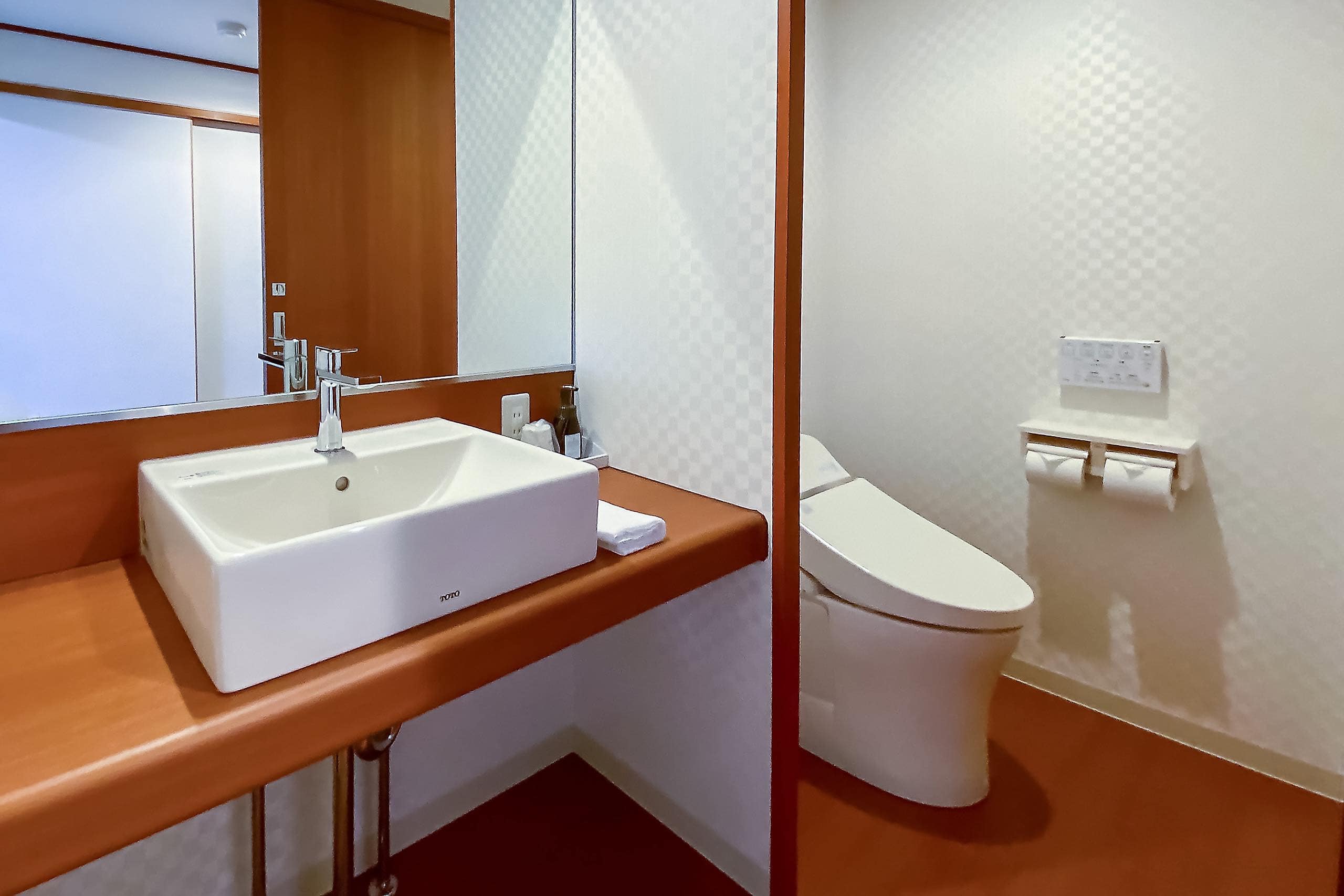
We felt relieved as we finished all islands sections now.
From here onward, we won’t have any more complicated planning and booking to make along the MCT—no more fears of getting stuck on an island in the ocean.
All we need to do is just walk forward to the north.
Day 10 – MCT
| Start | Ayukawa Port |
| Distance | 20.4km |
| Elevation Gain/Loss | 612m/486m |
| Finish | Cobalt Line Viewpoint Parking |
| Time | 6h 11m |
| Highest/Lowest Altitude | 444m/ 0m |
Route Data
The Michinoku Coastal Trail Thru-hike : Late March – Mid-May 2021
- The first and most reliable information source about MCT is the official website
- For updates on detours, route changes, and trail closures on the MCT route
- Get the MCT Official Hiking Map Books
- Download the route GPS data provided by MCT Trail Club
- MCT hiking challengers/alumni registration



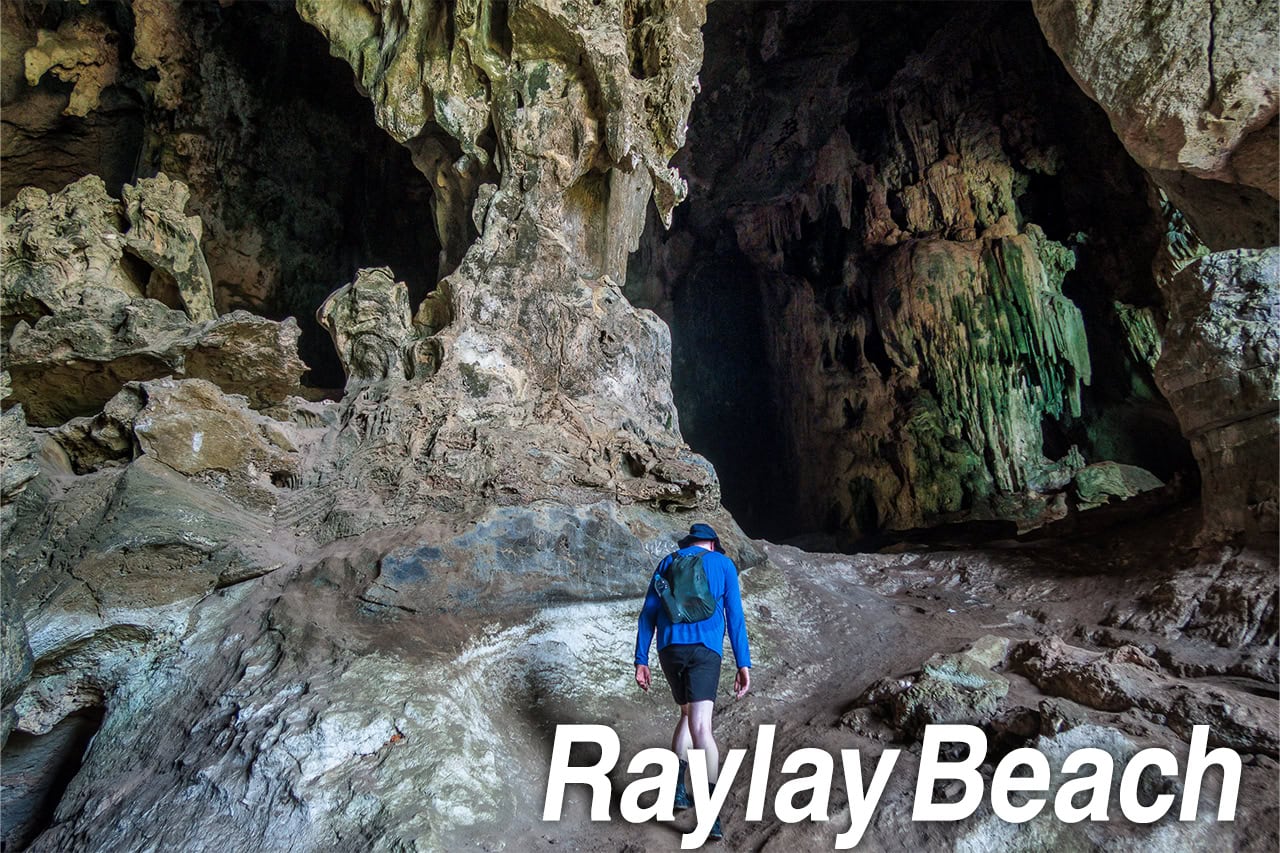
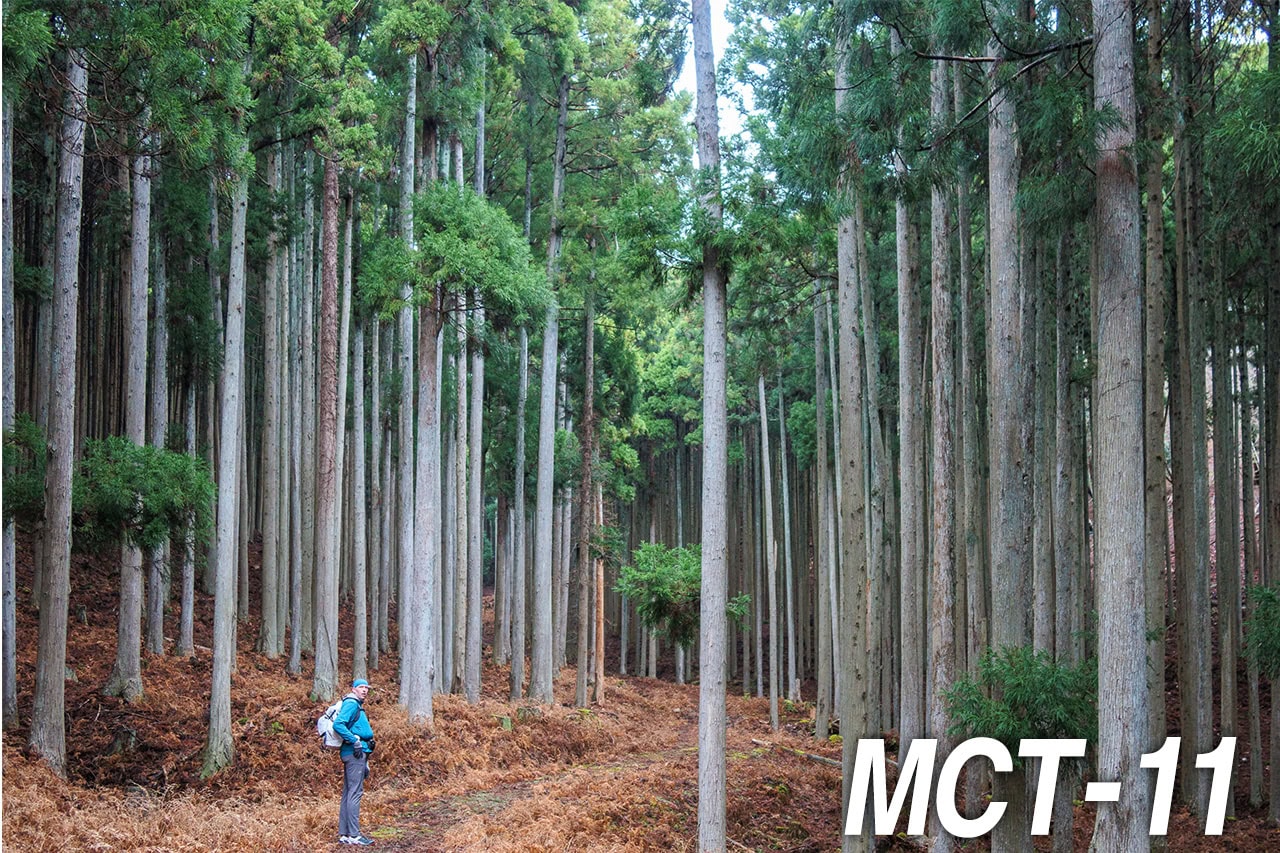
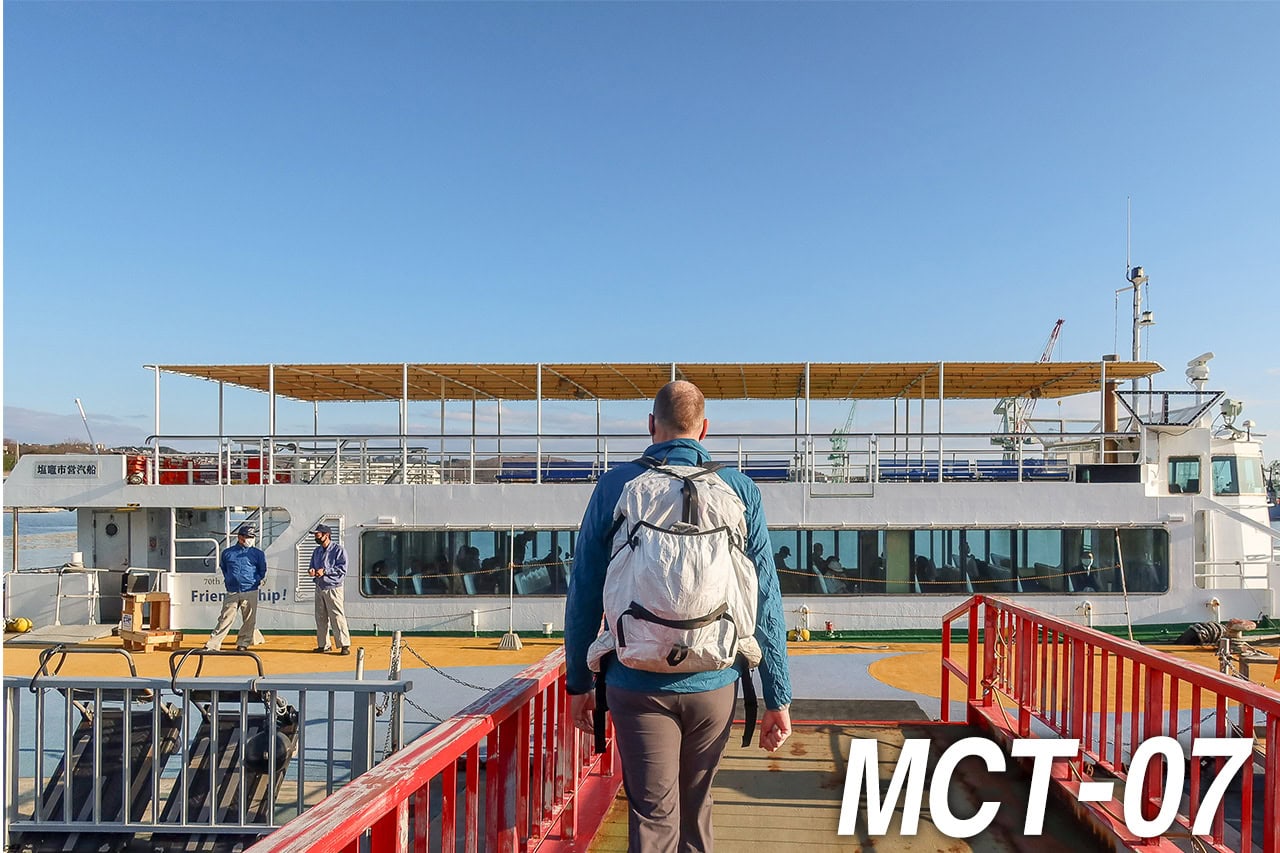
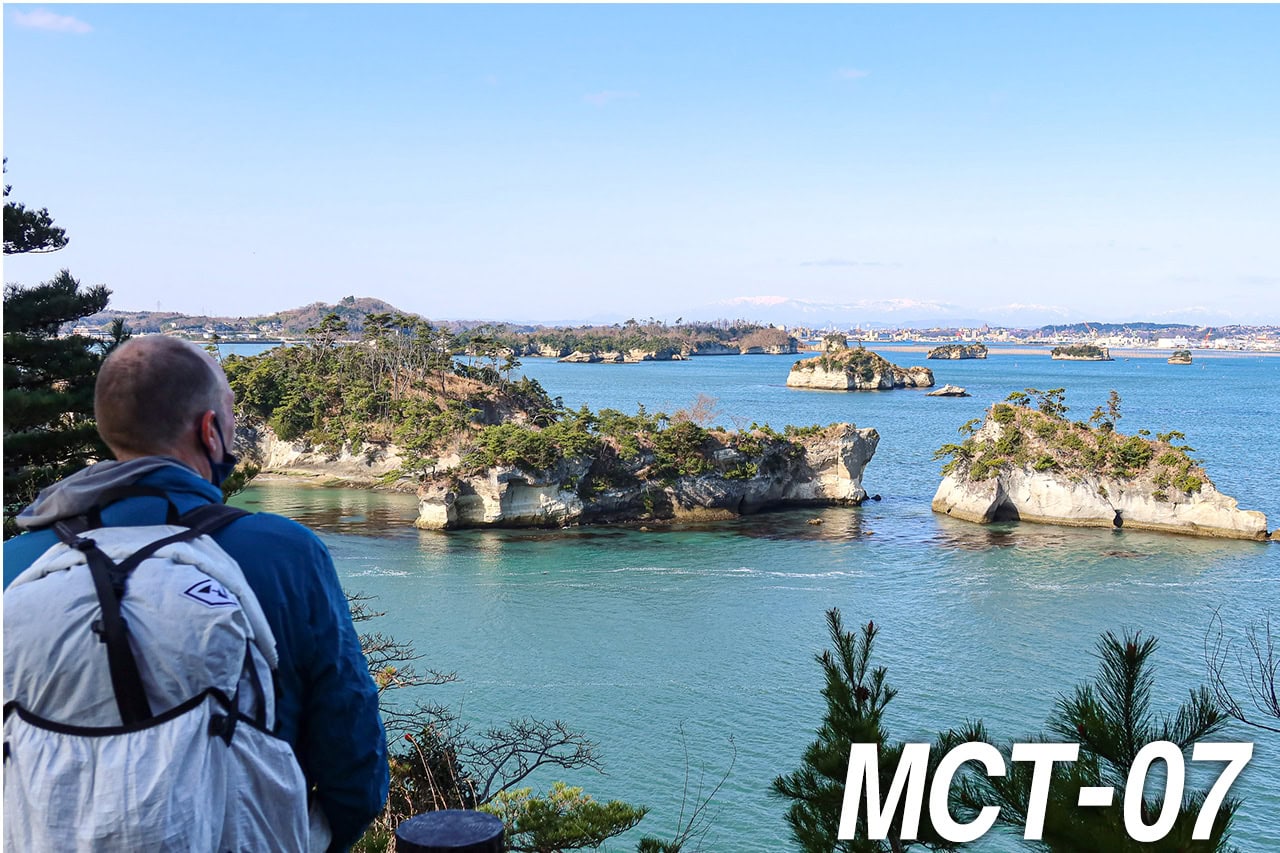
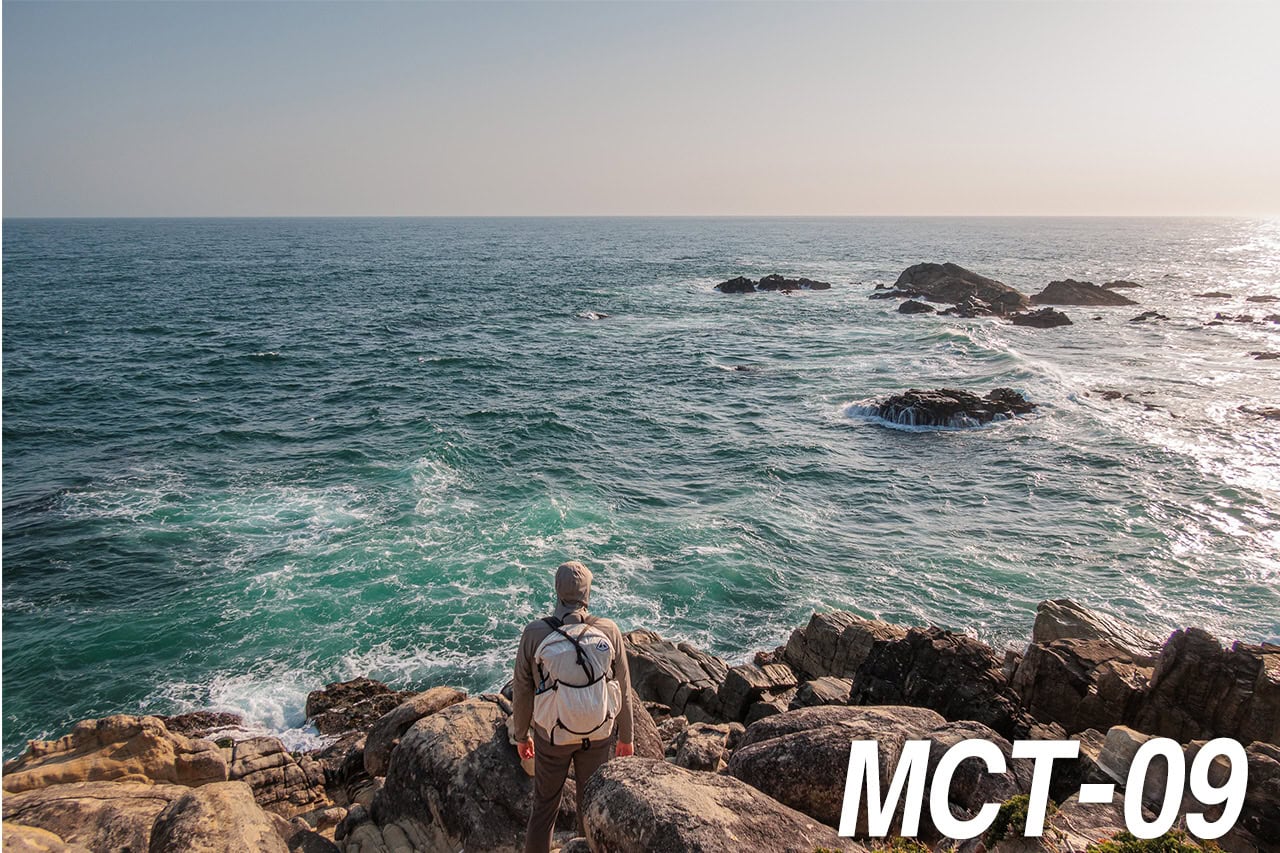
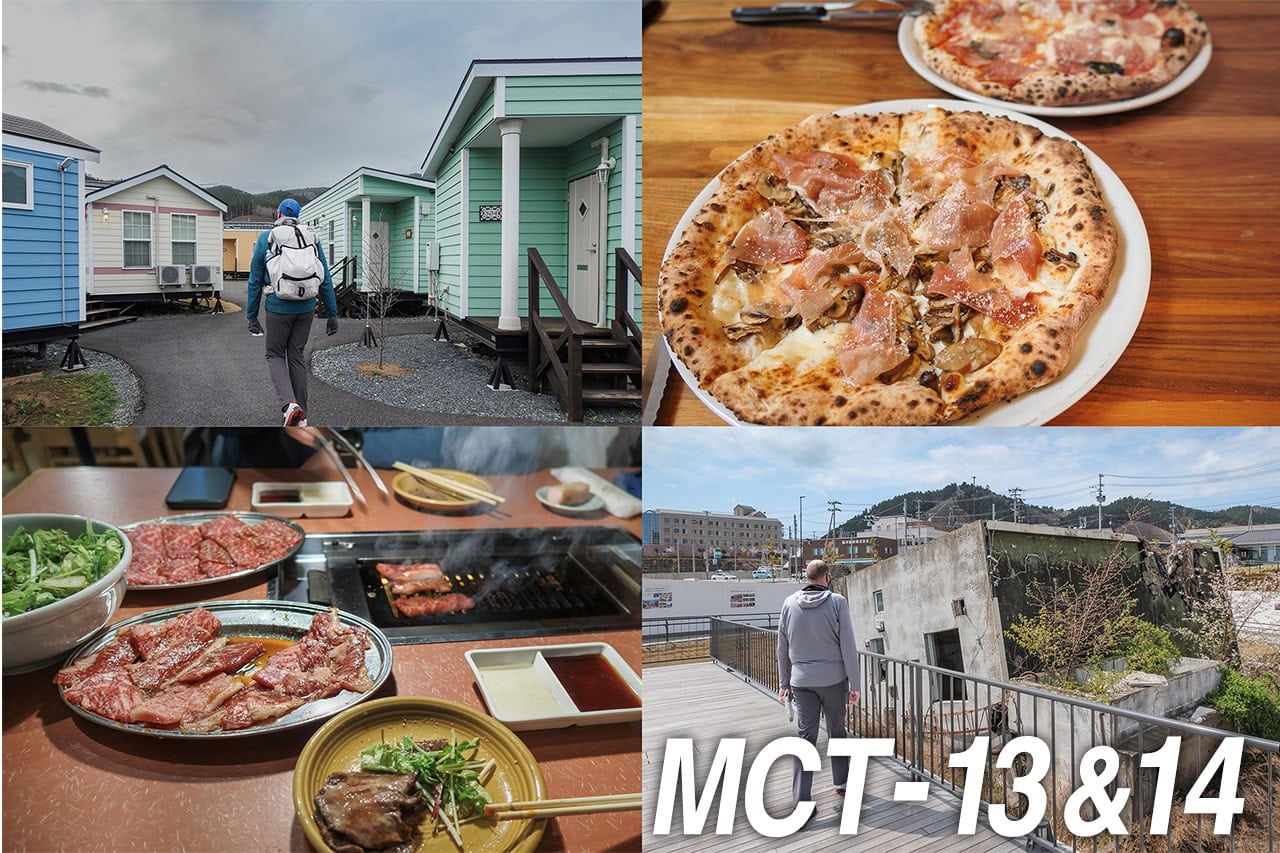

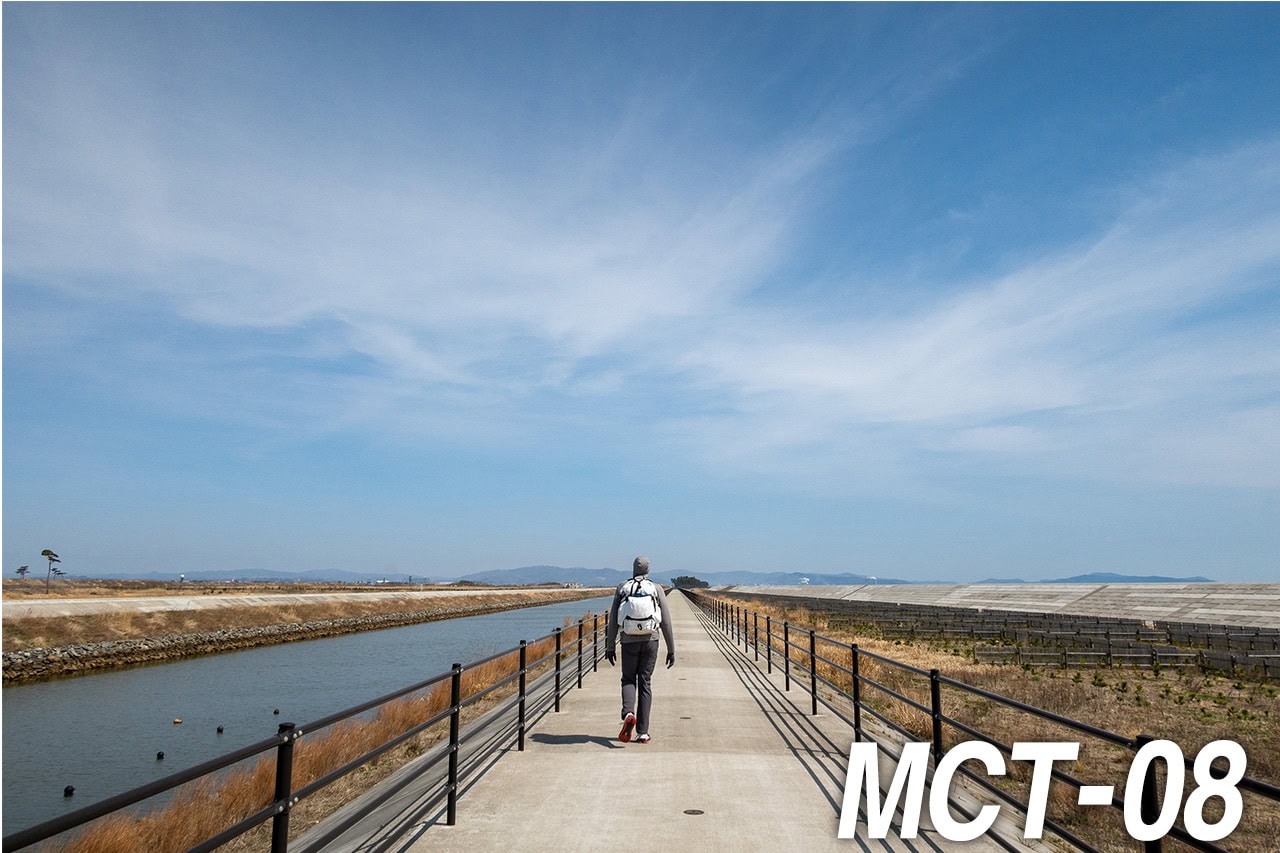
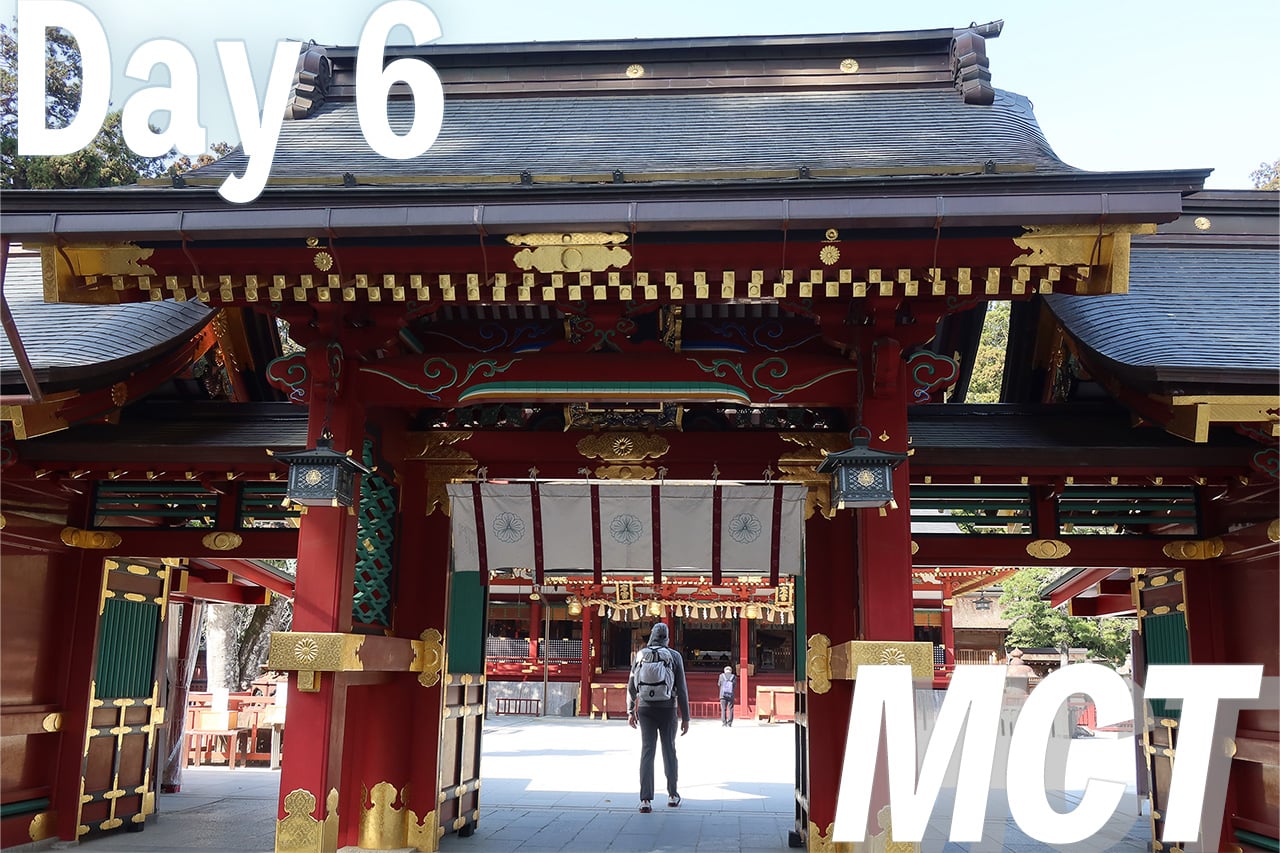
Comments